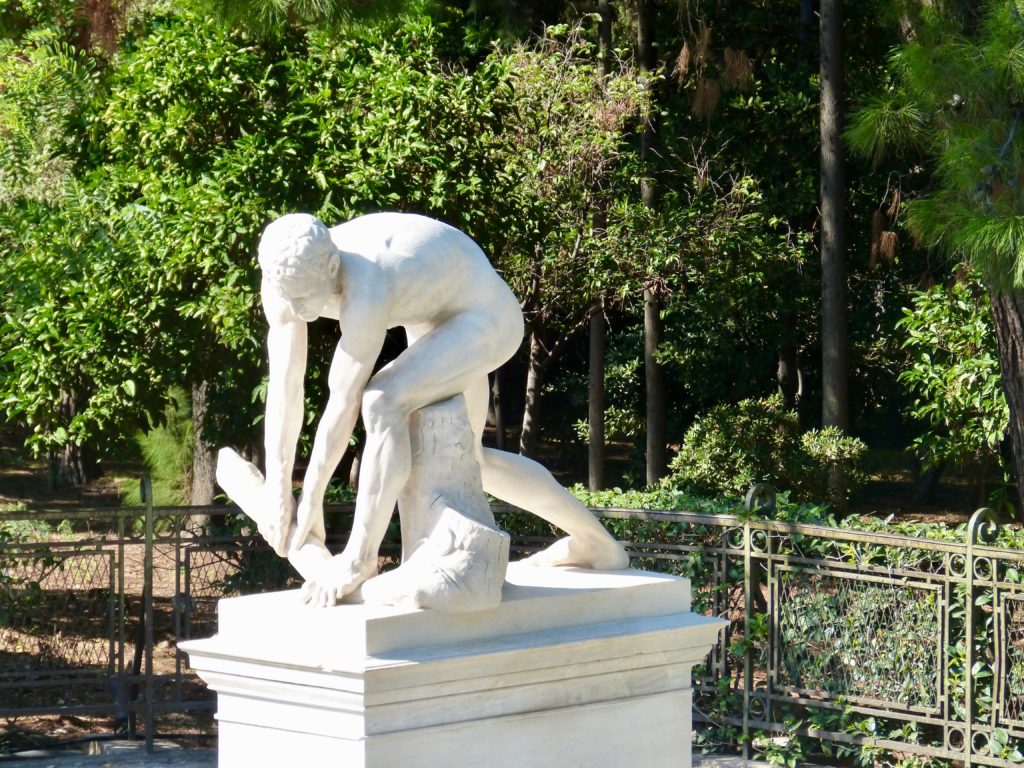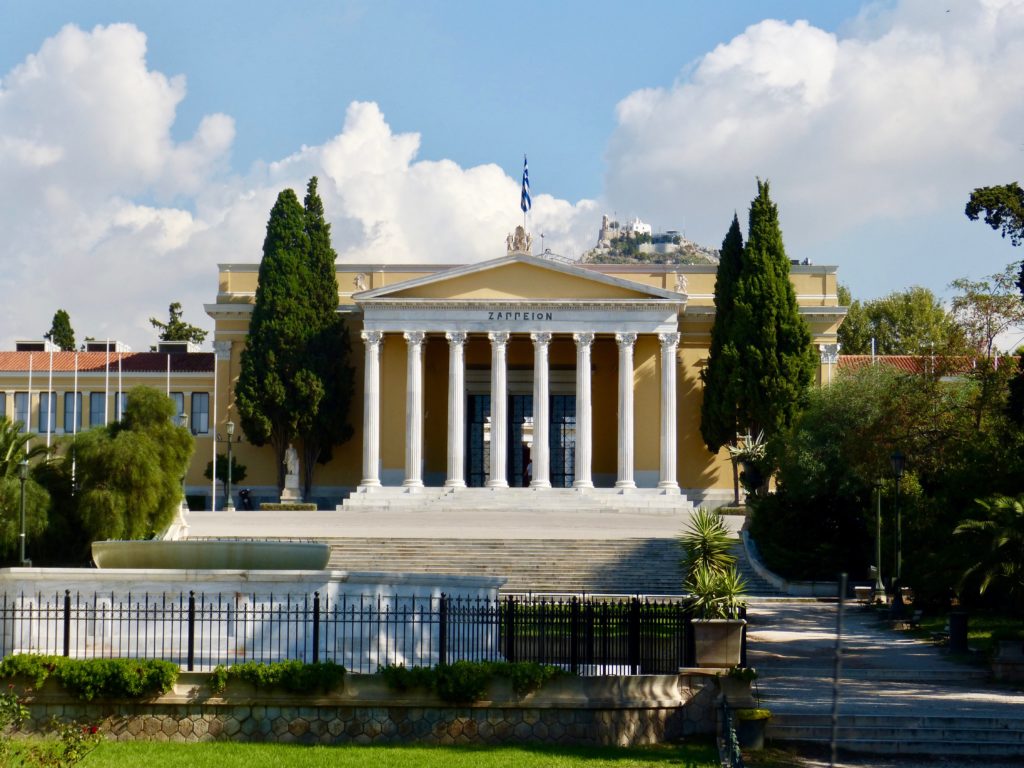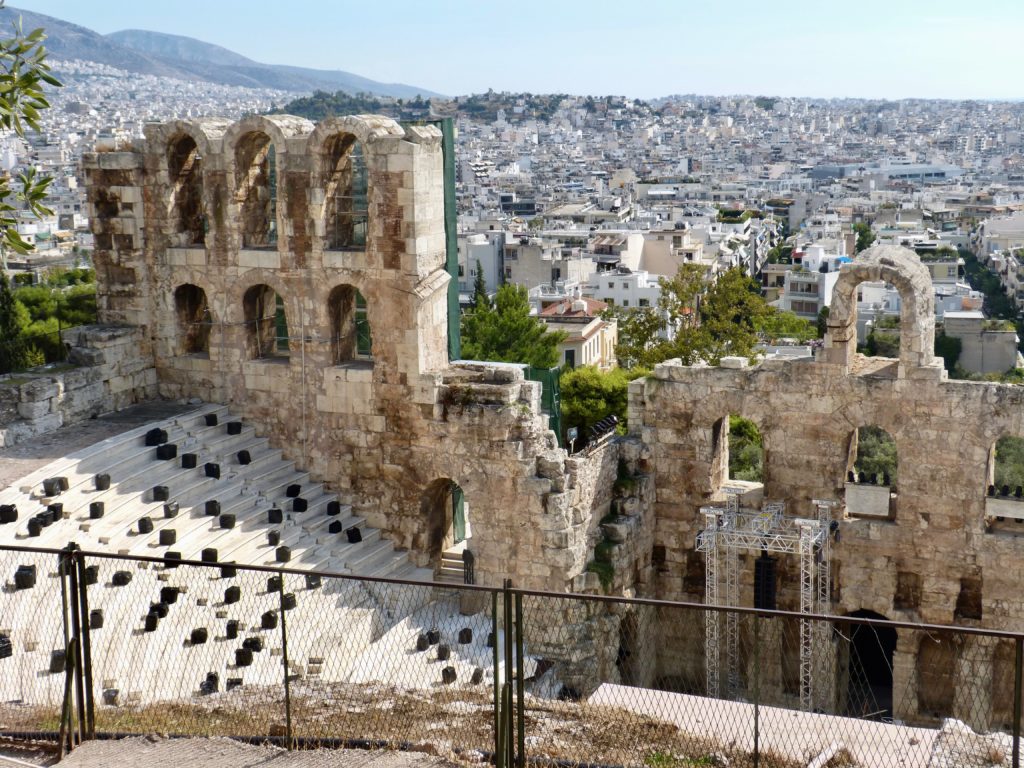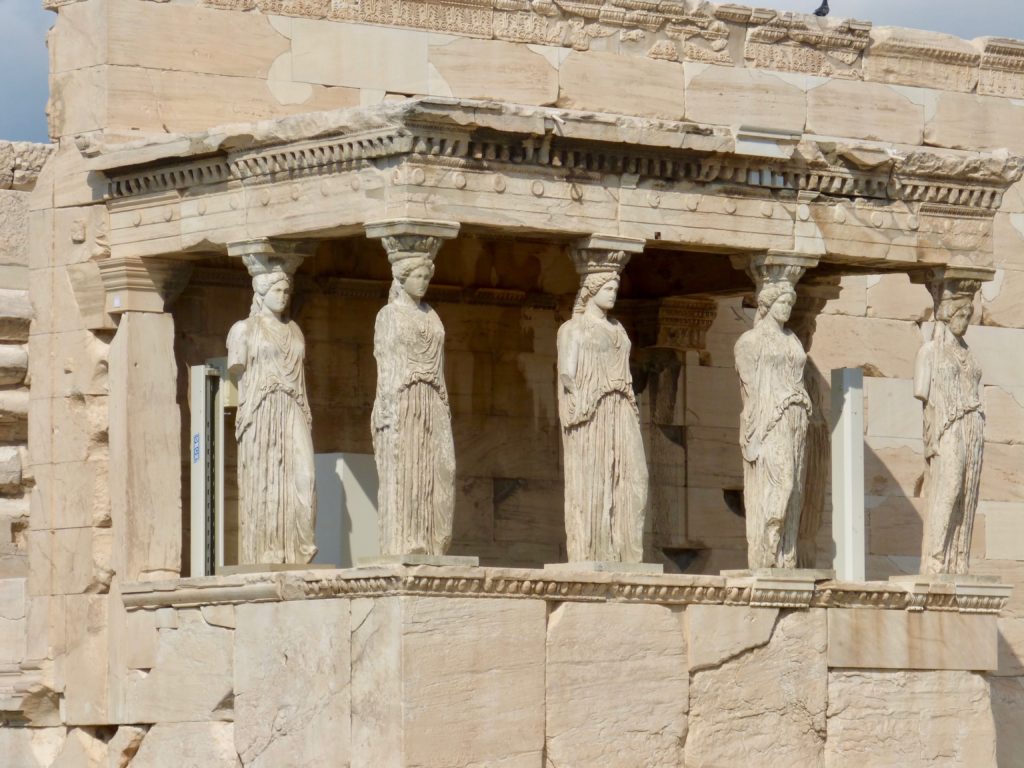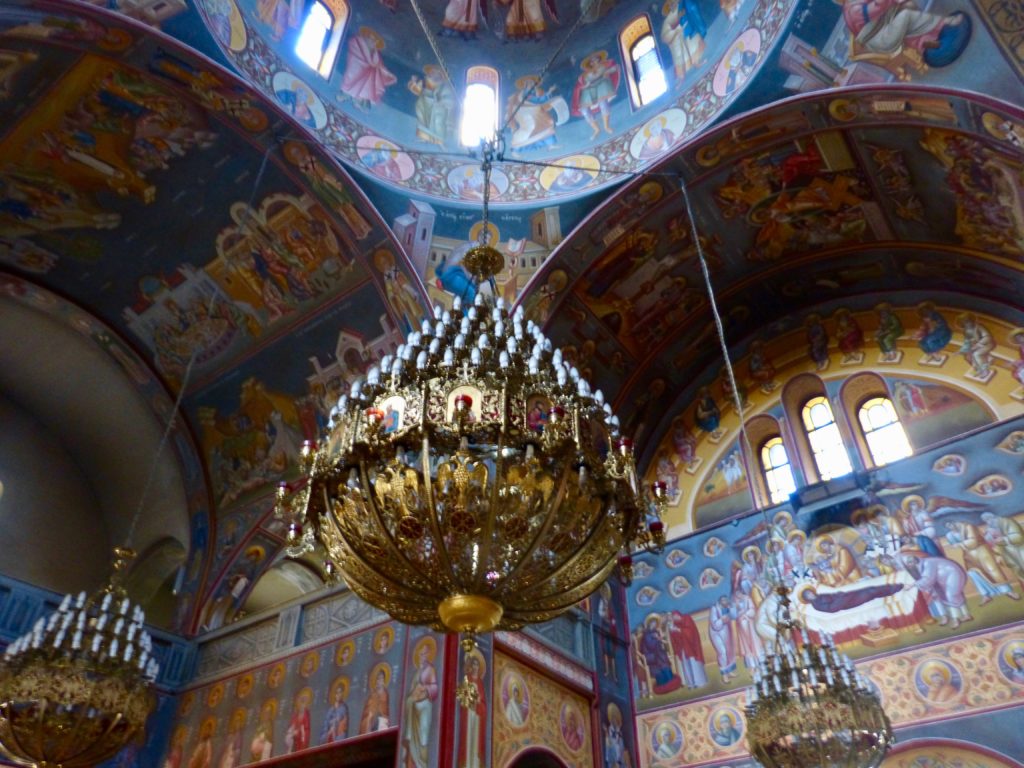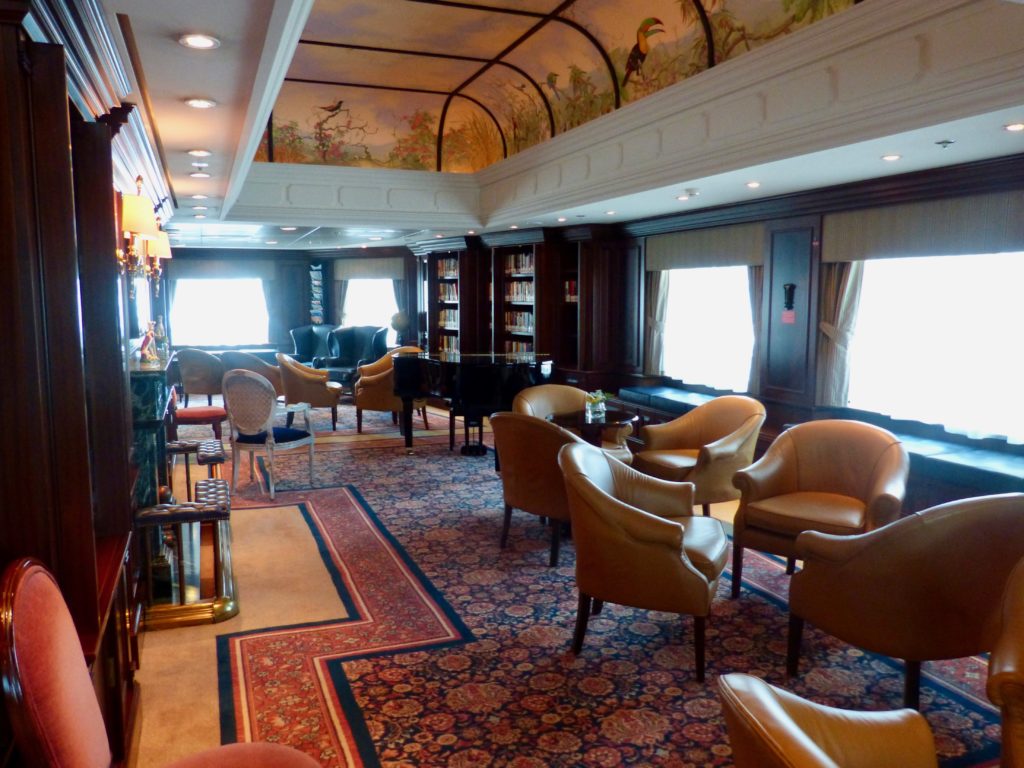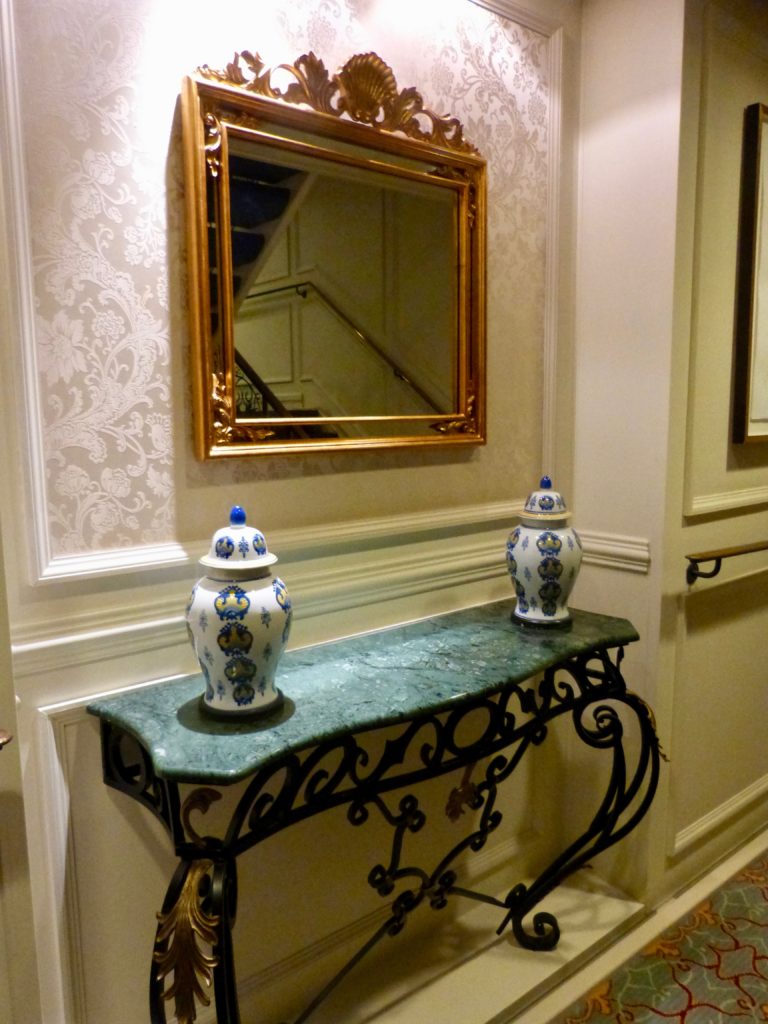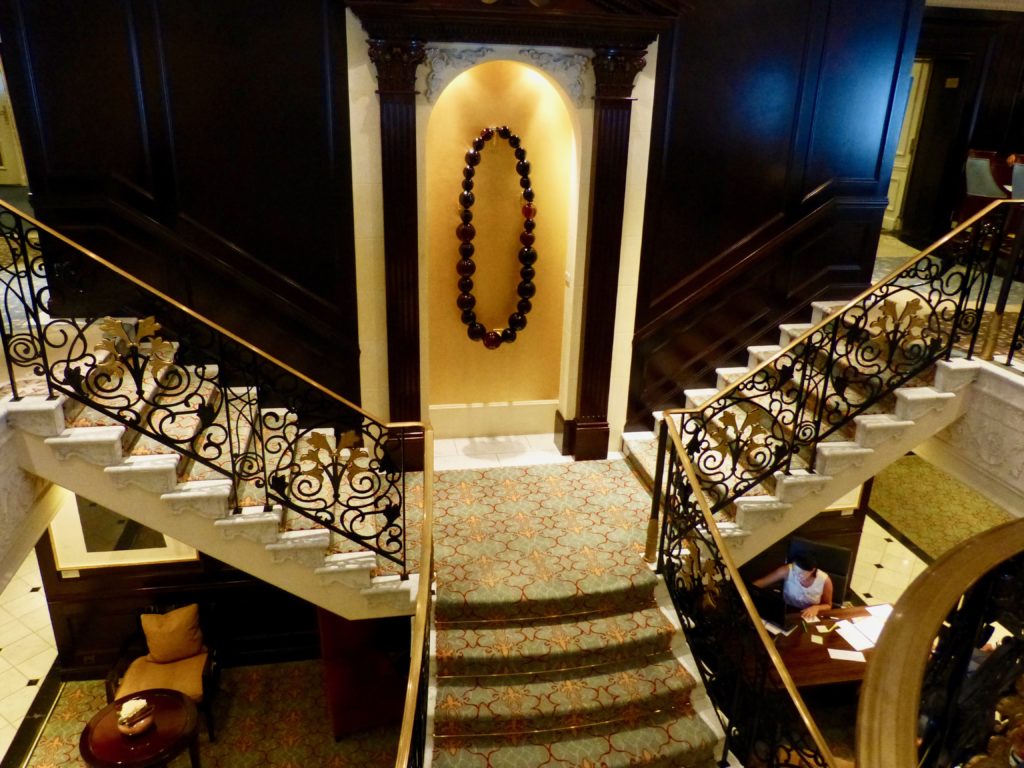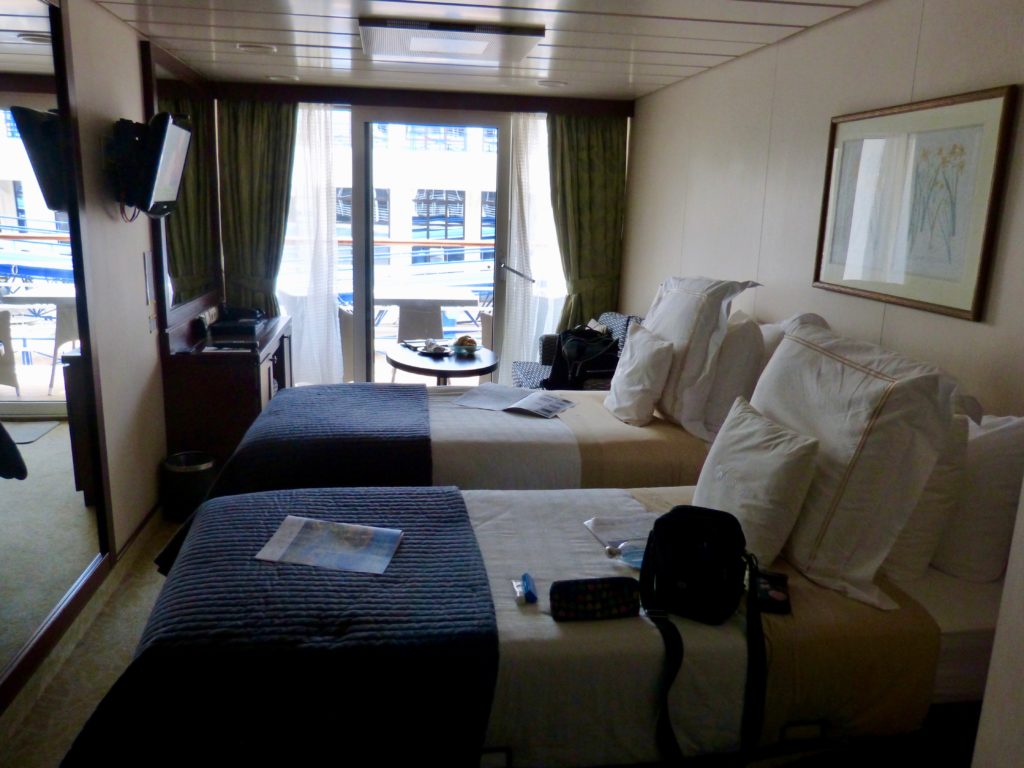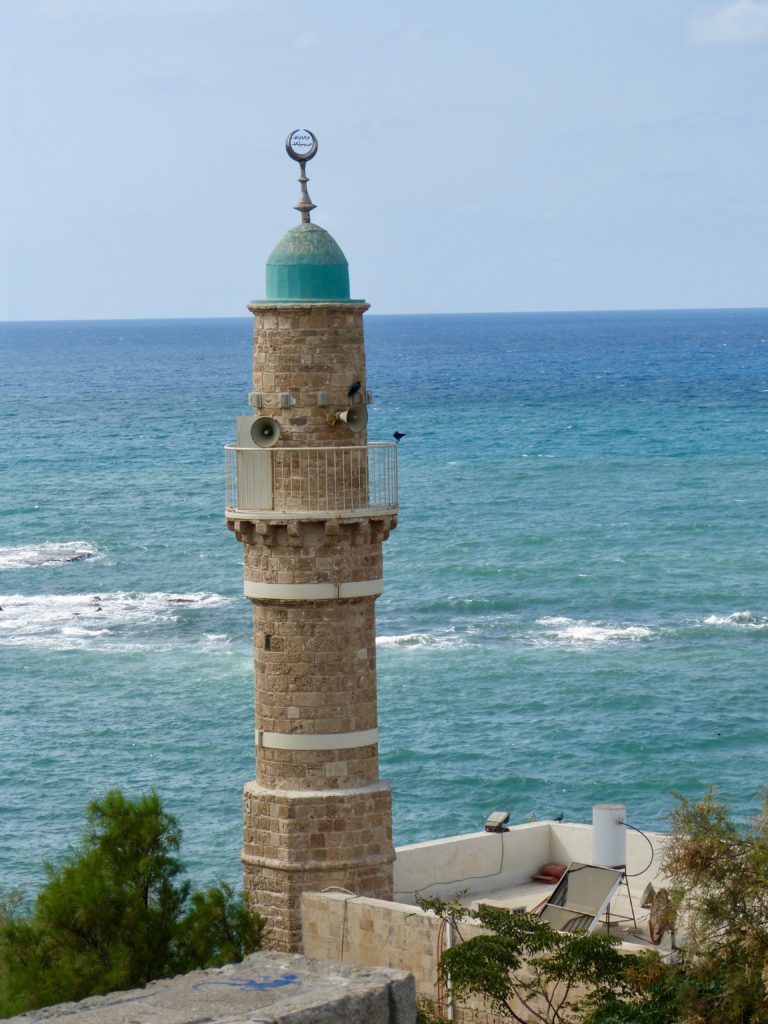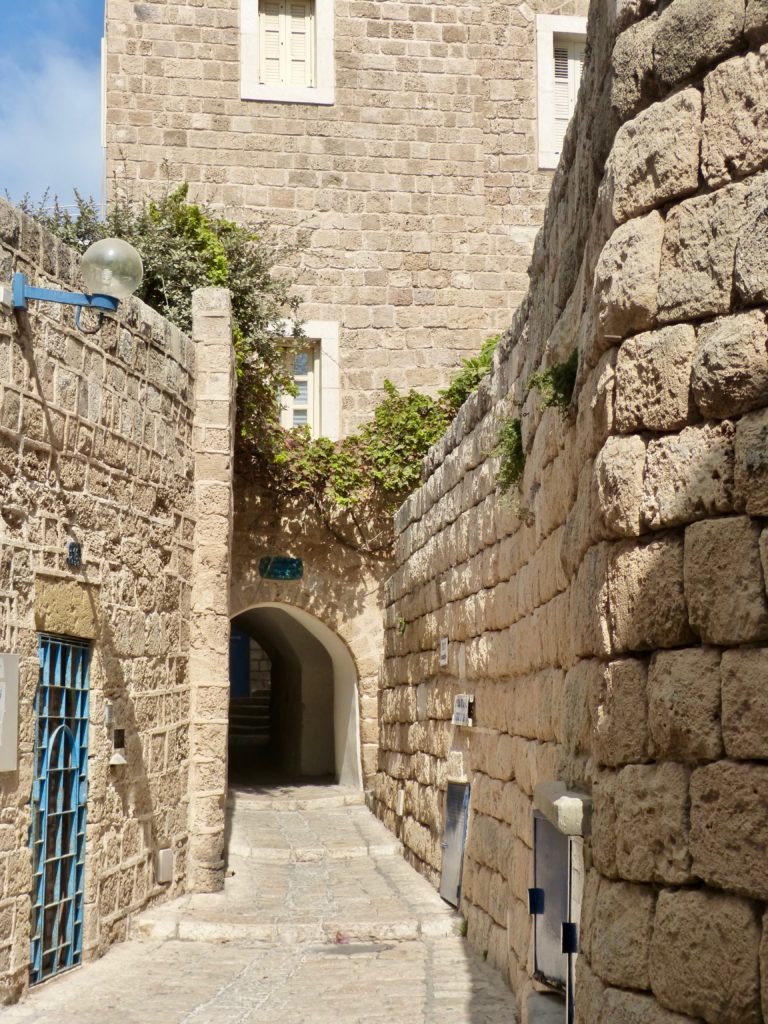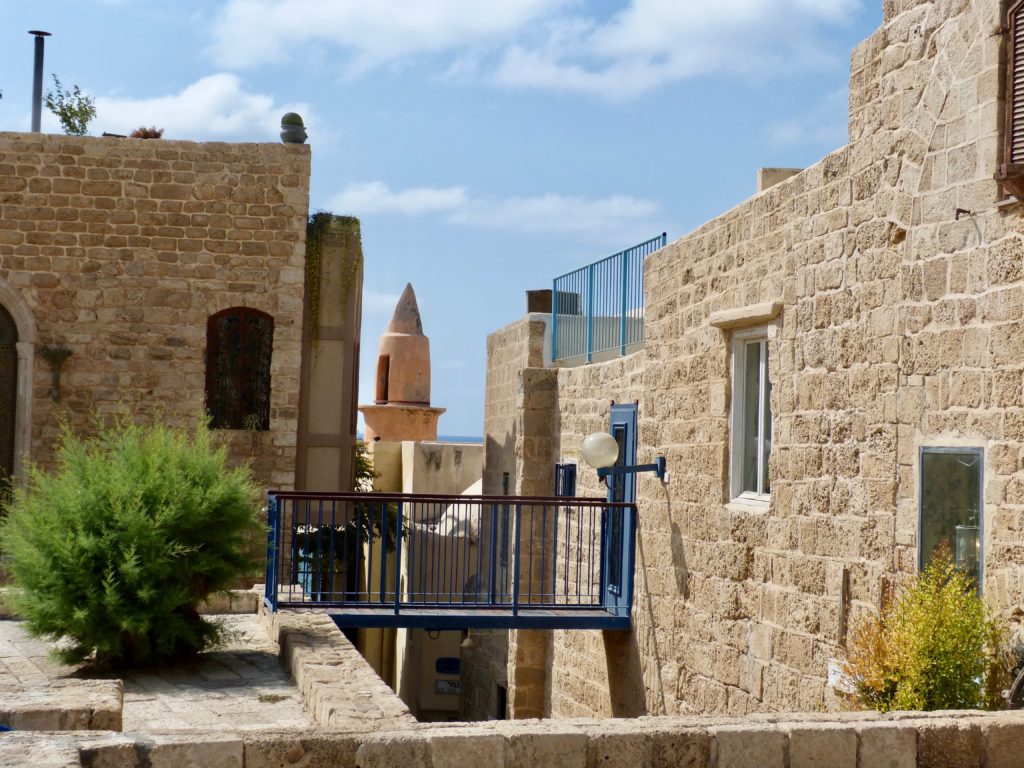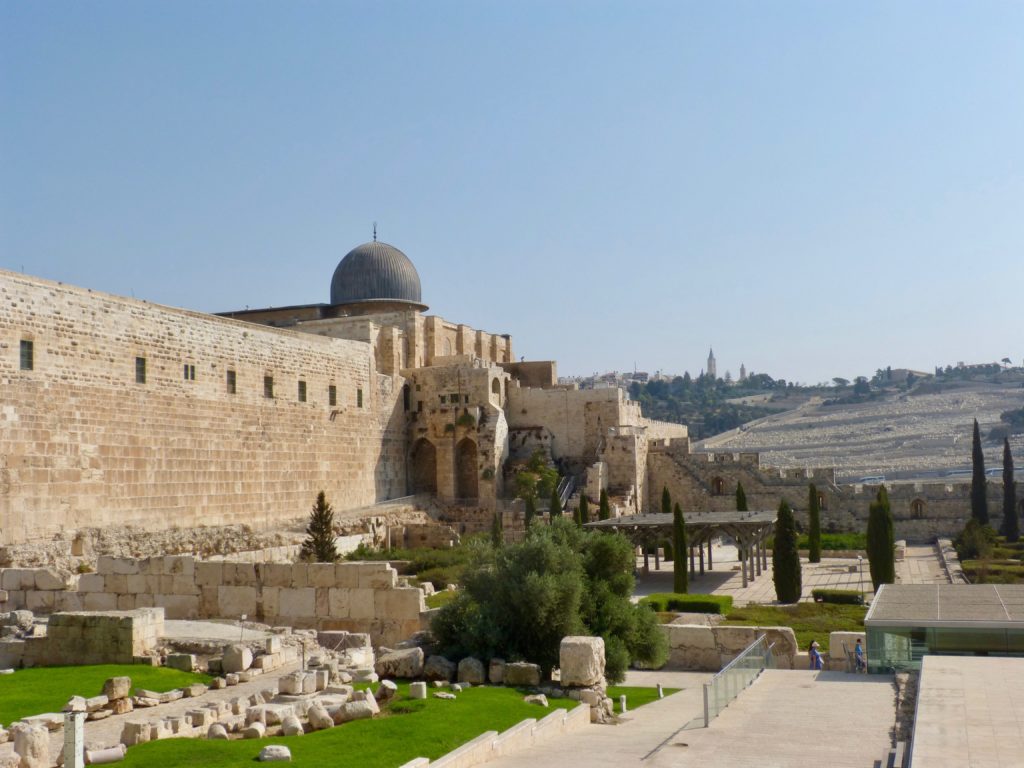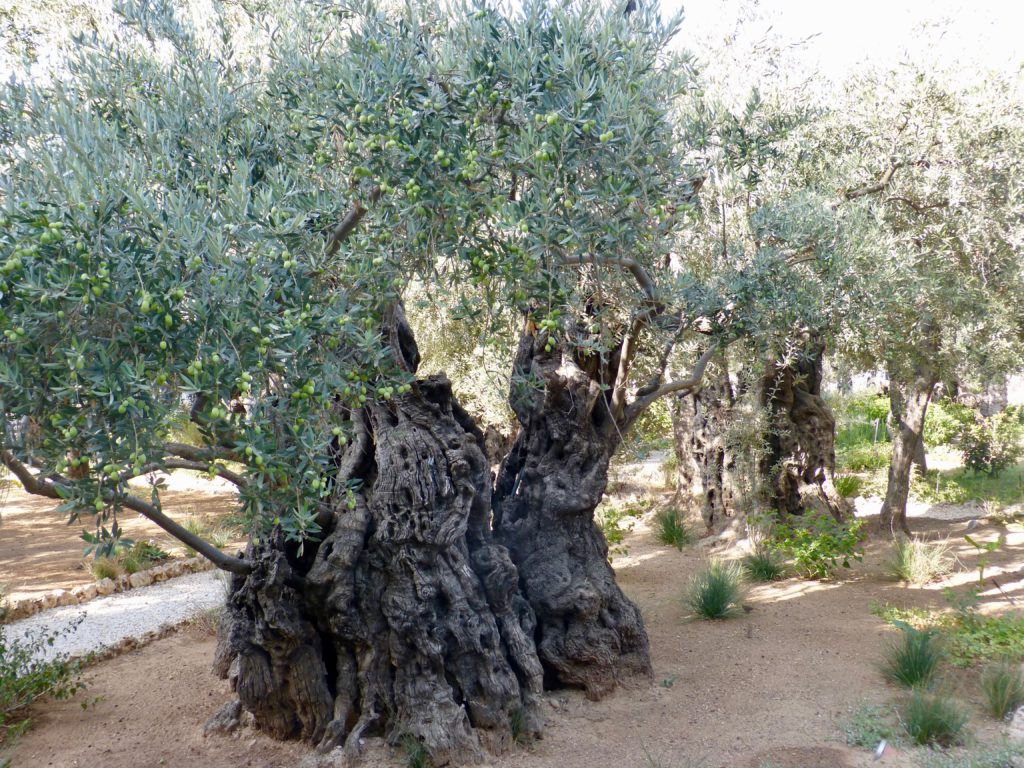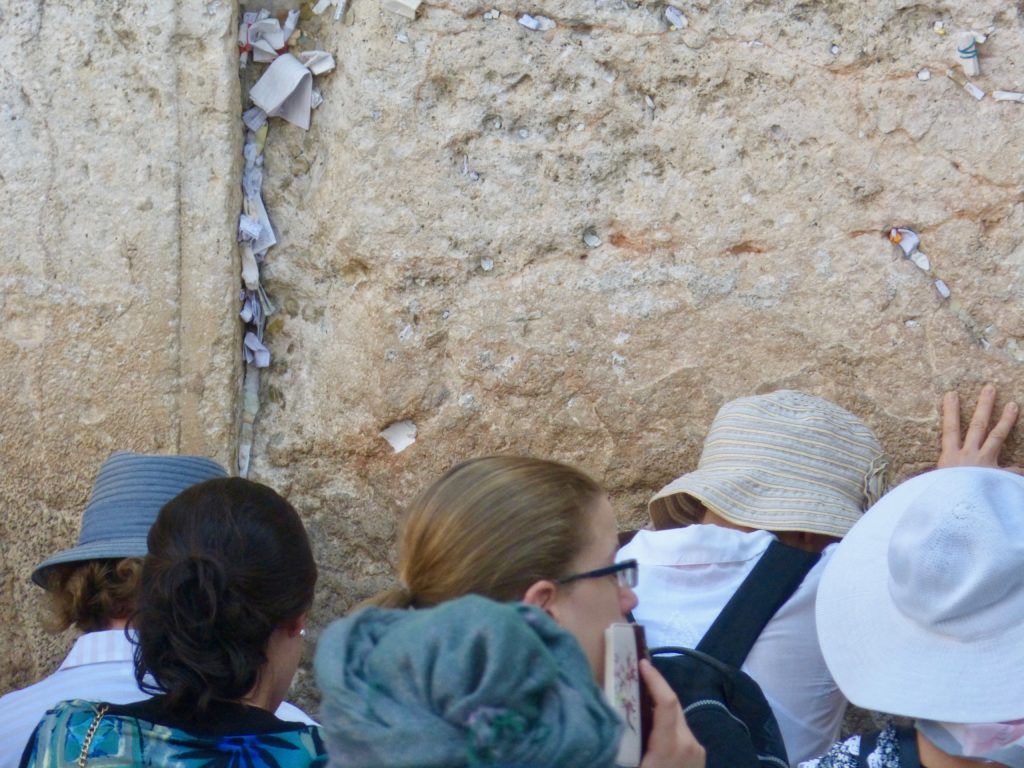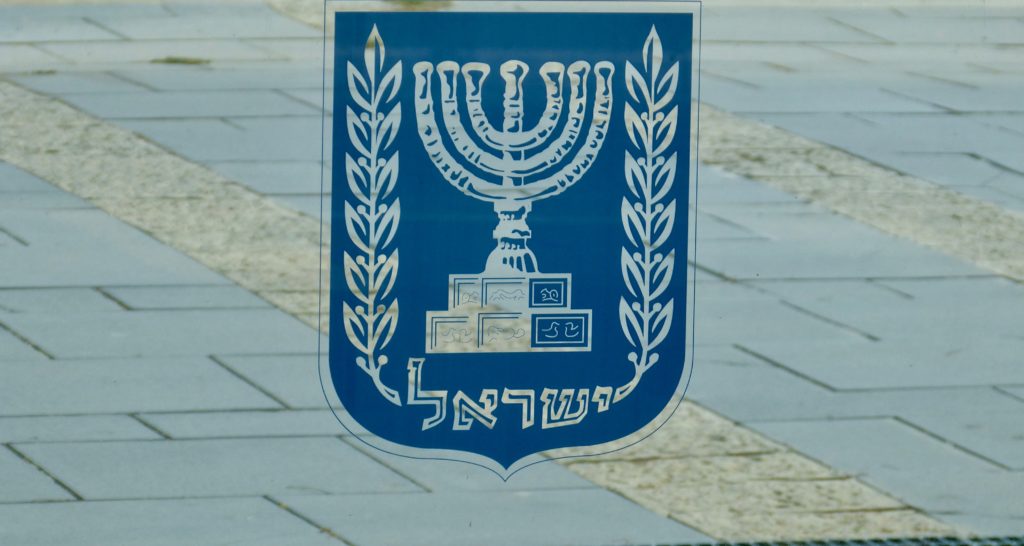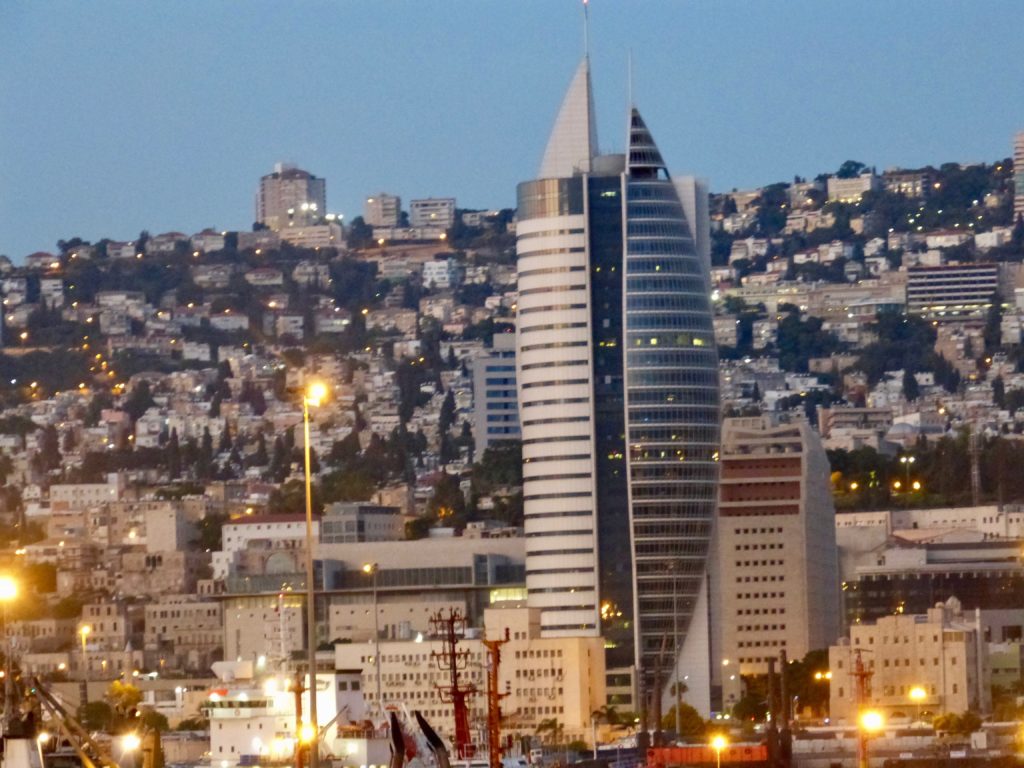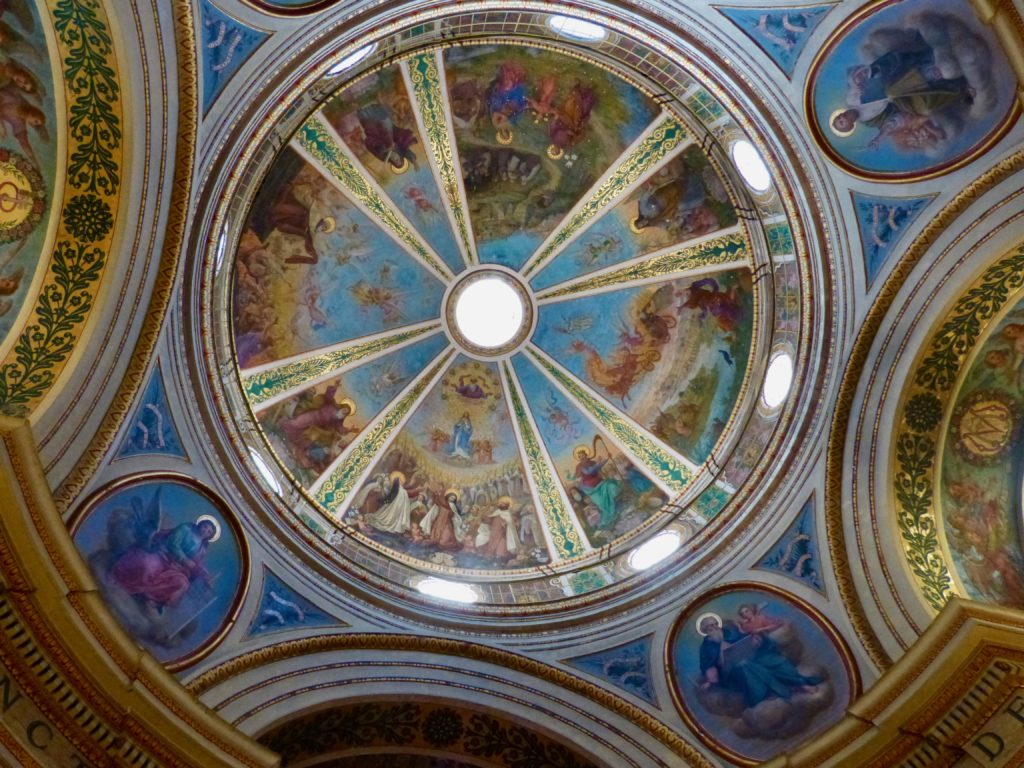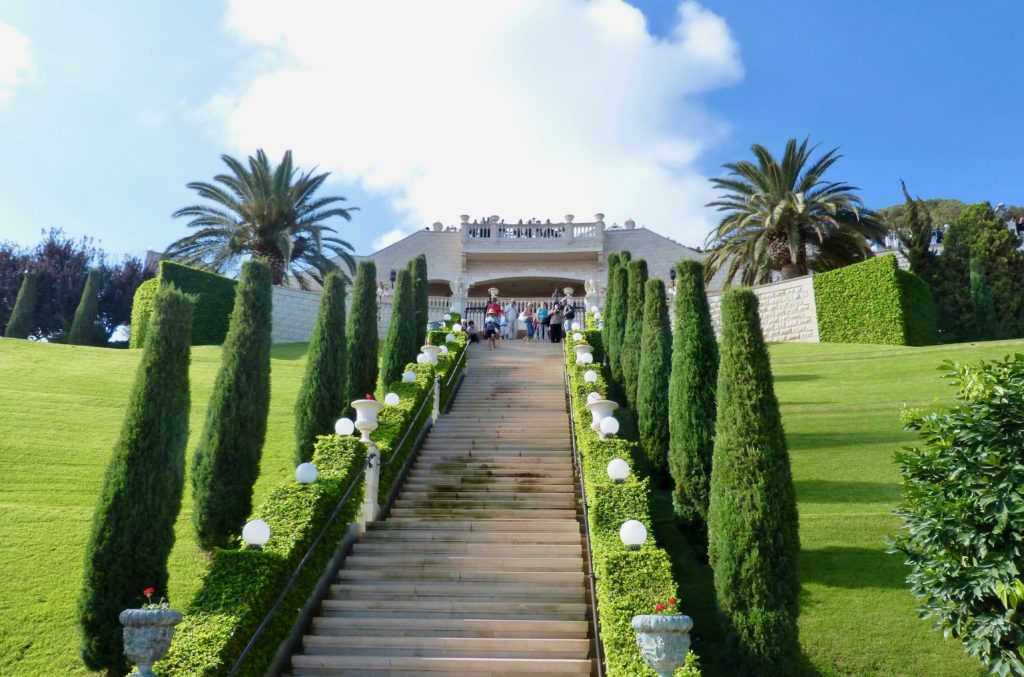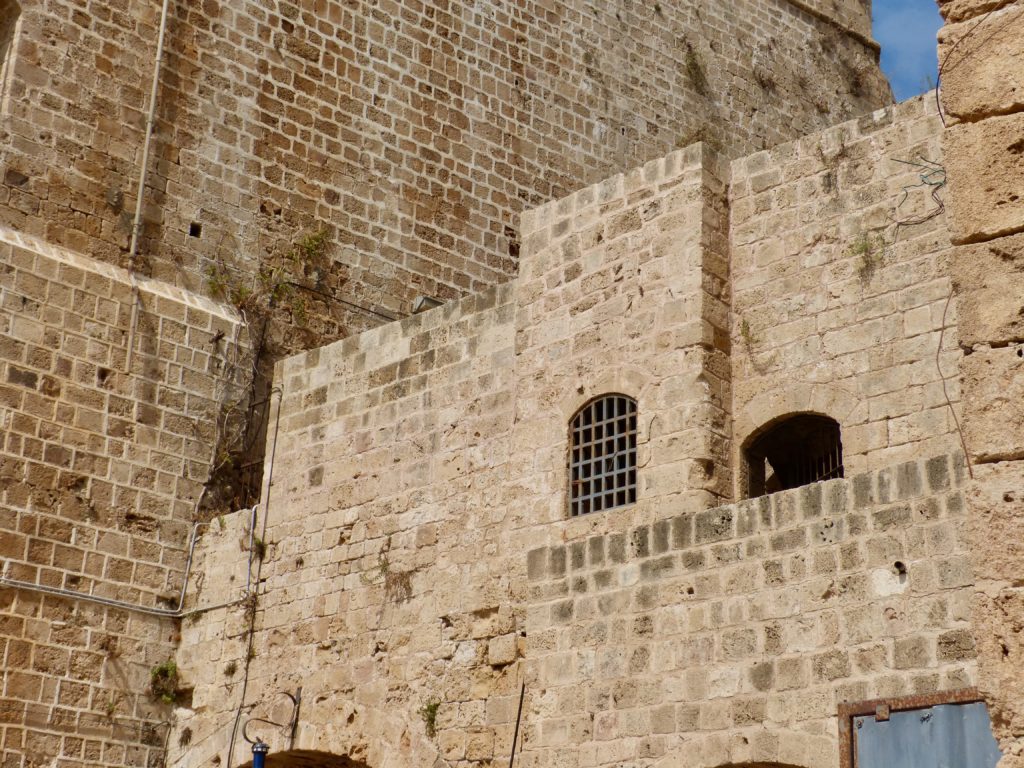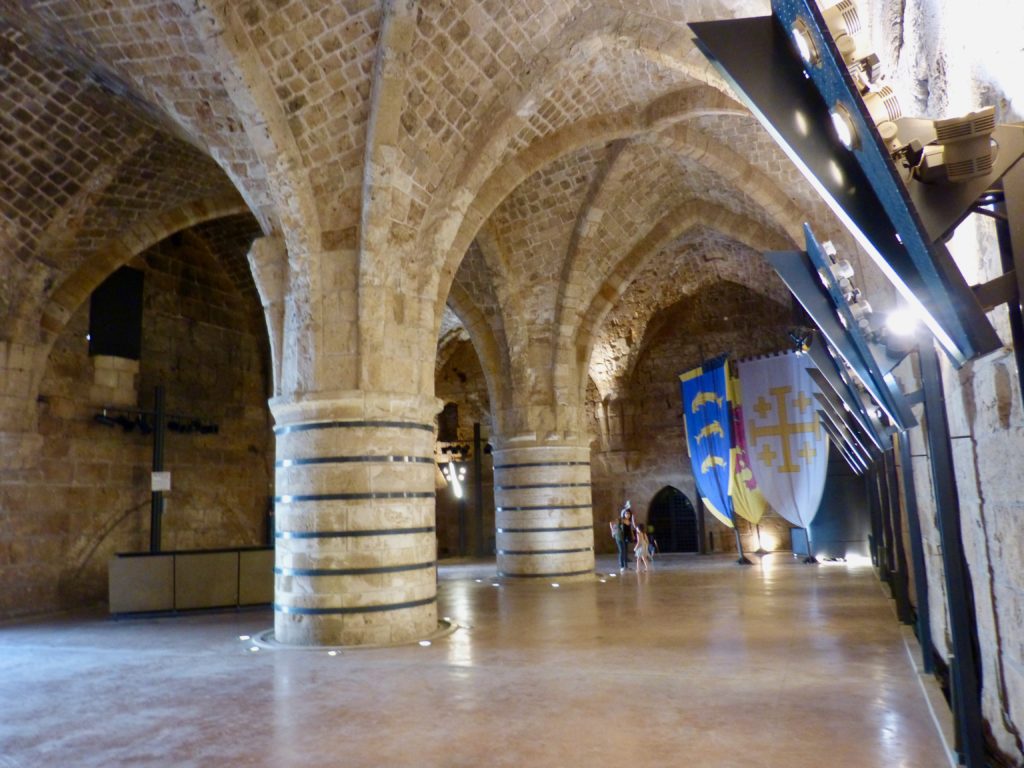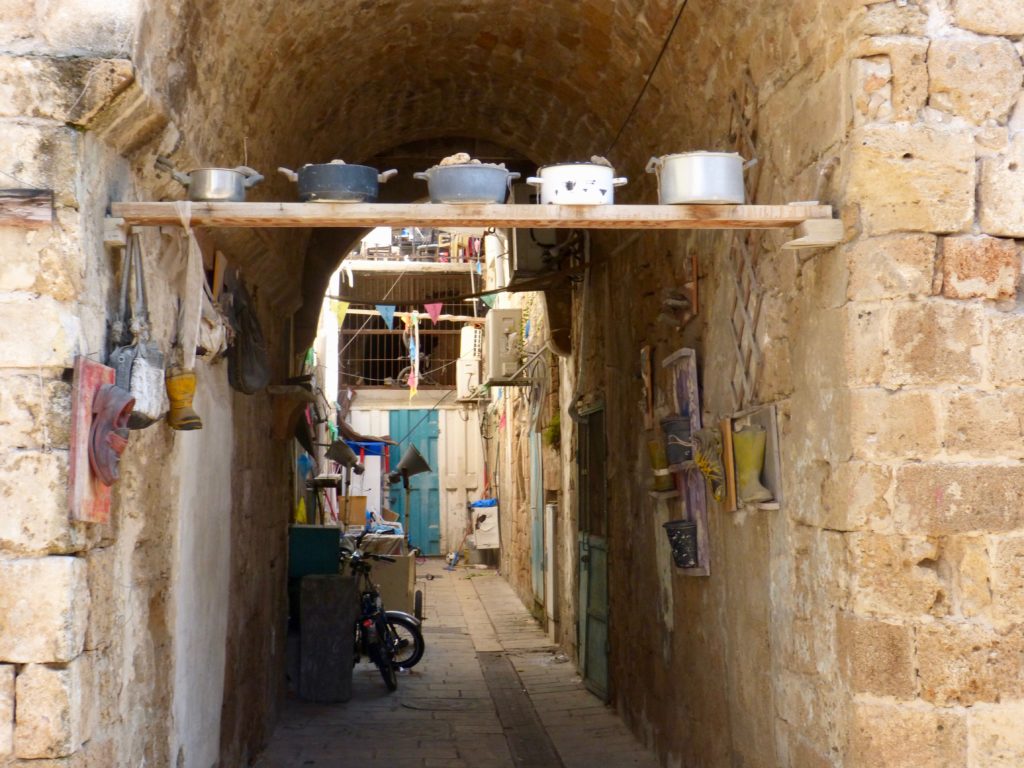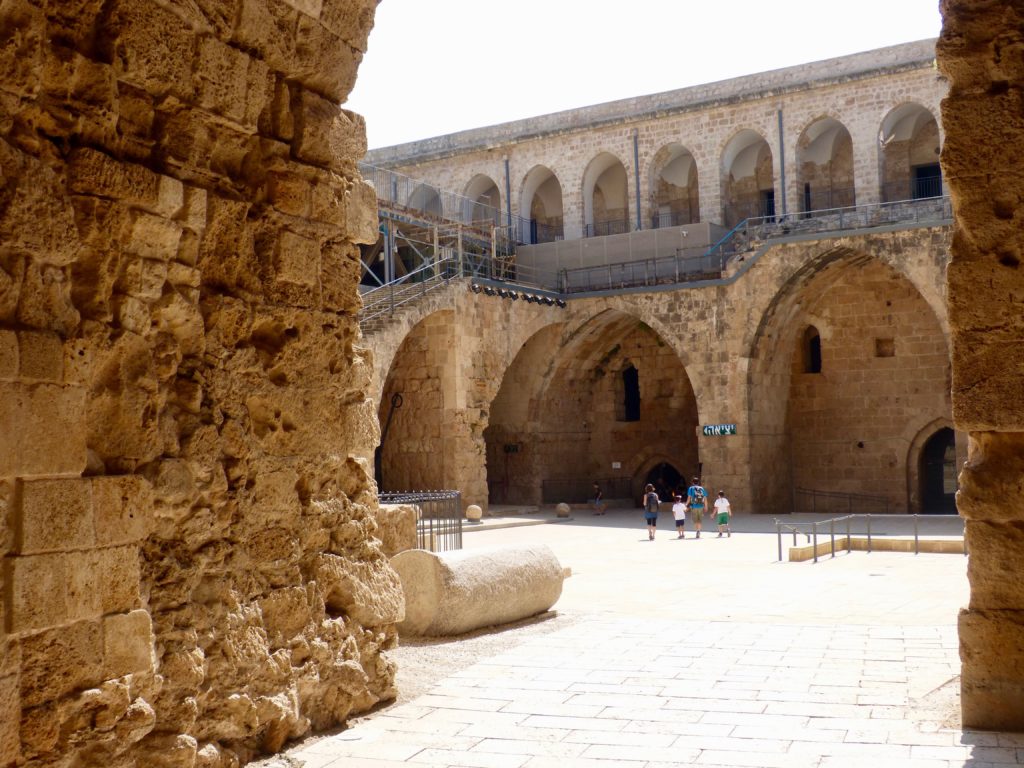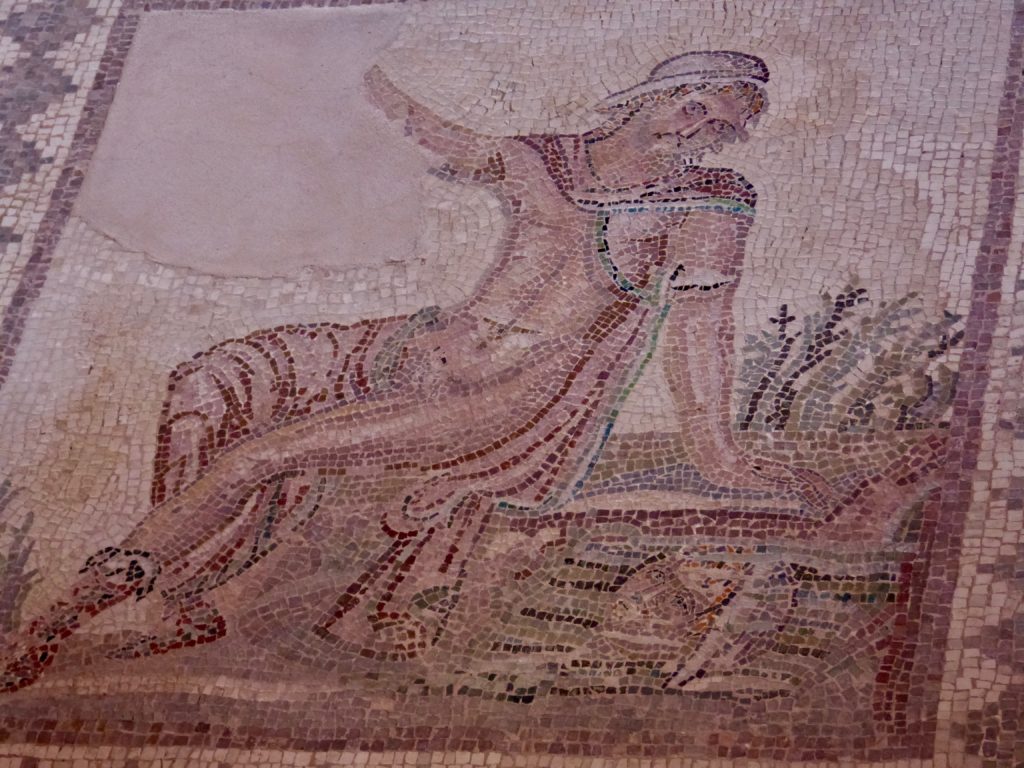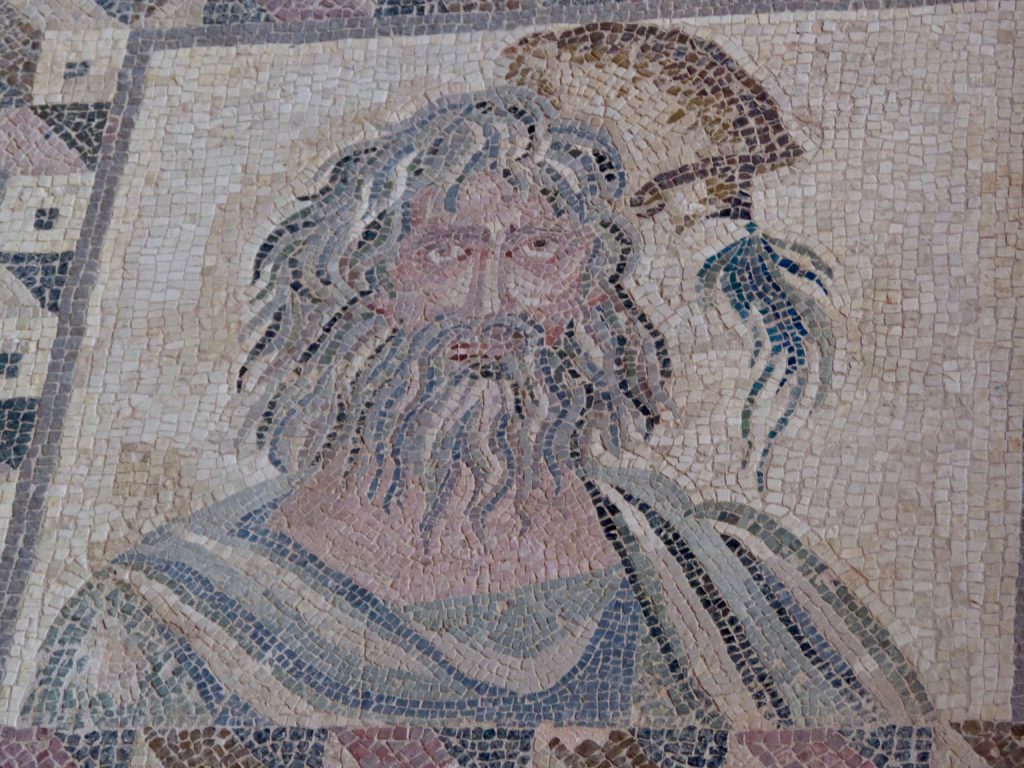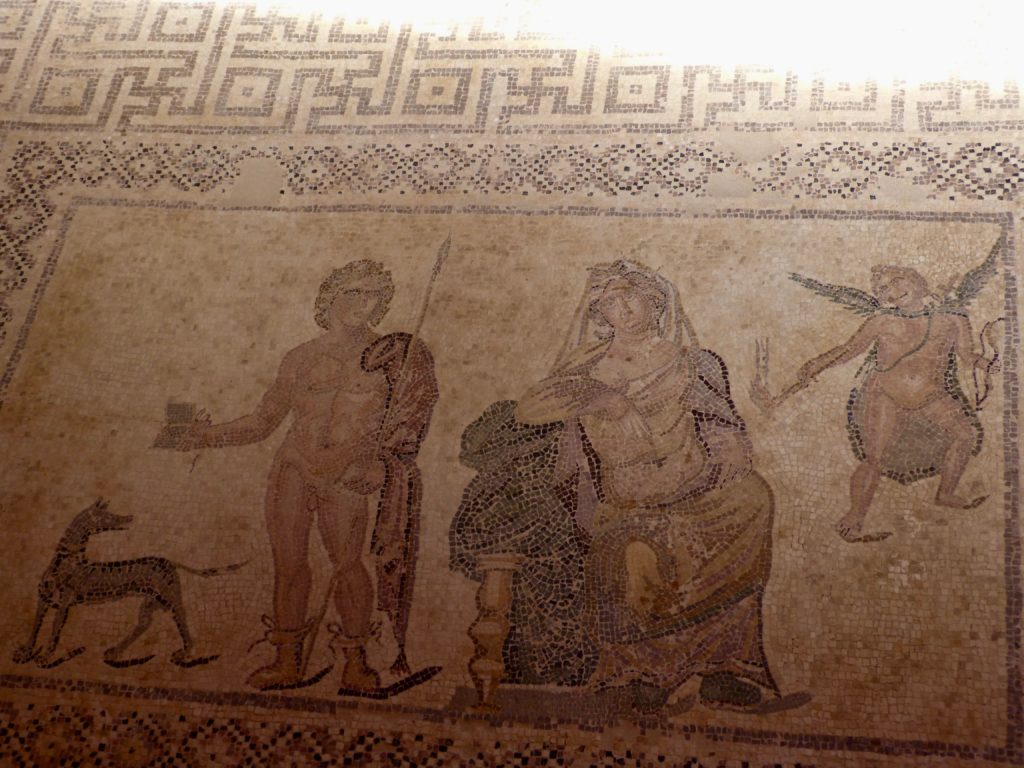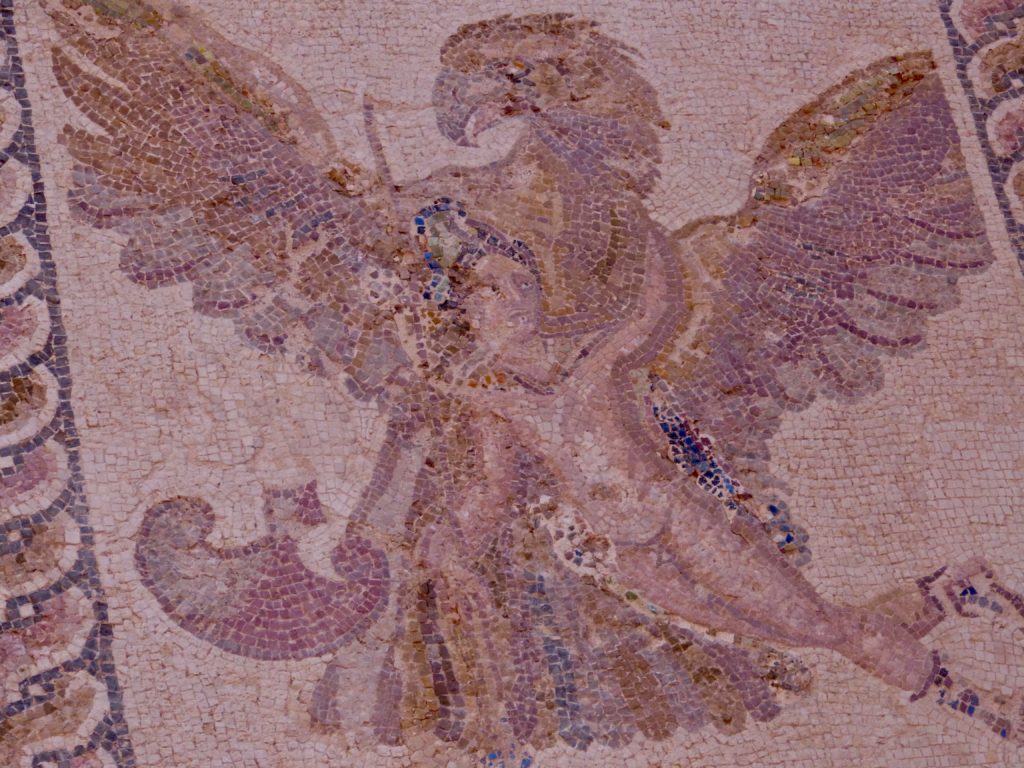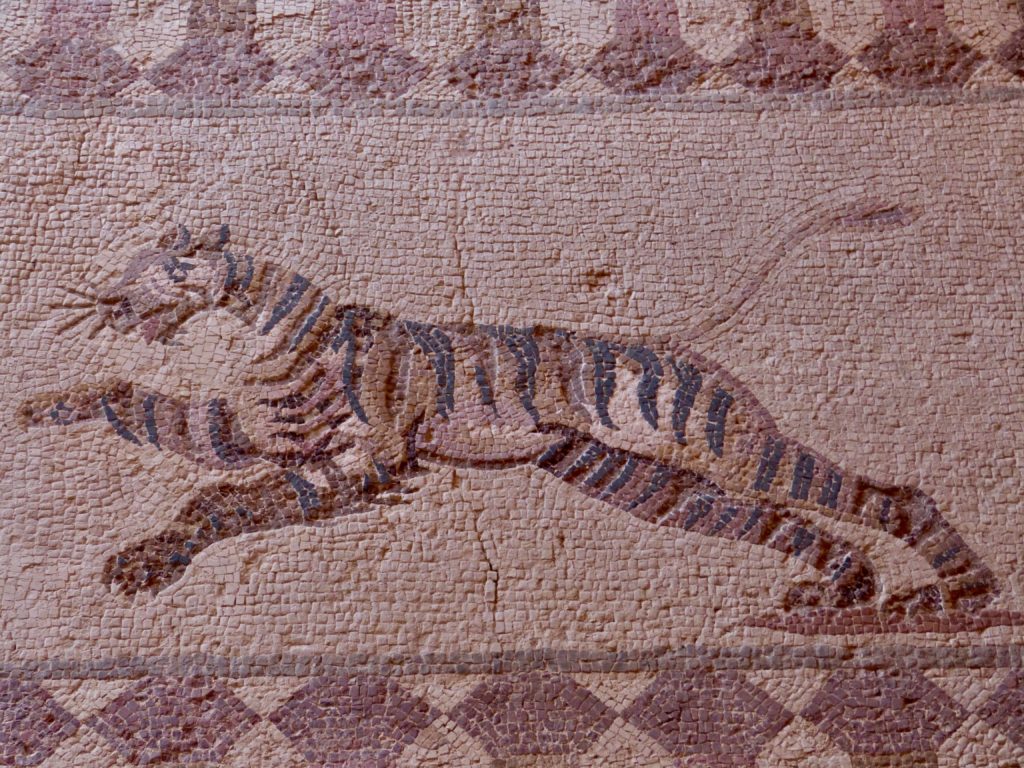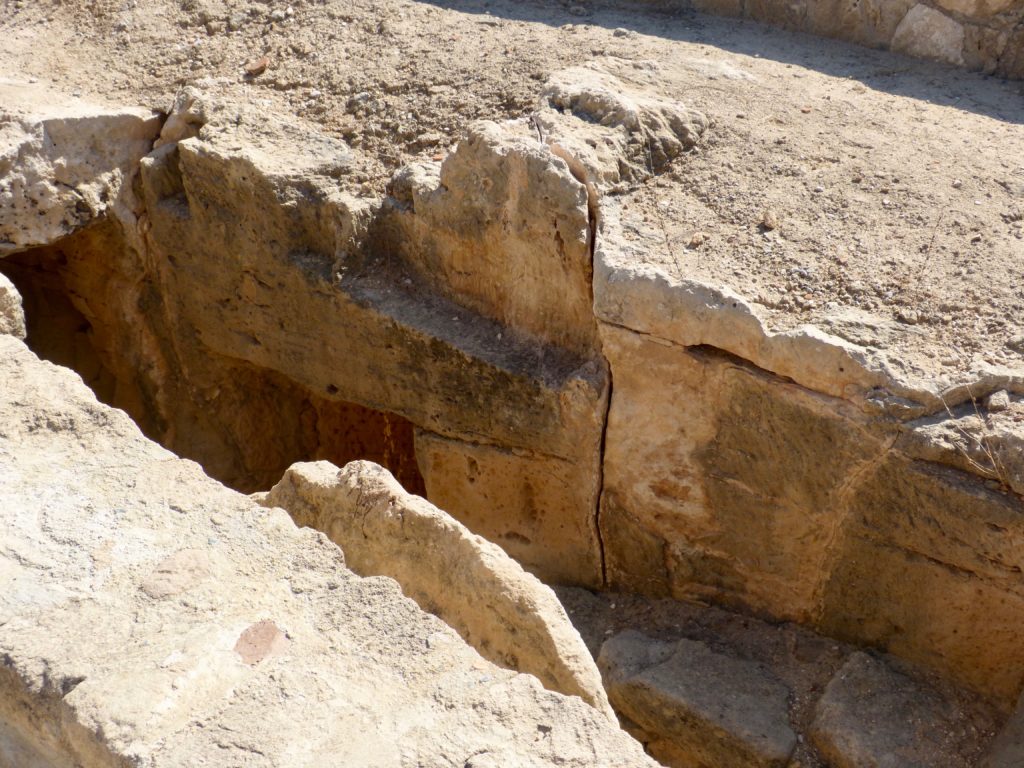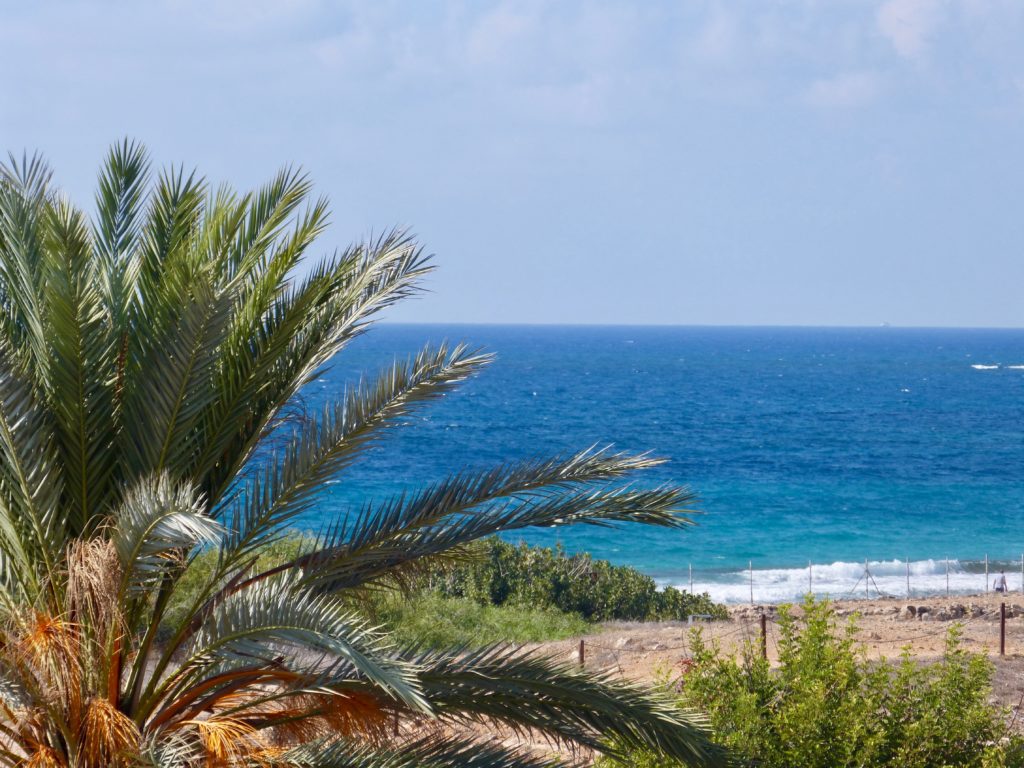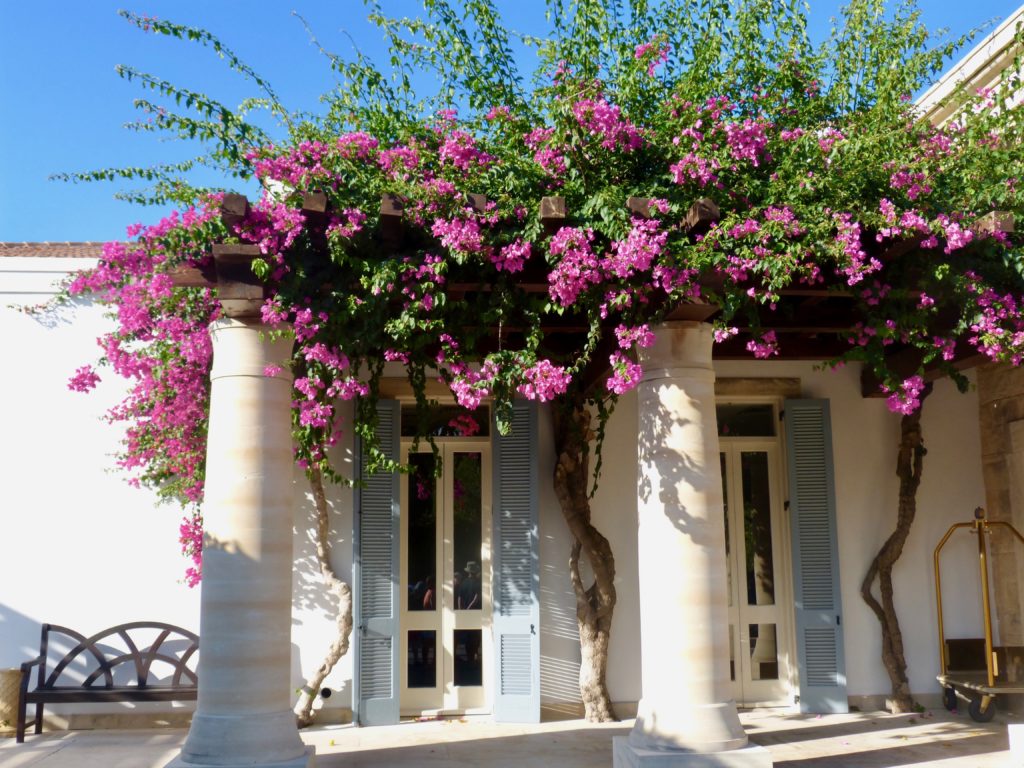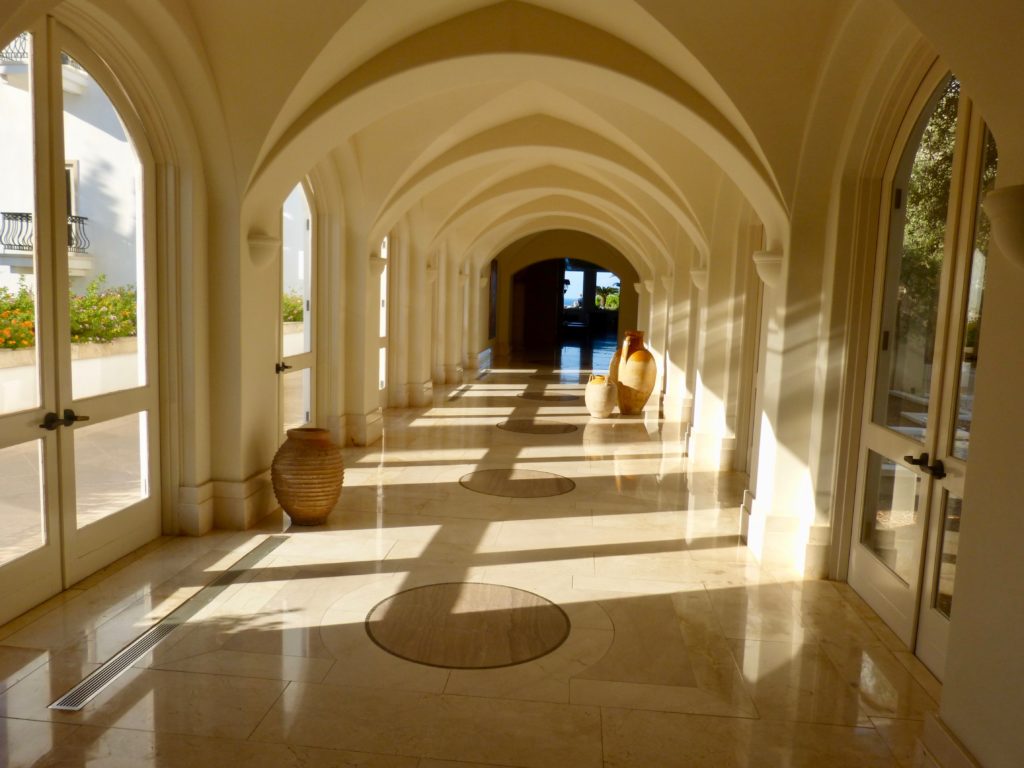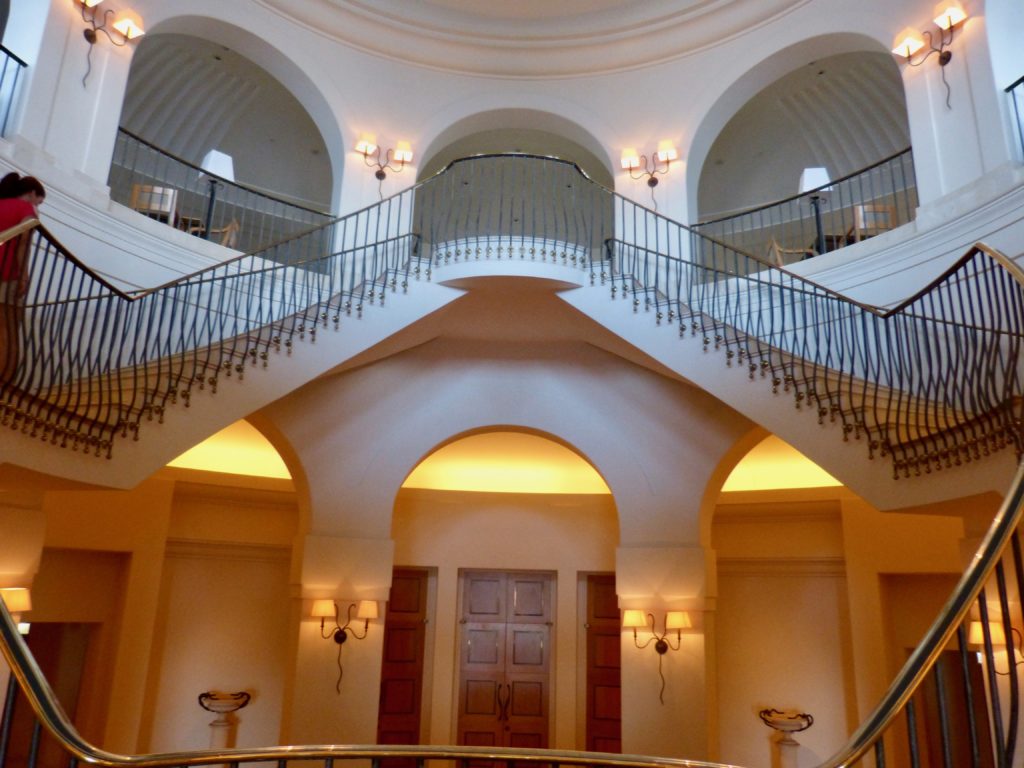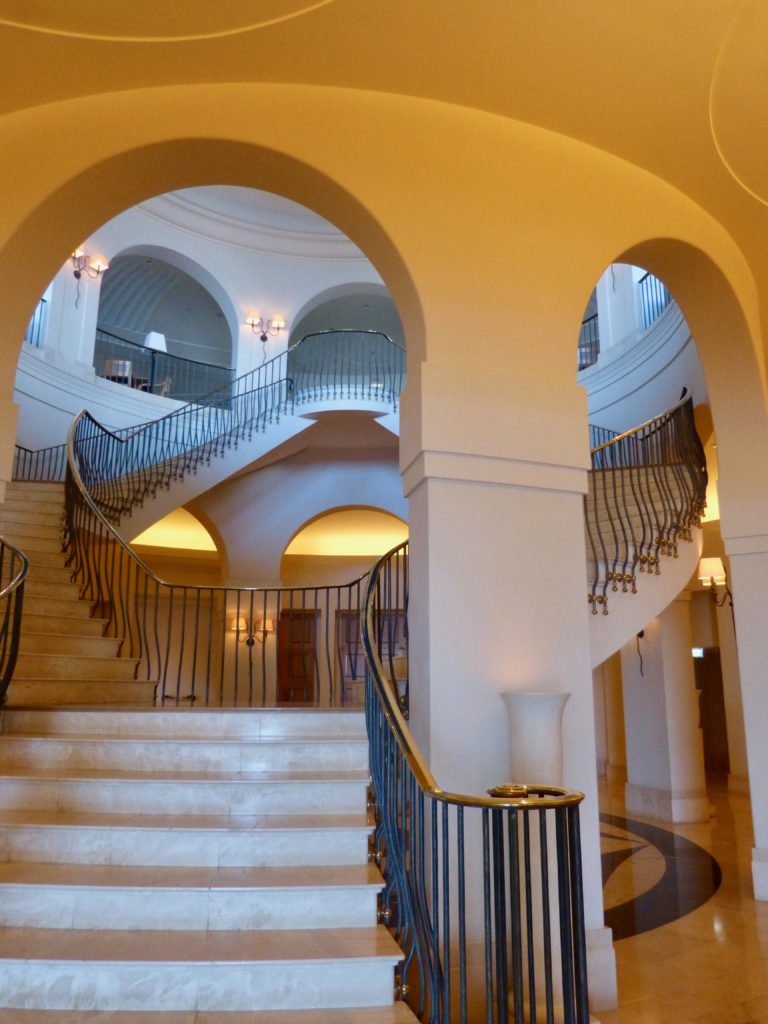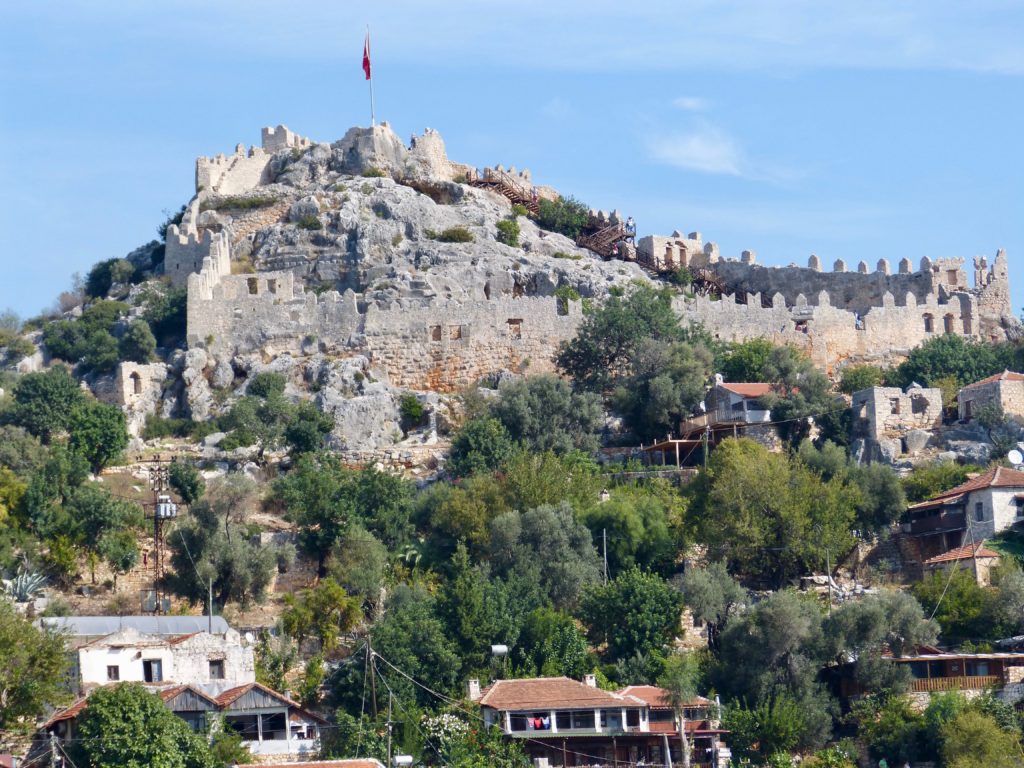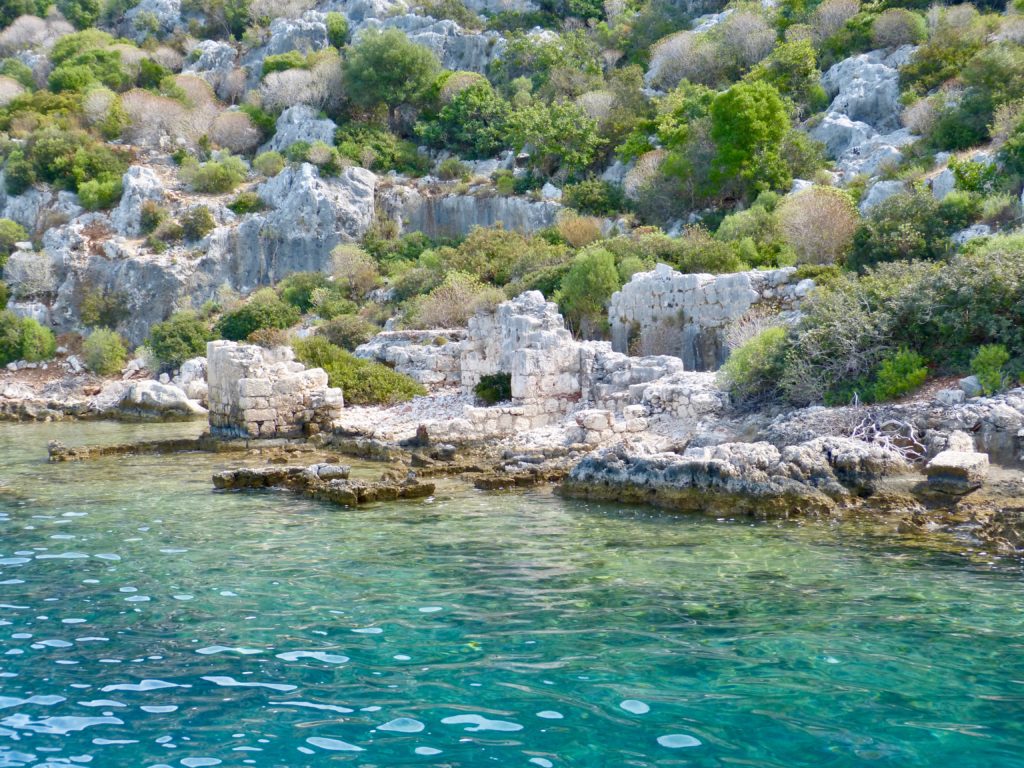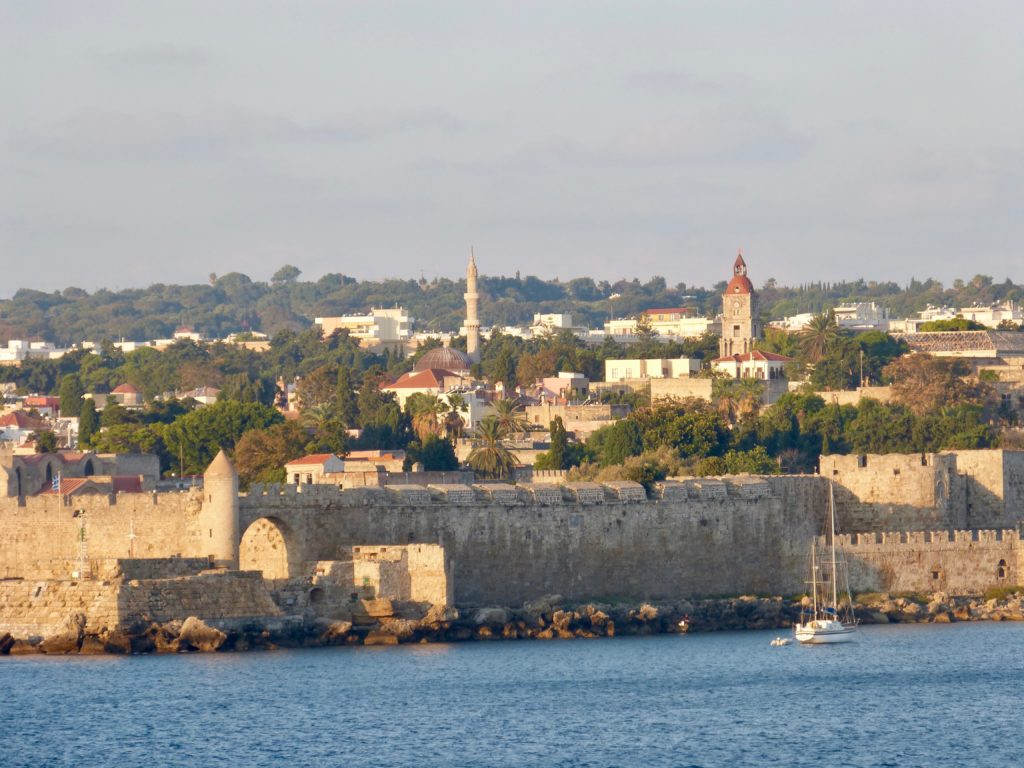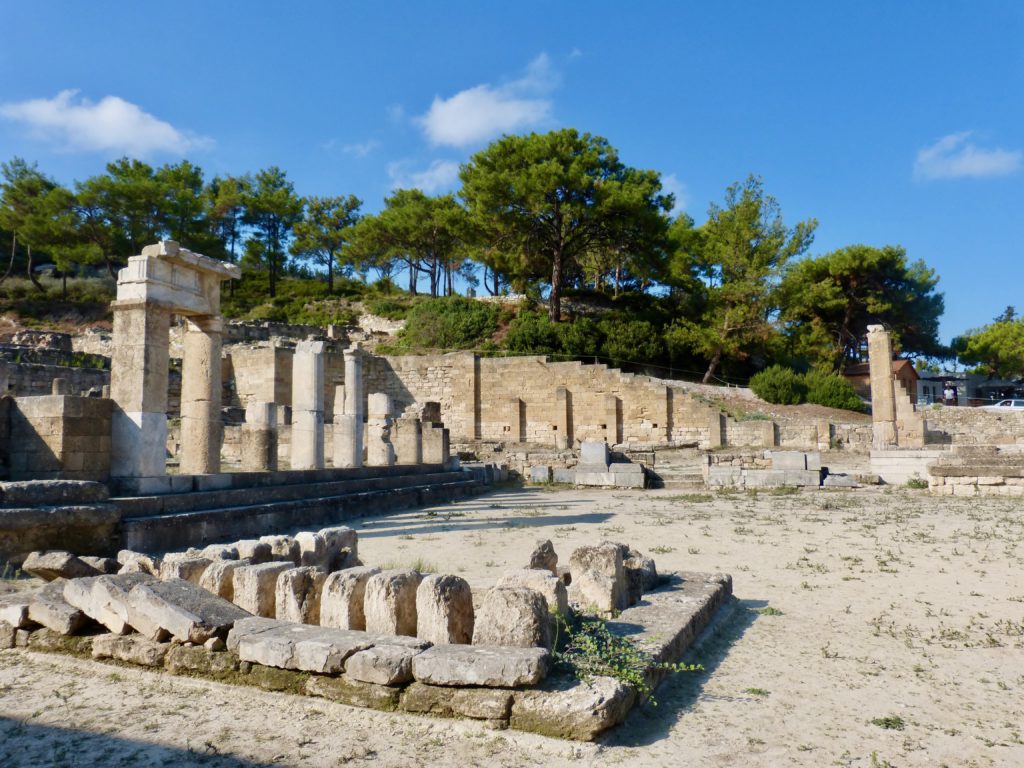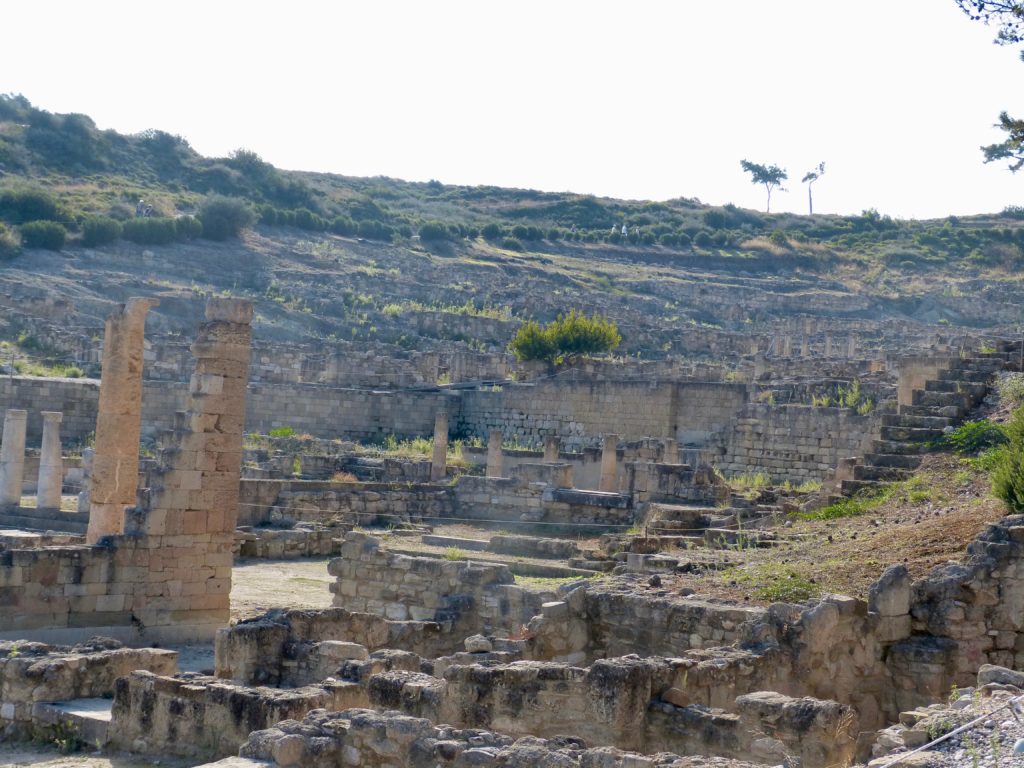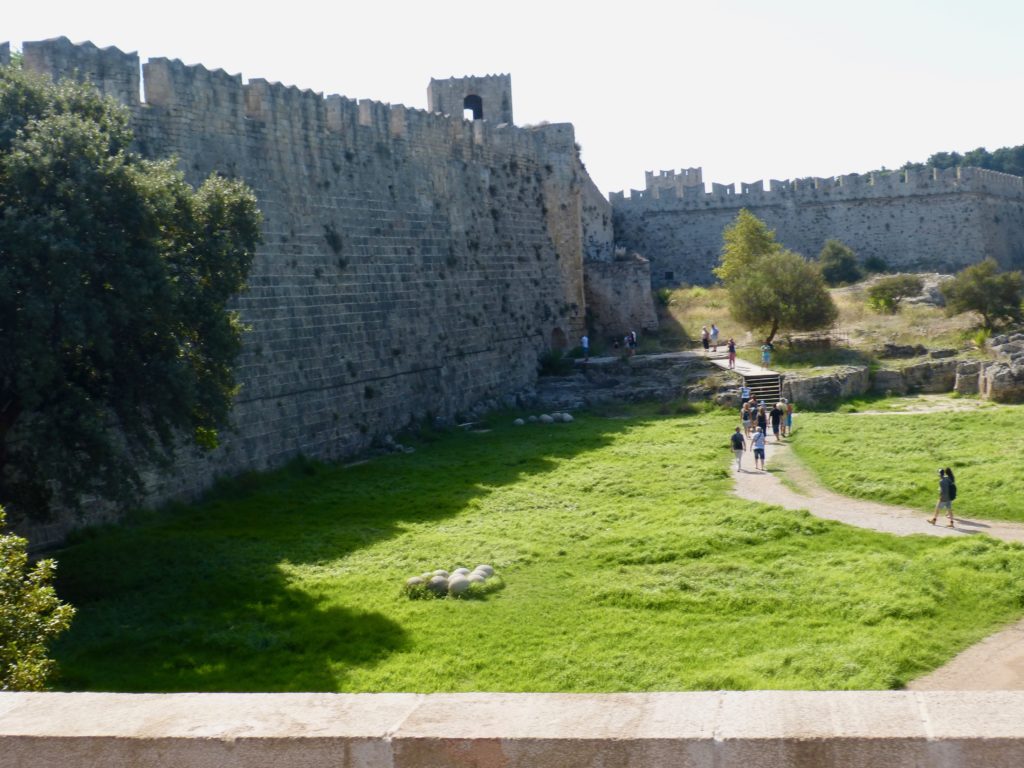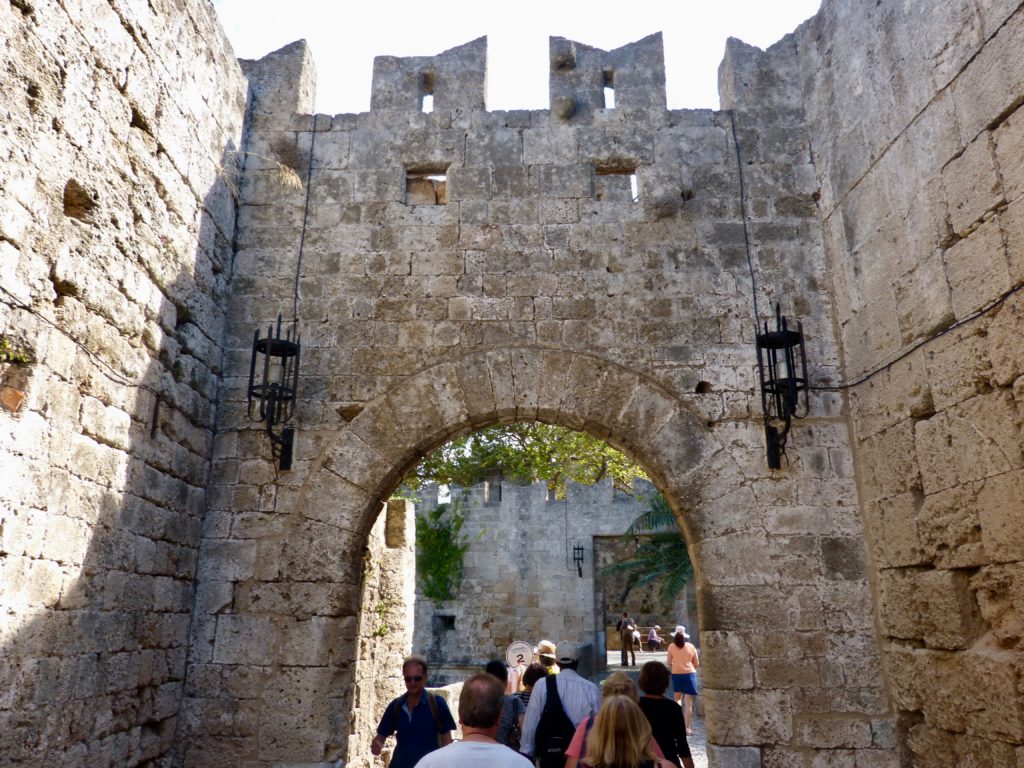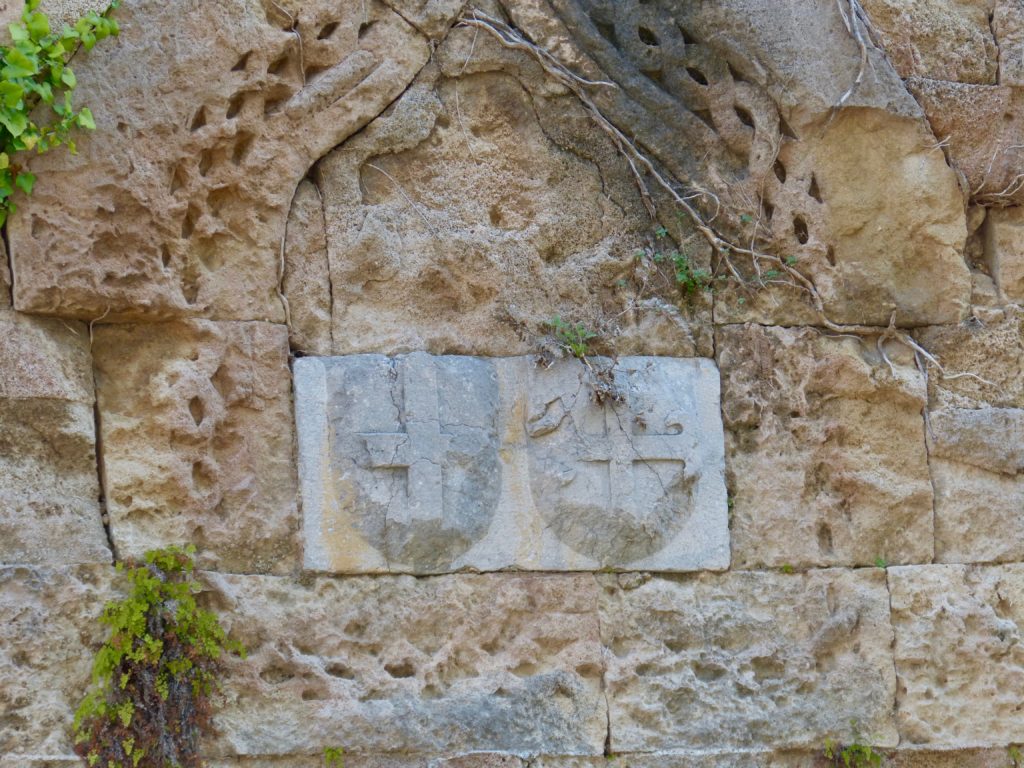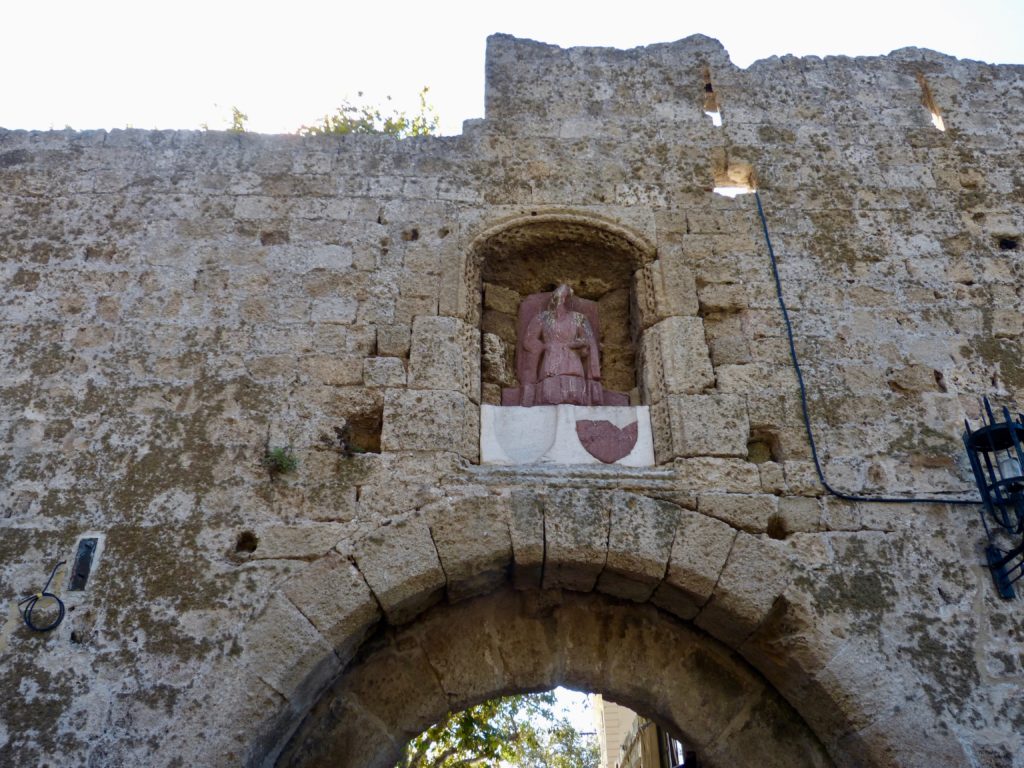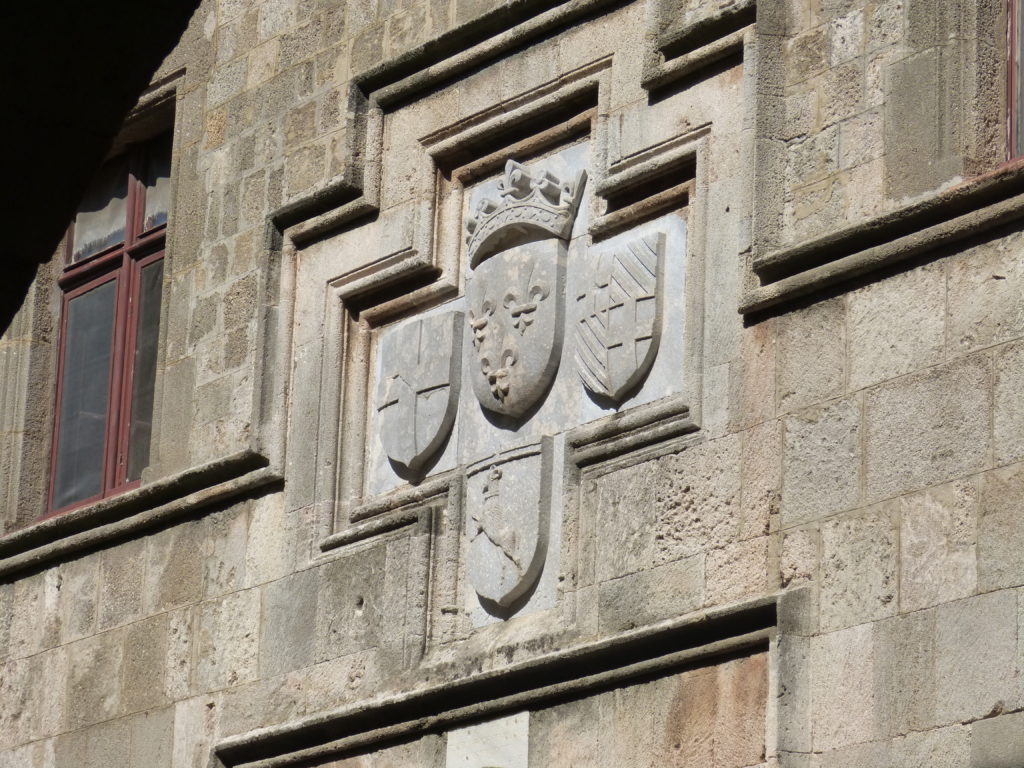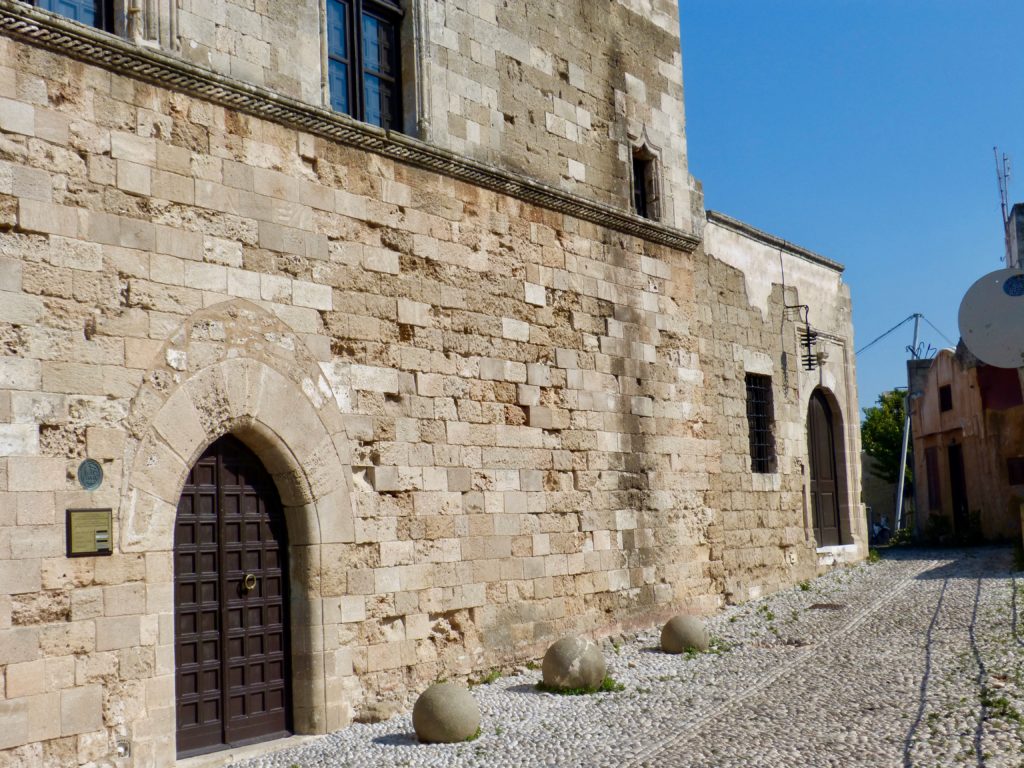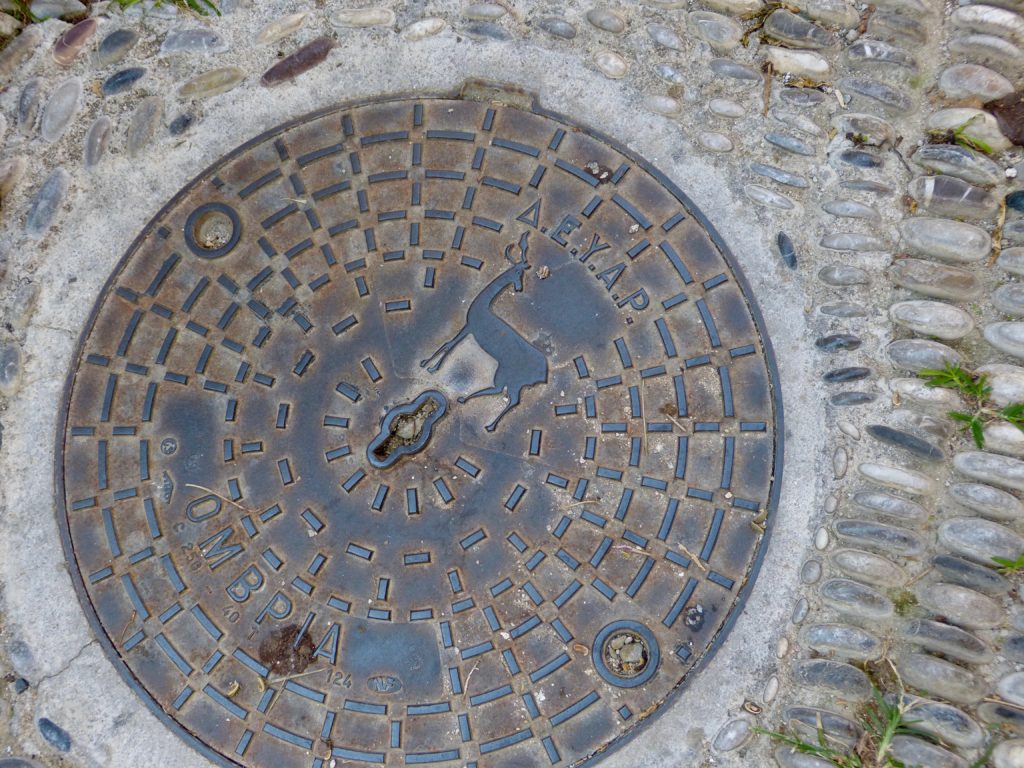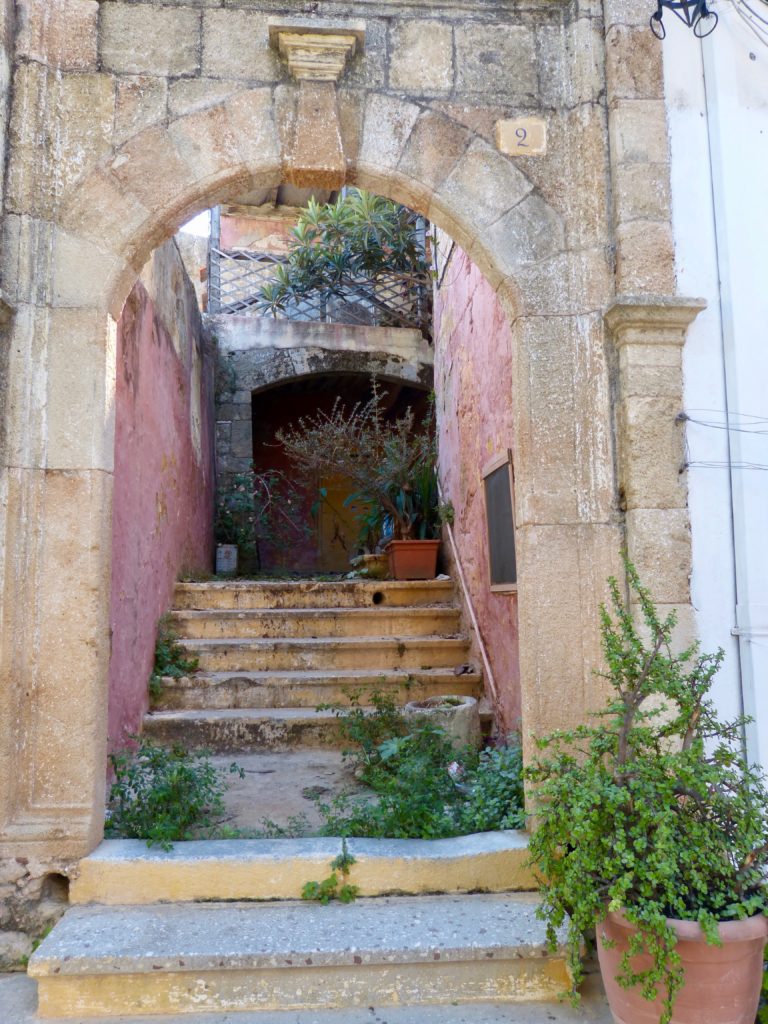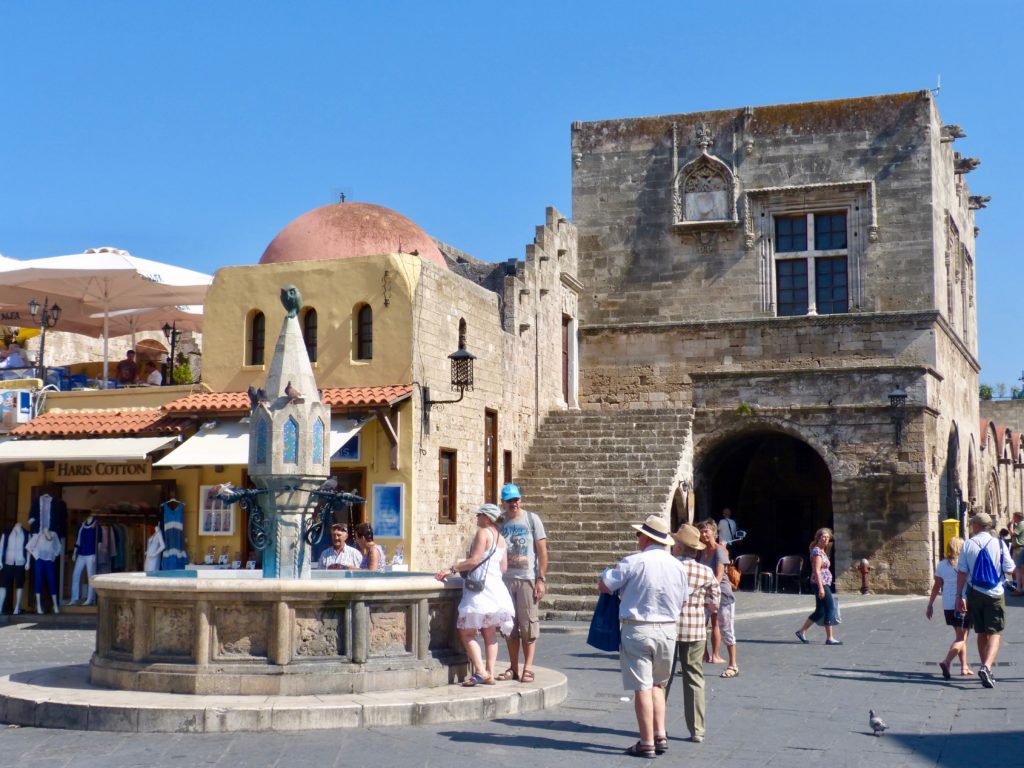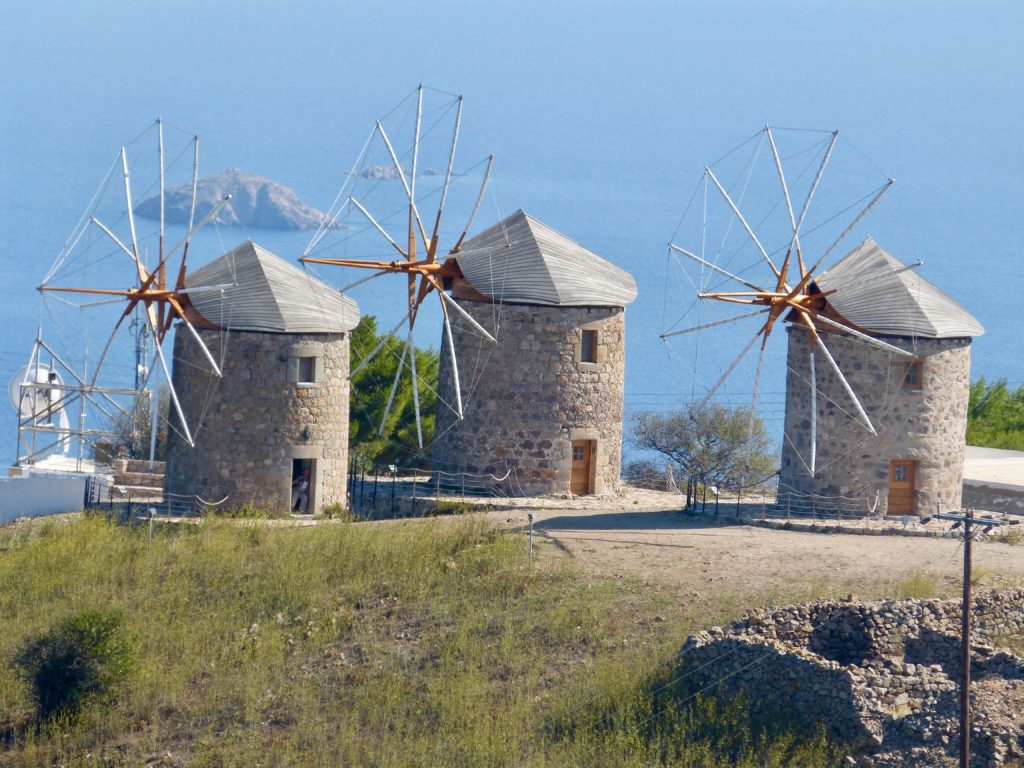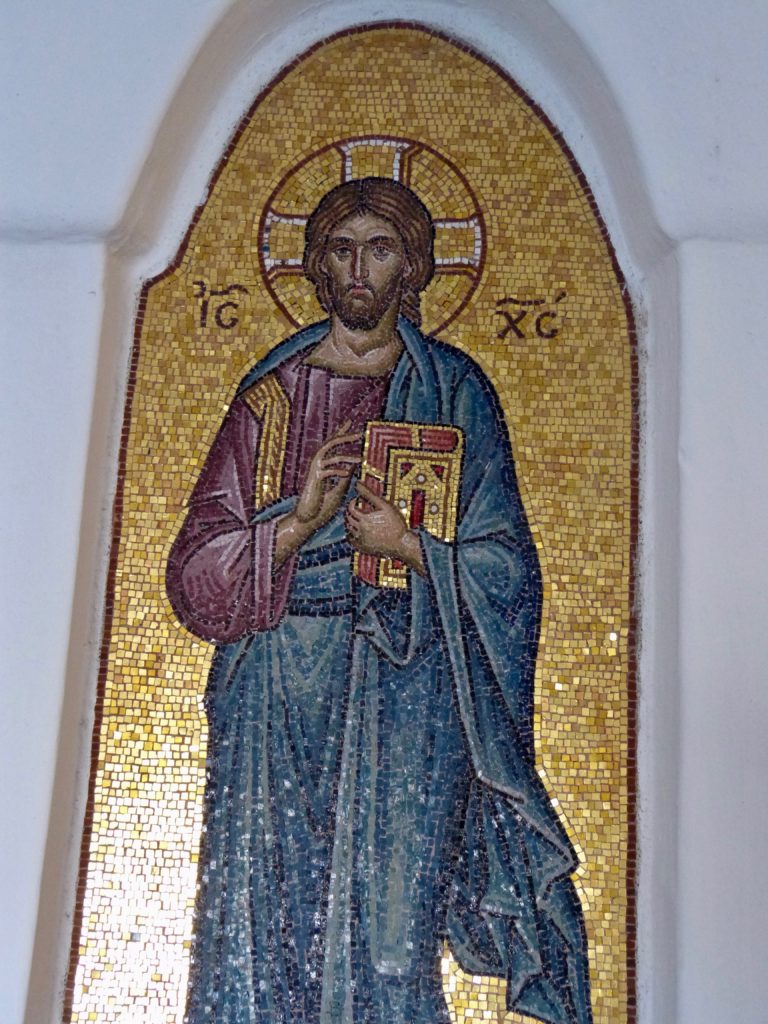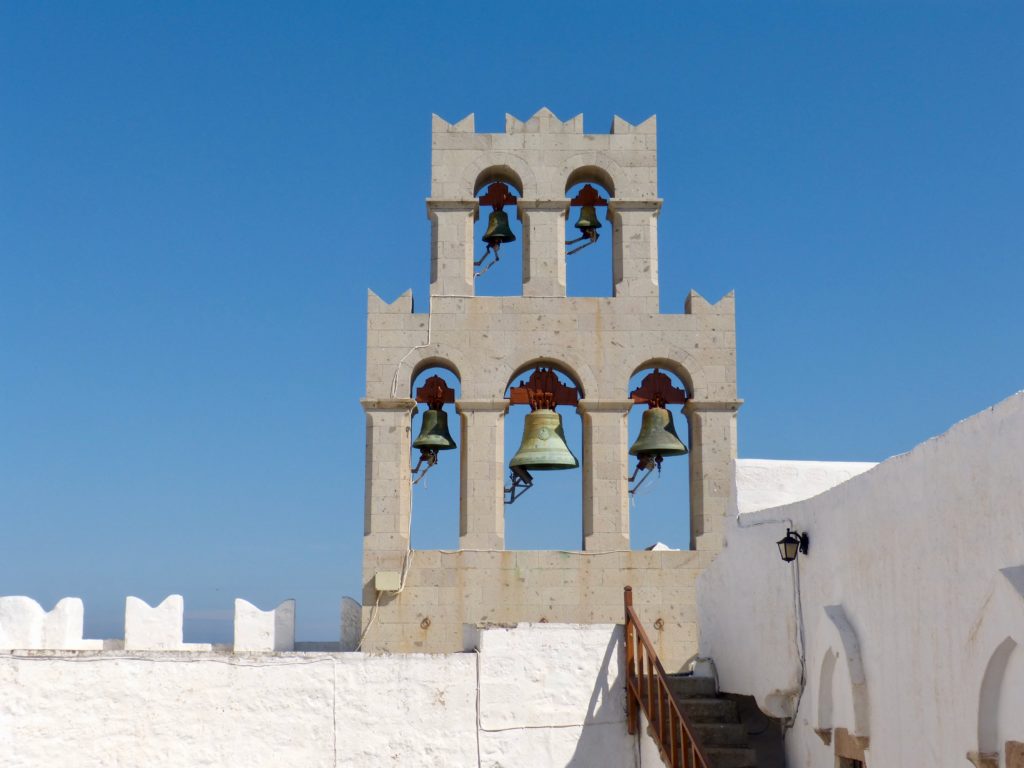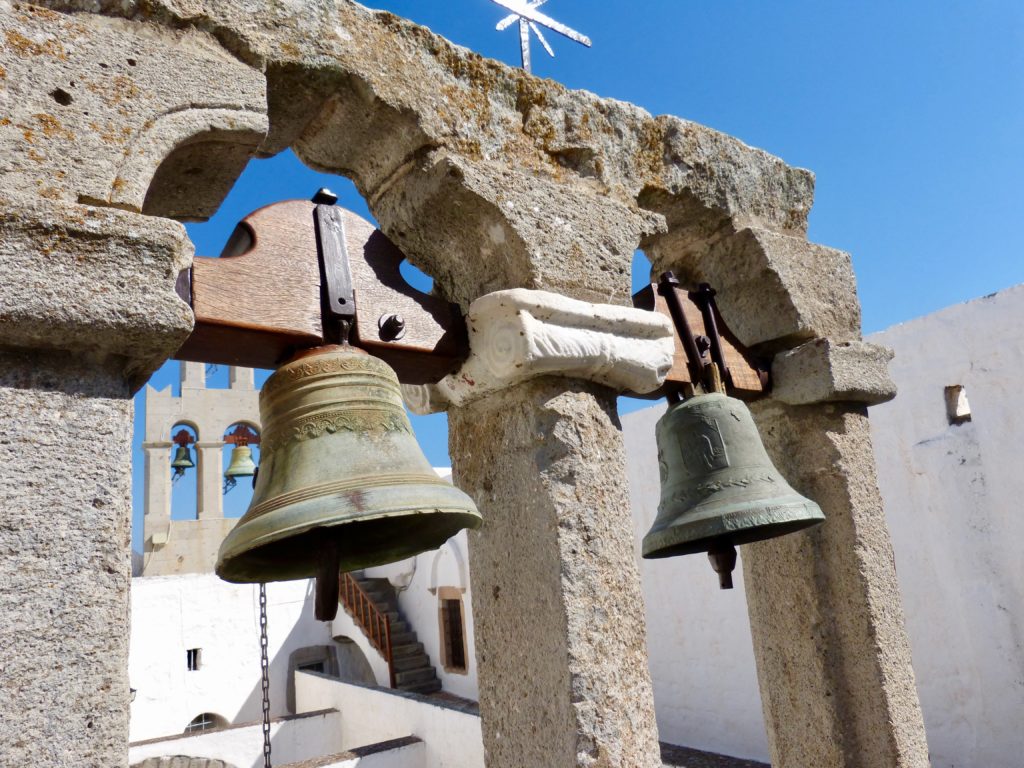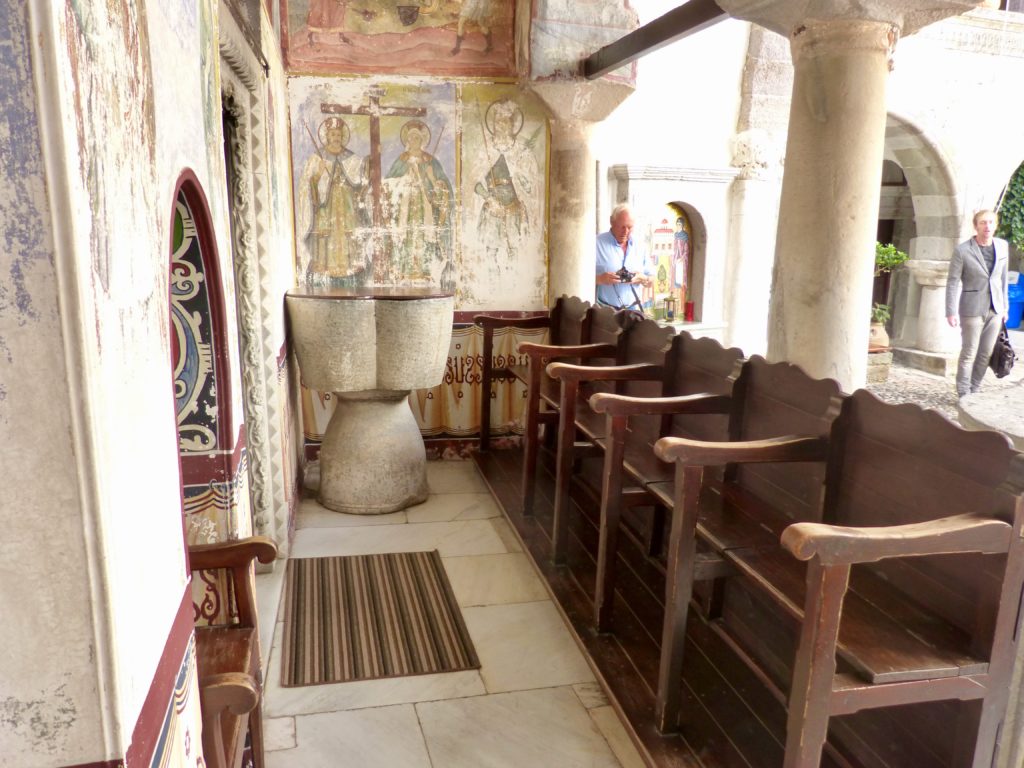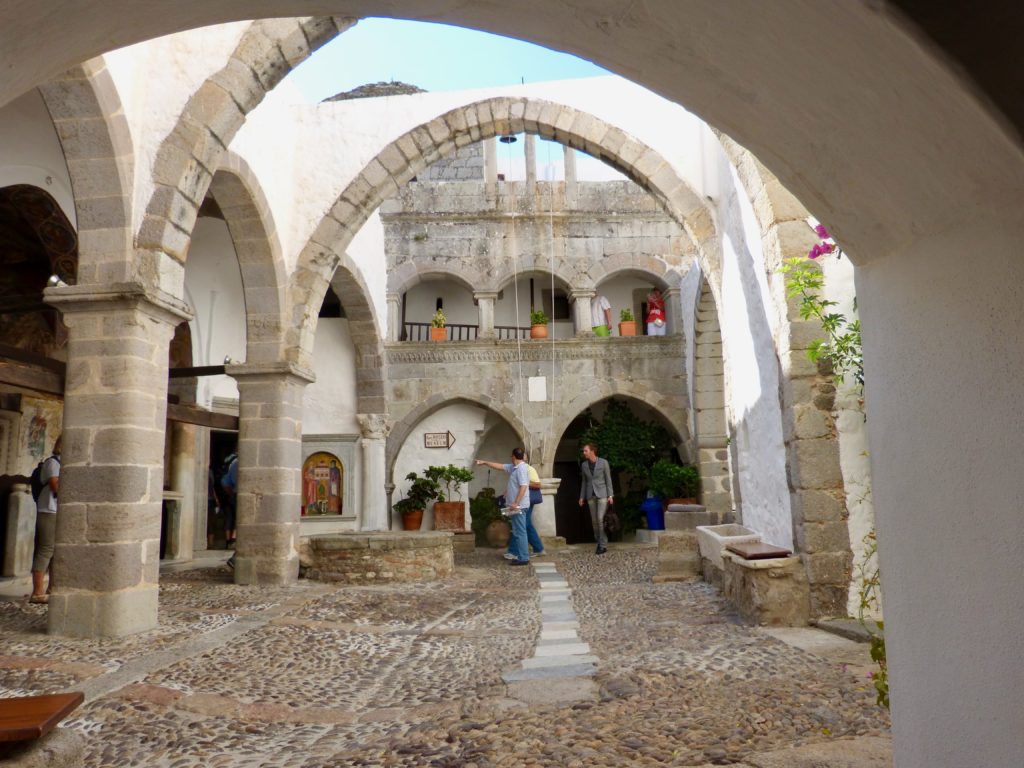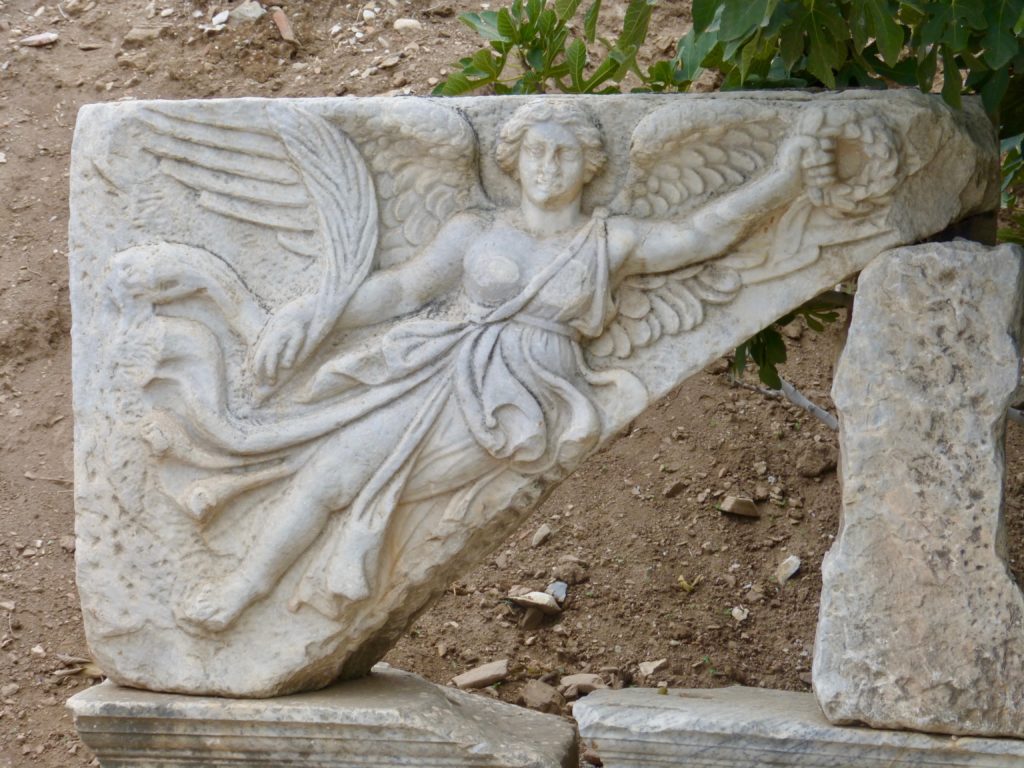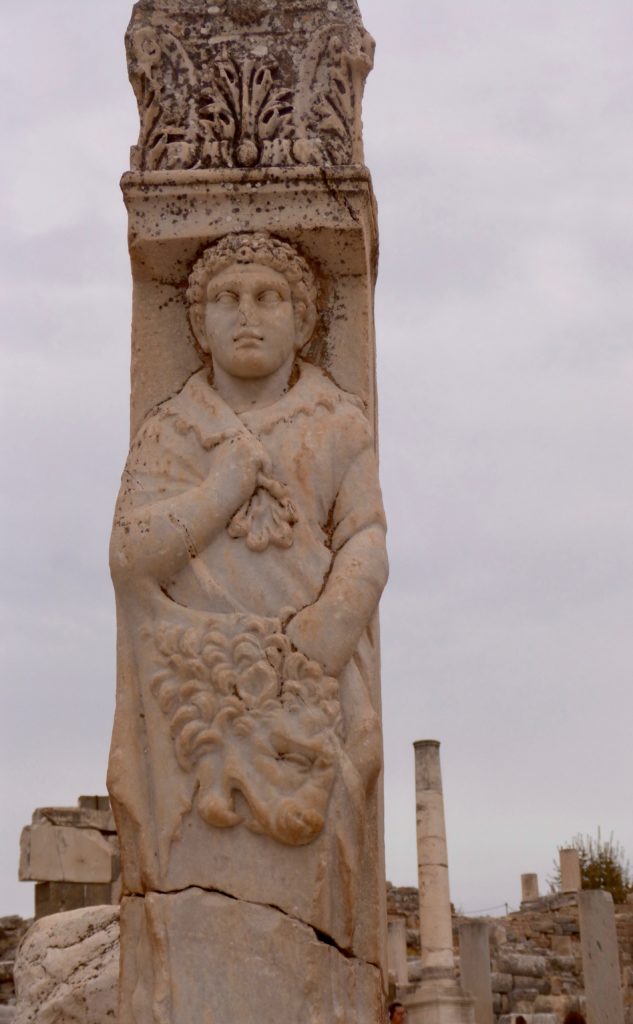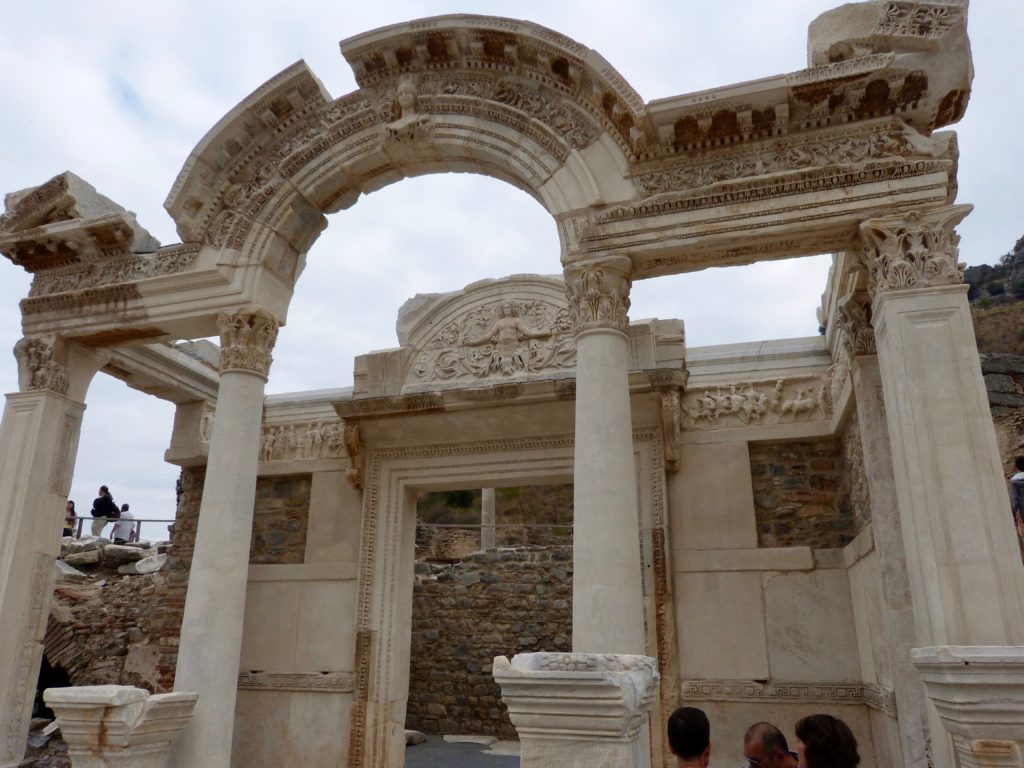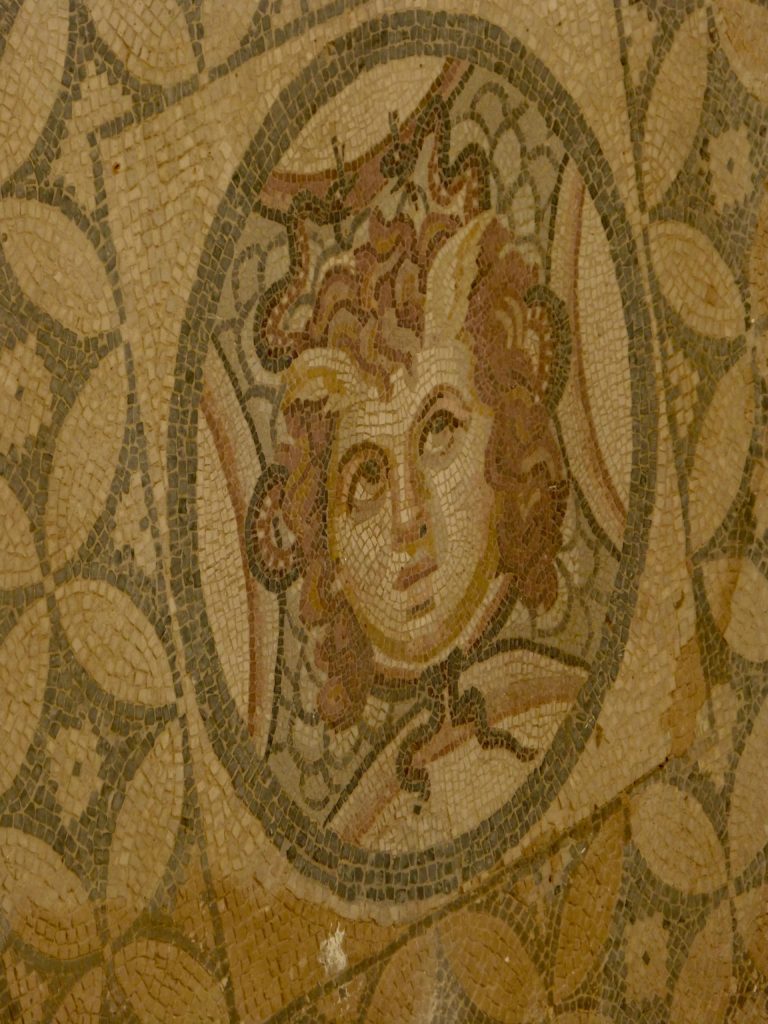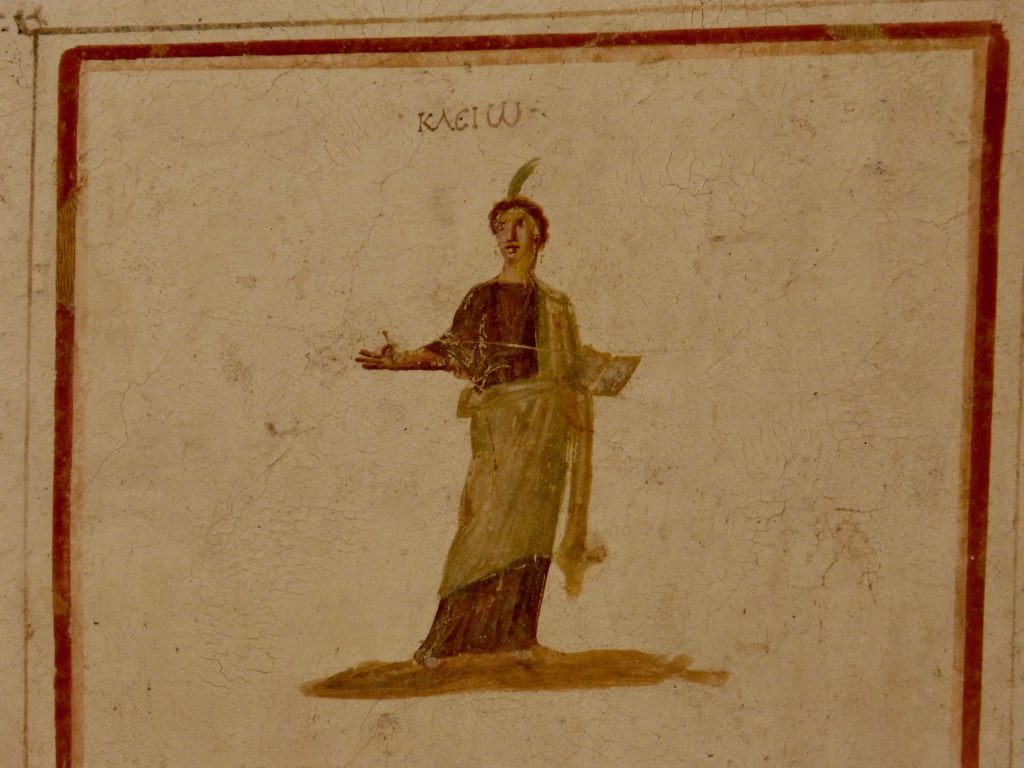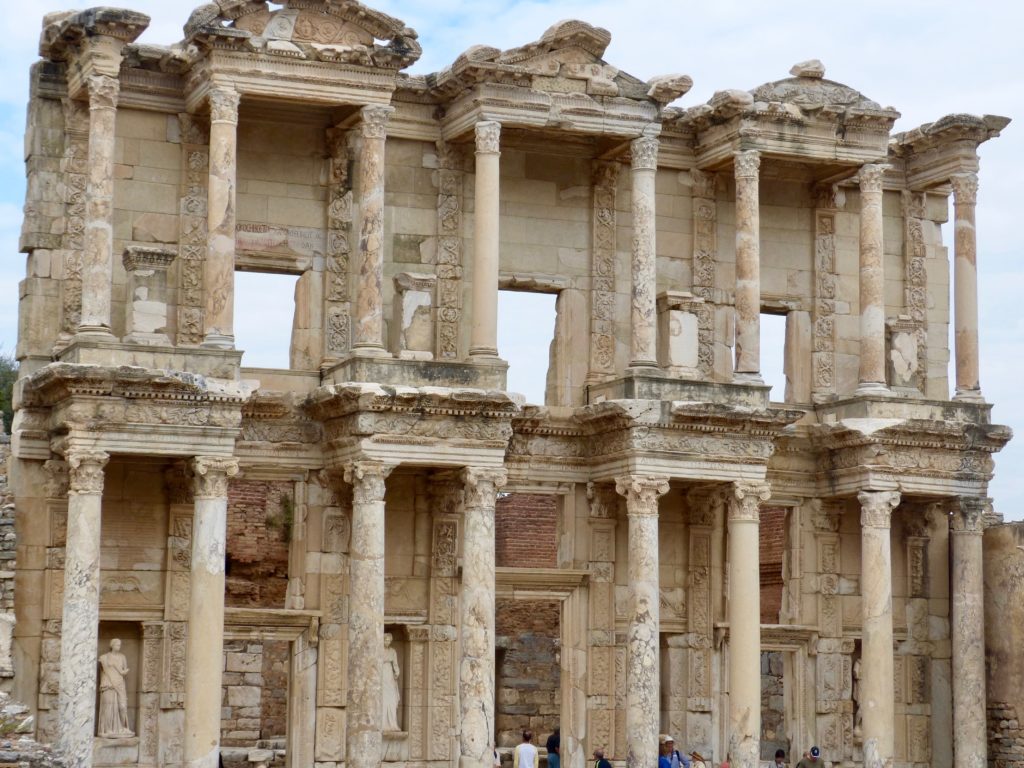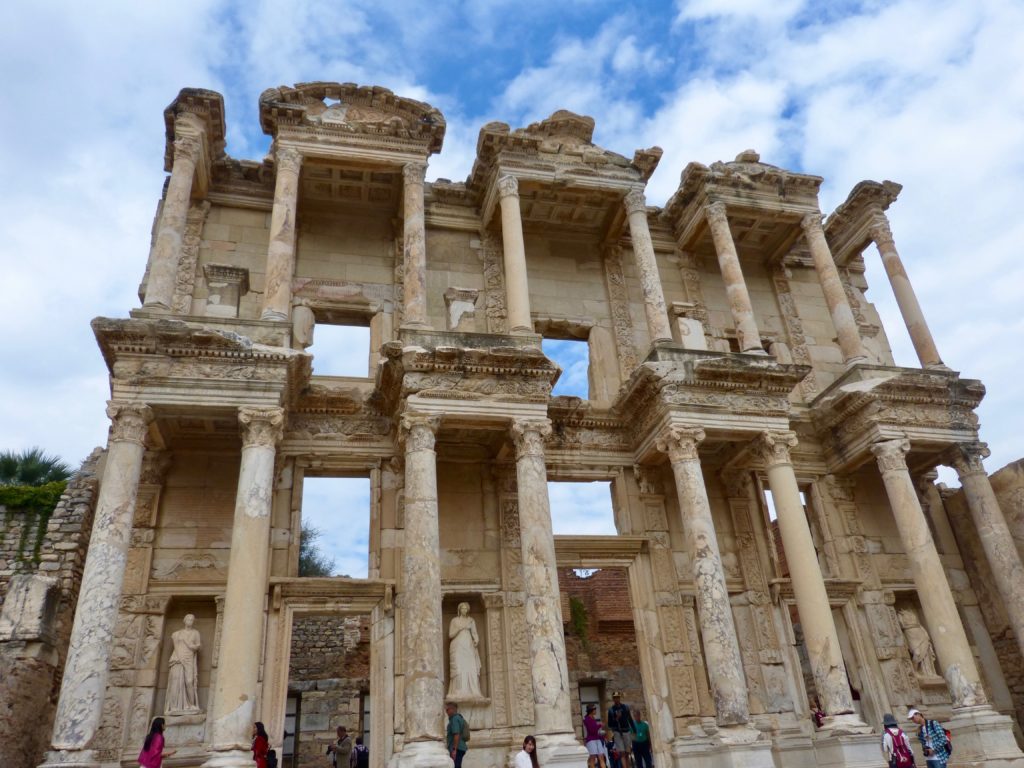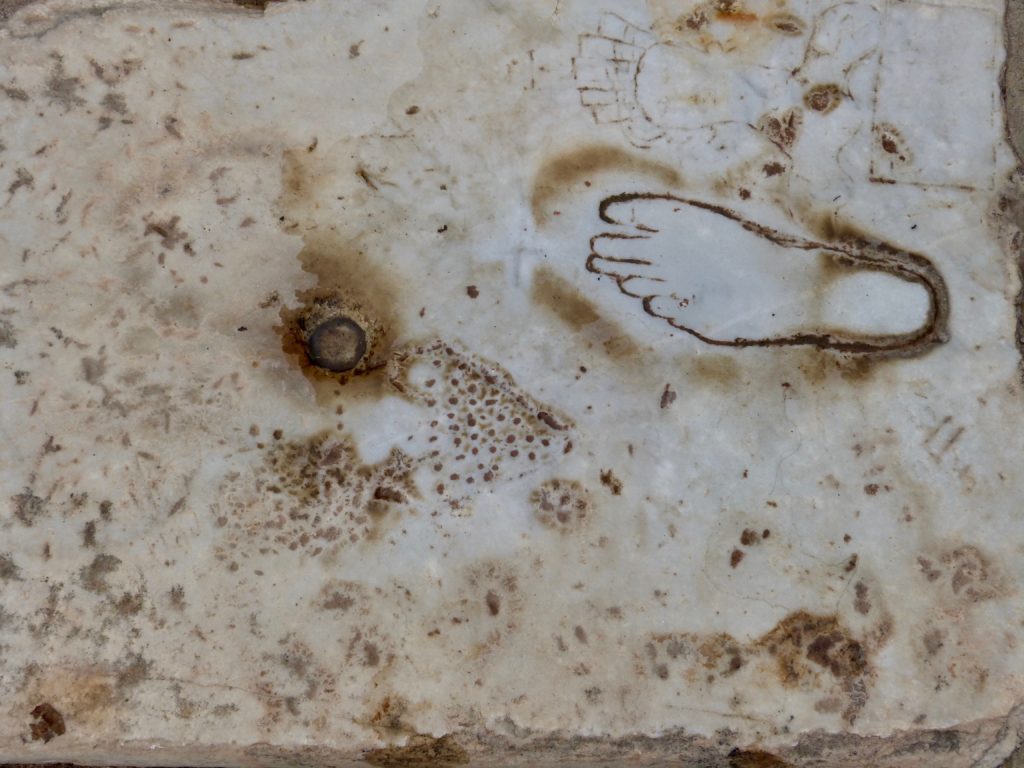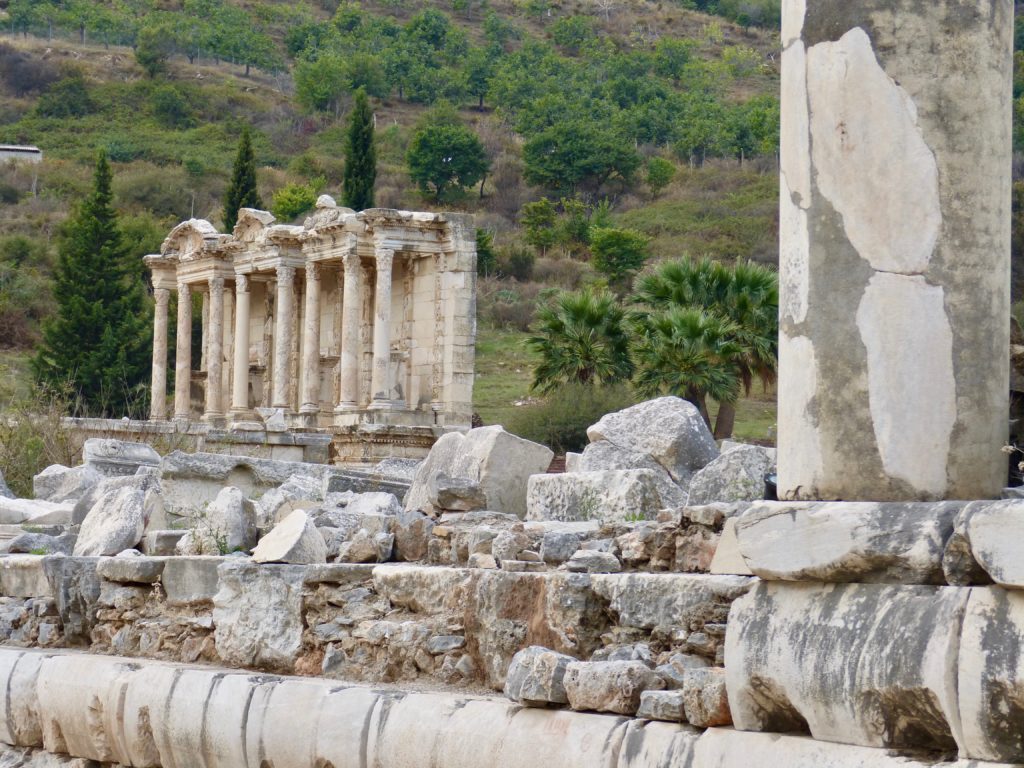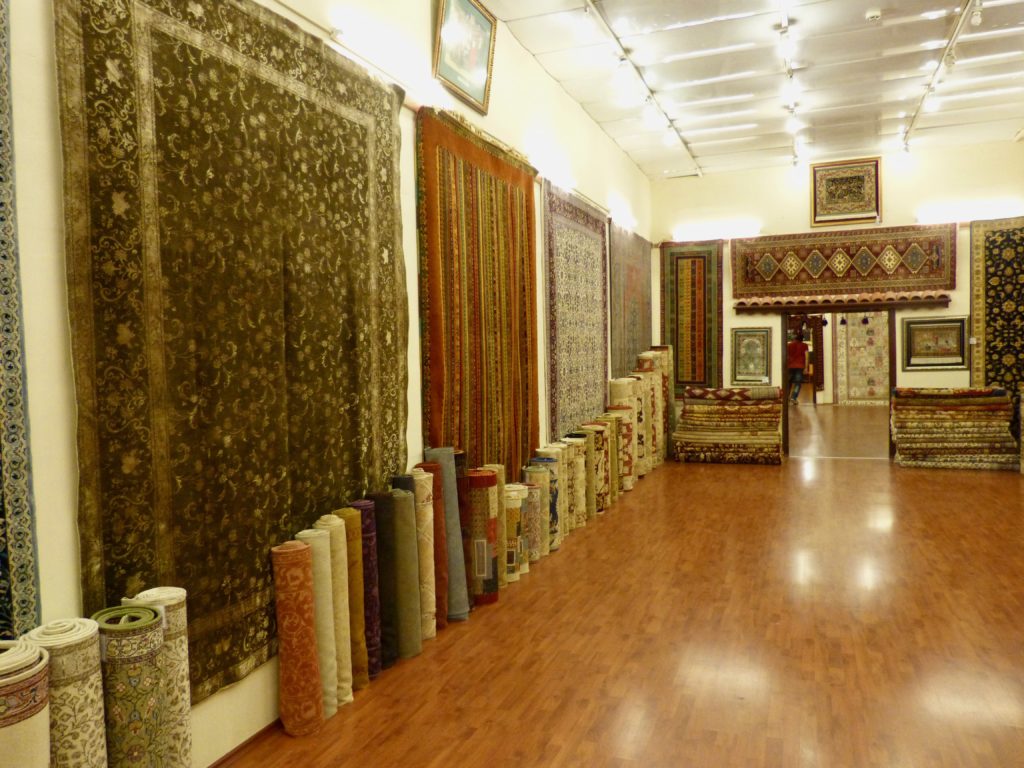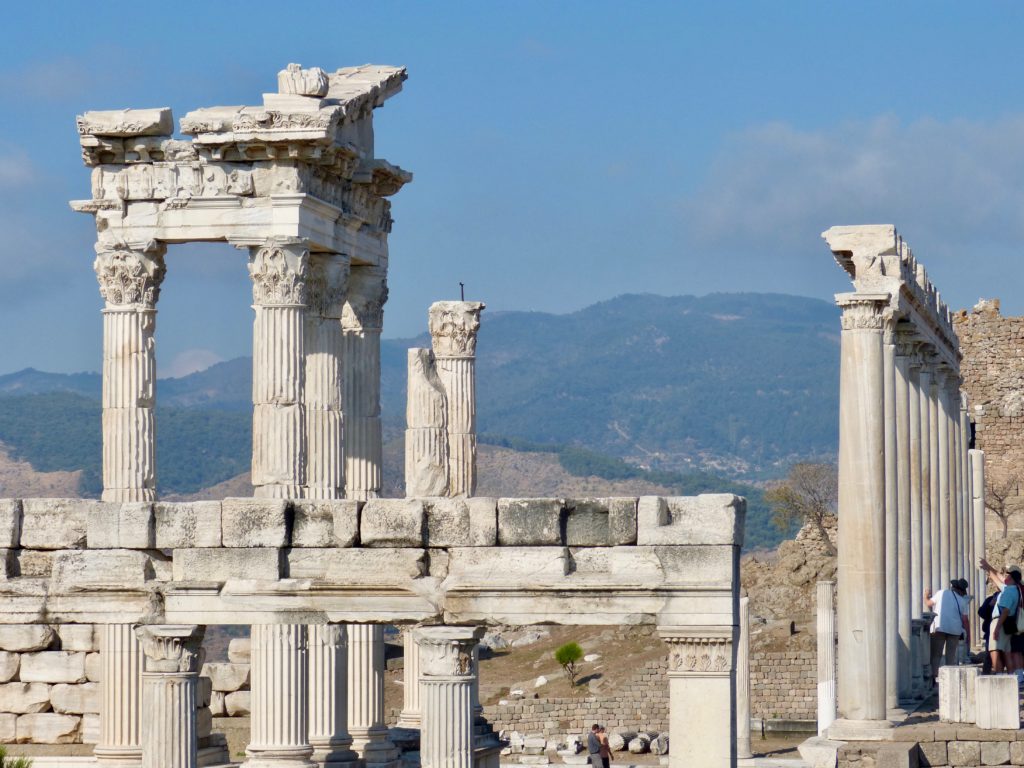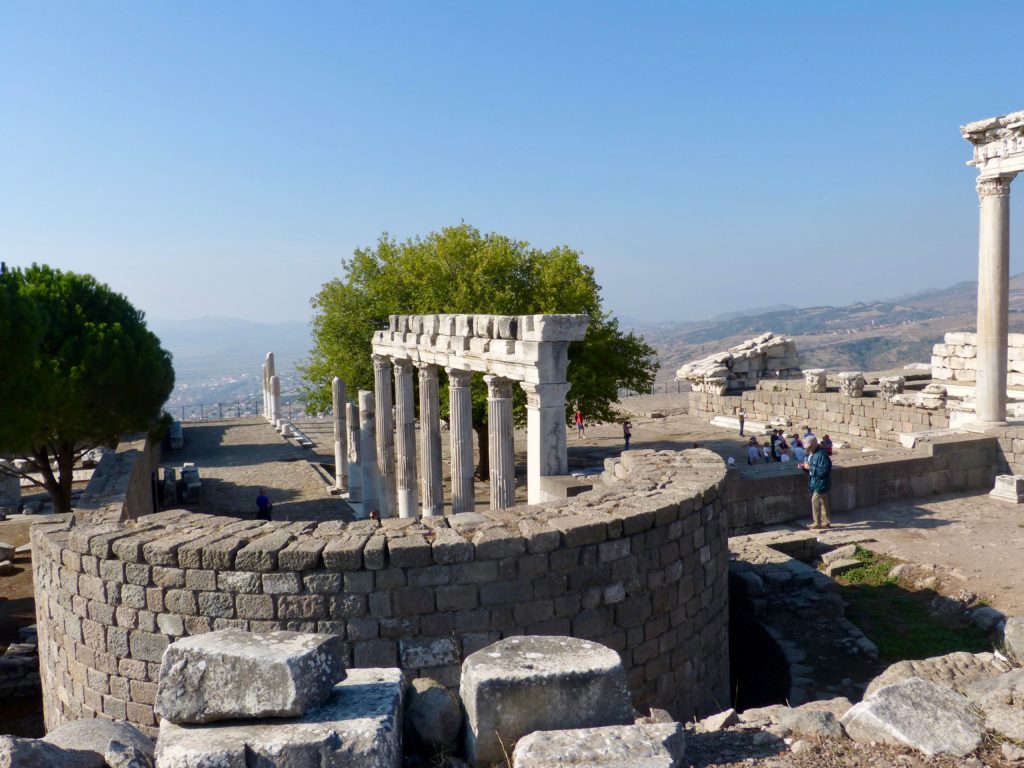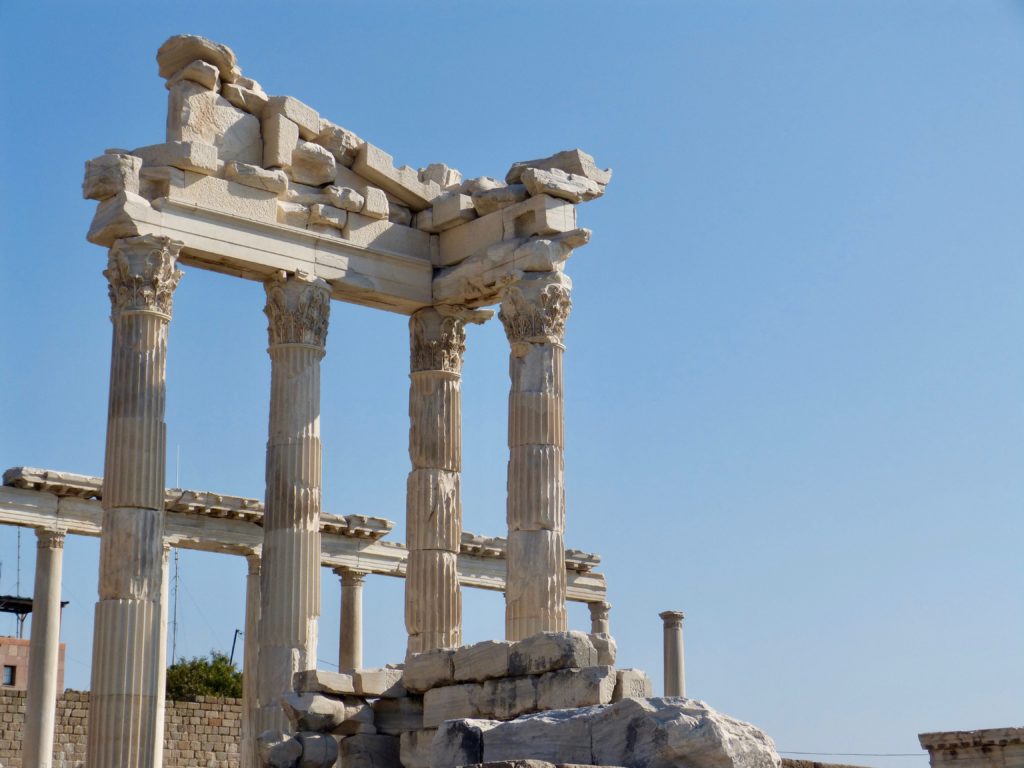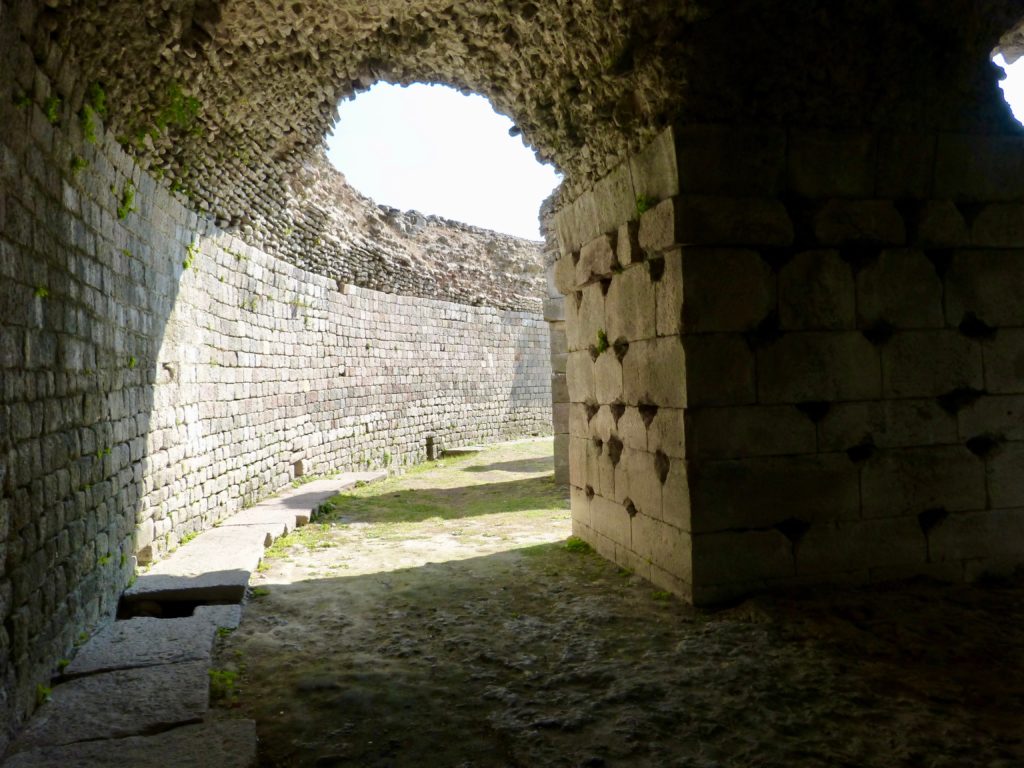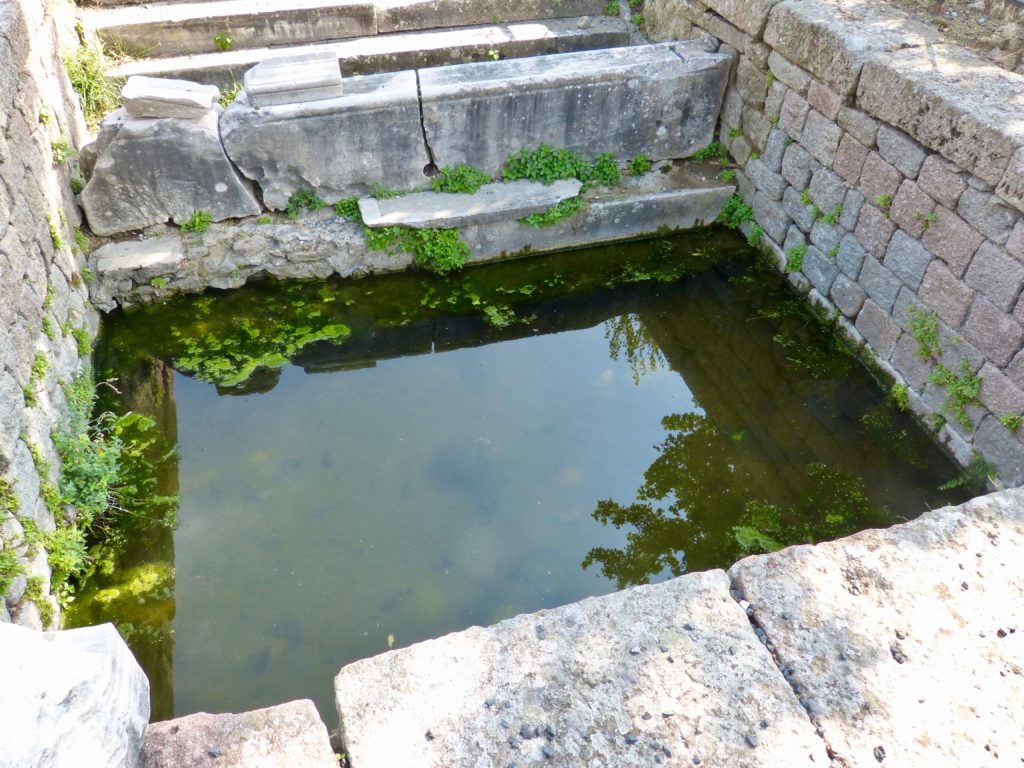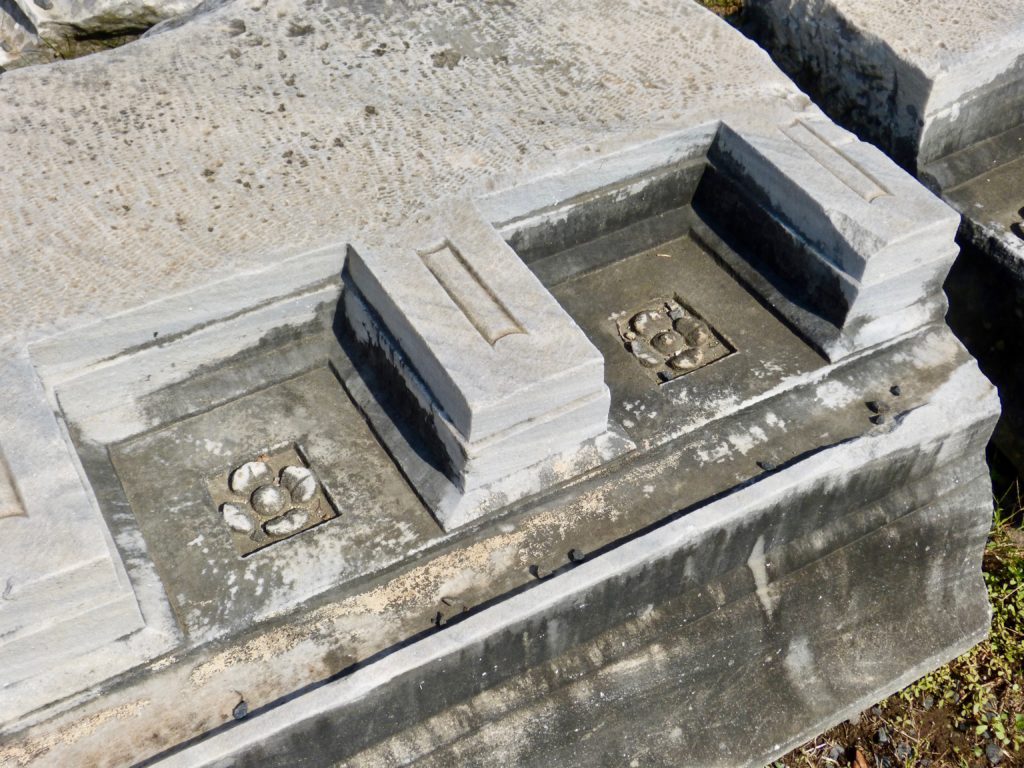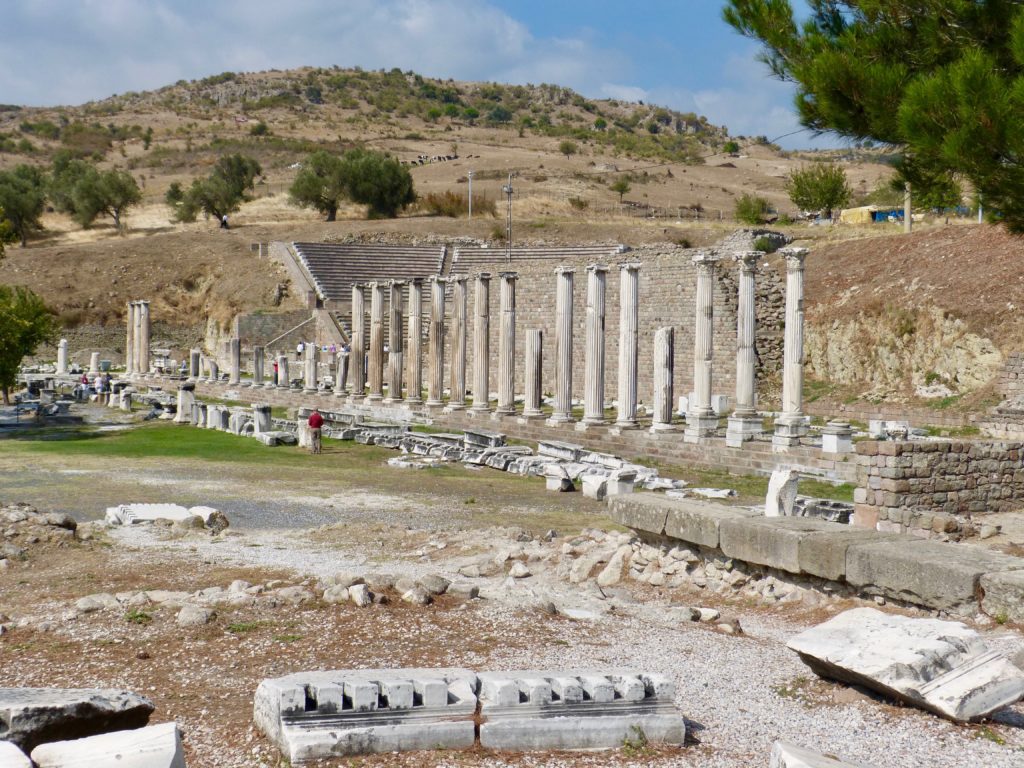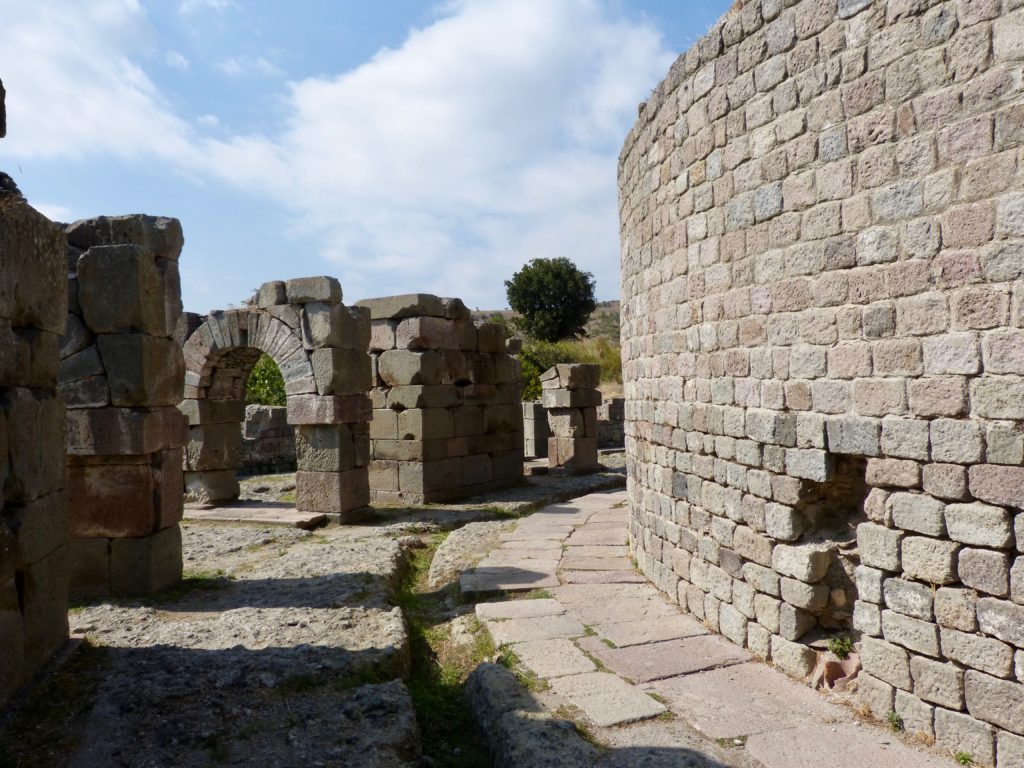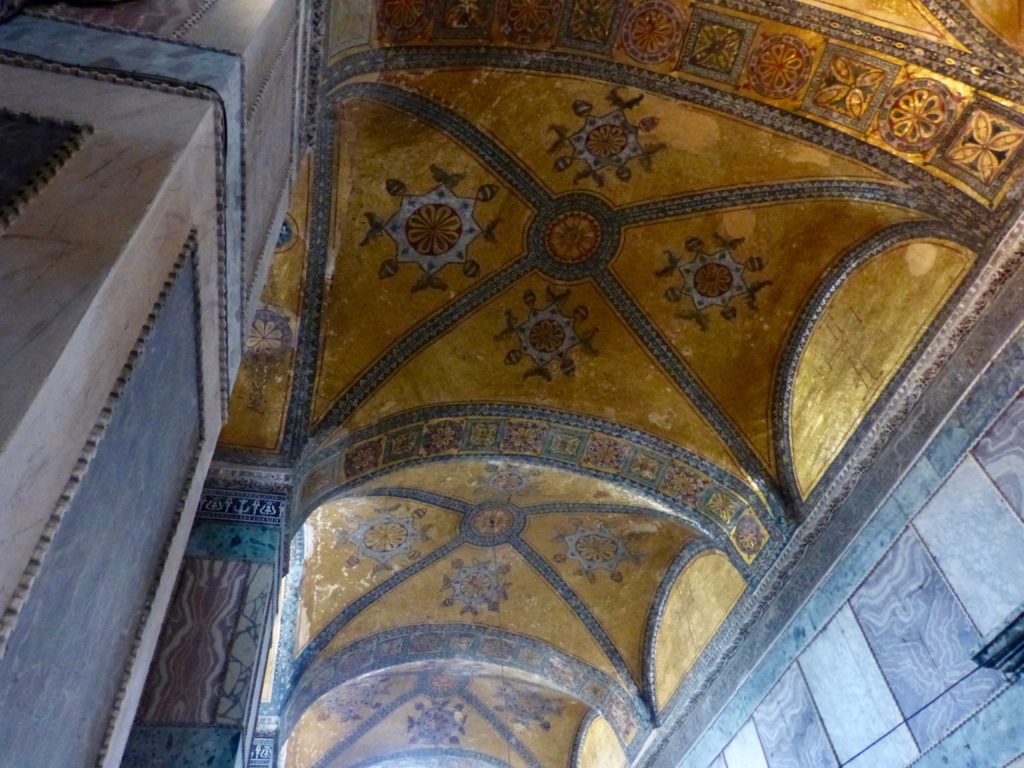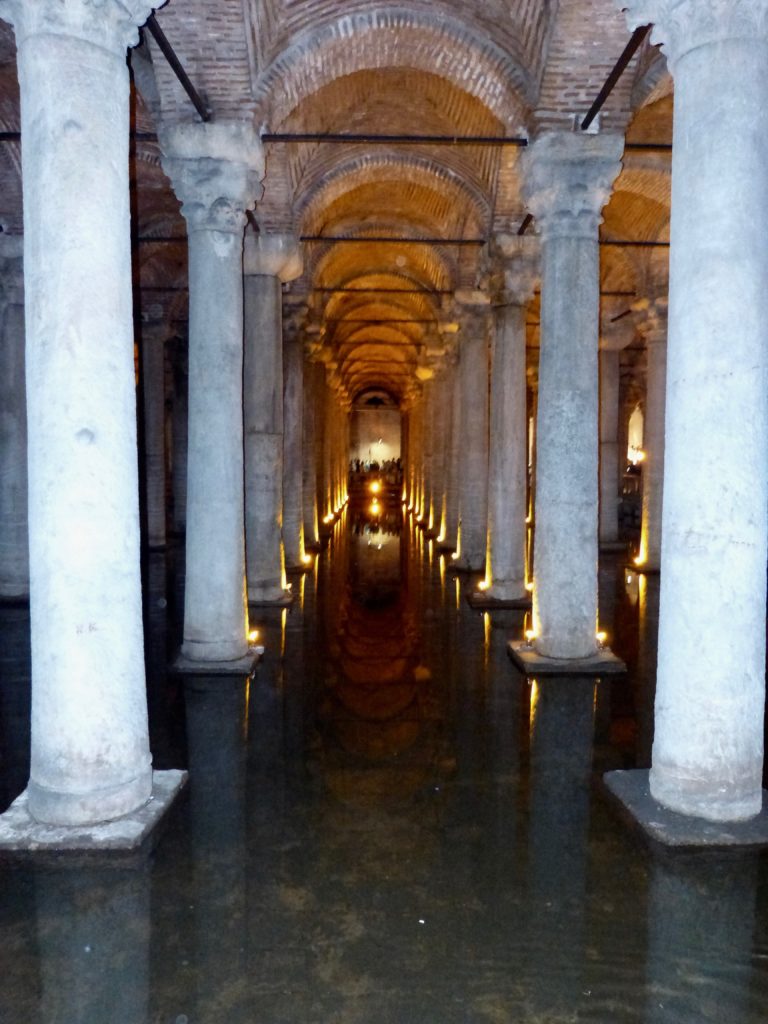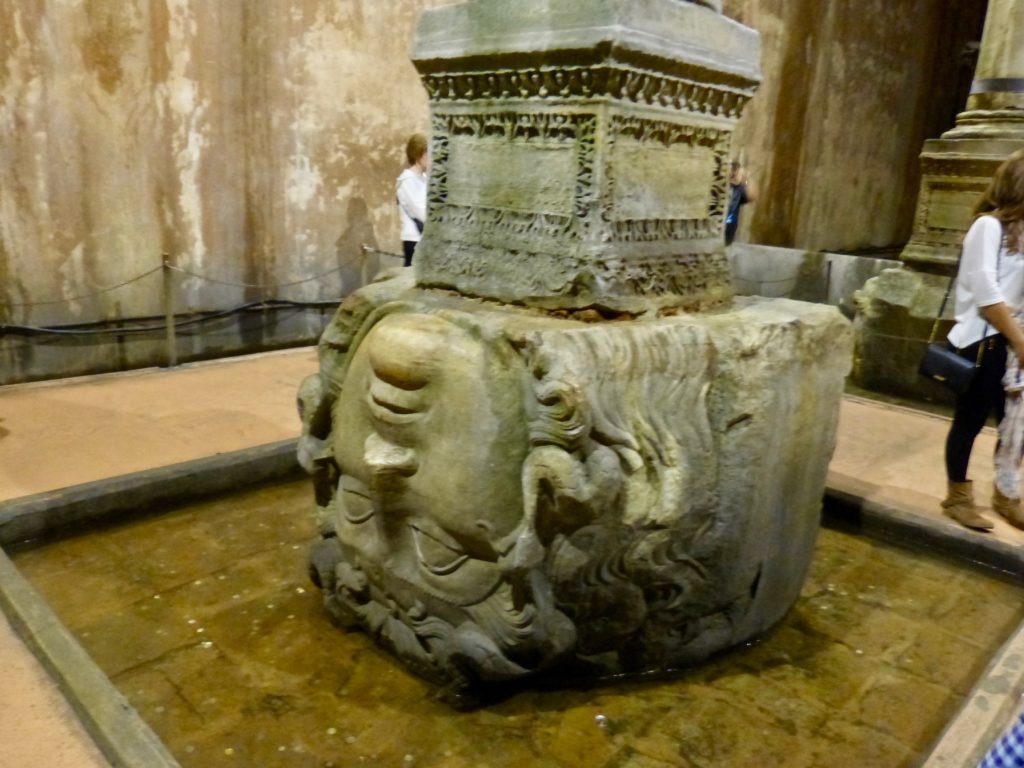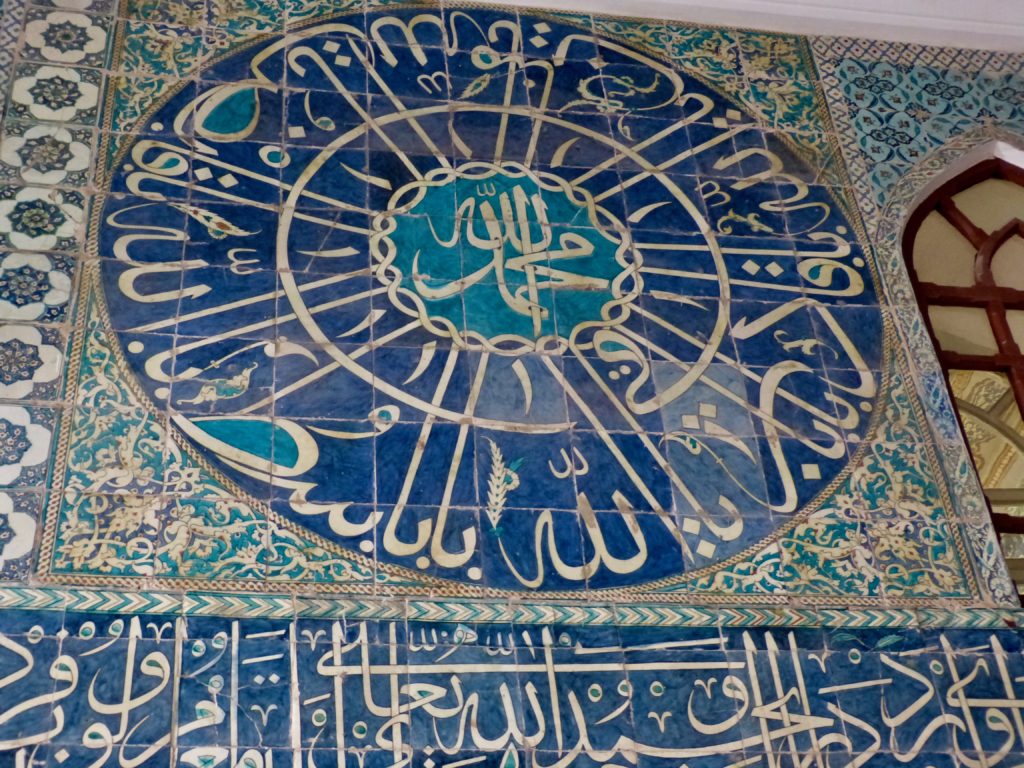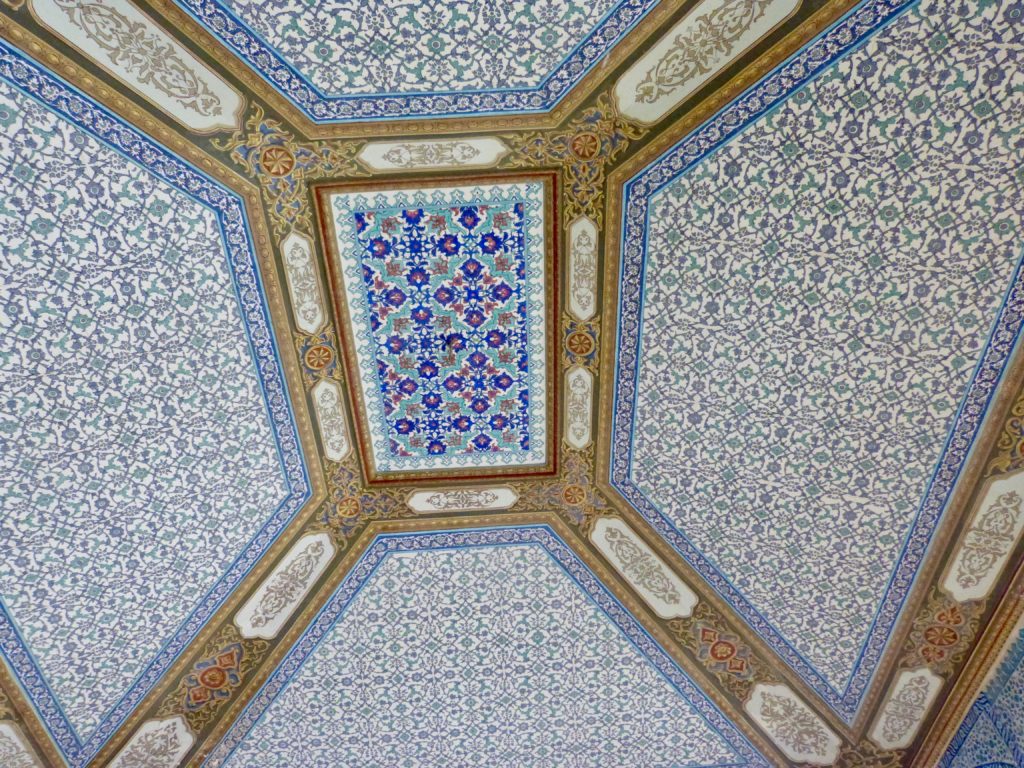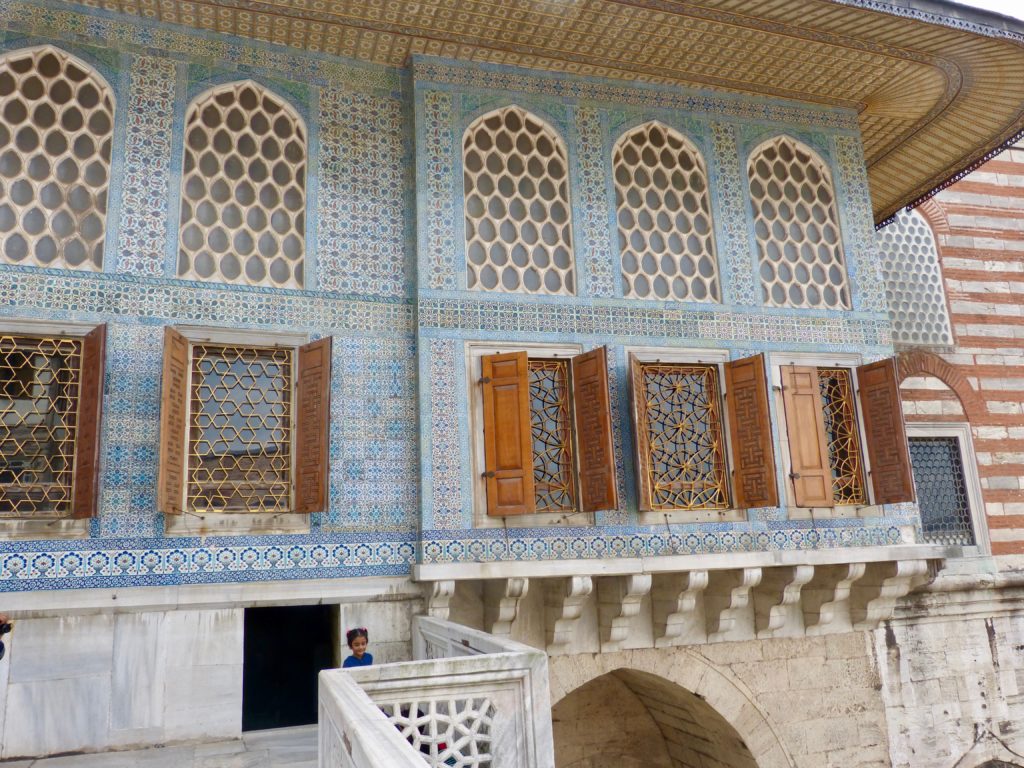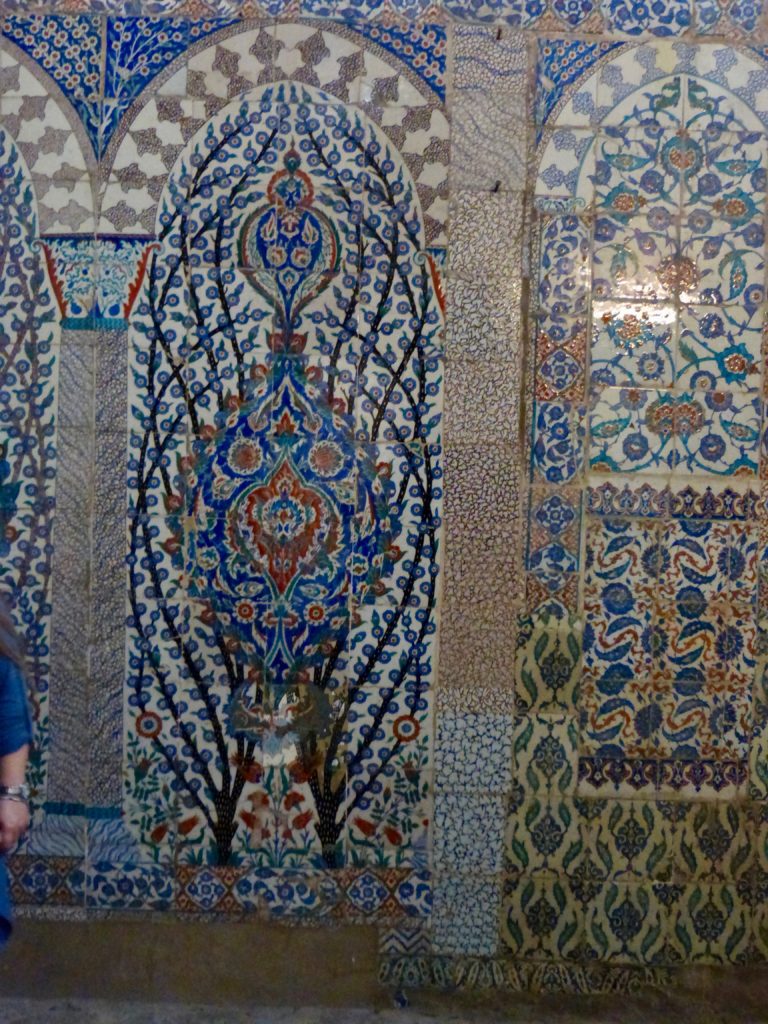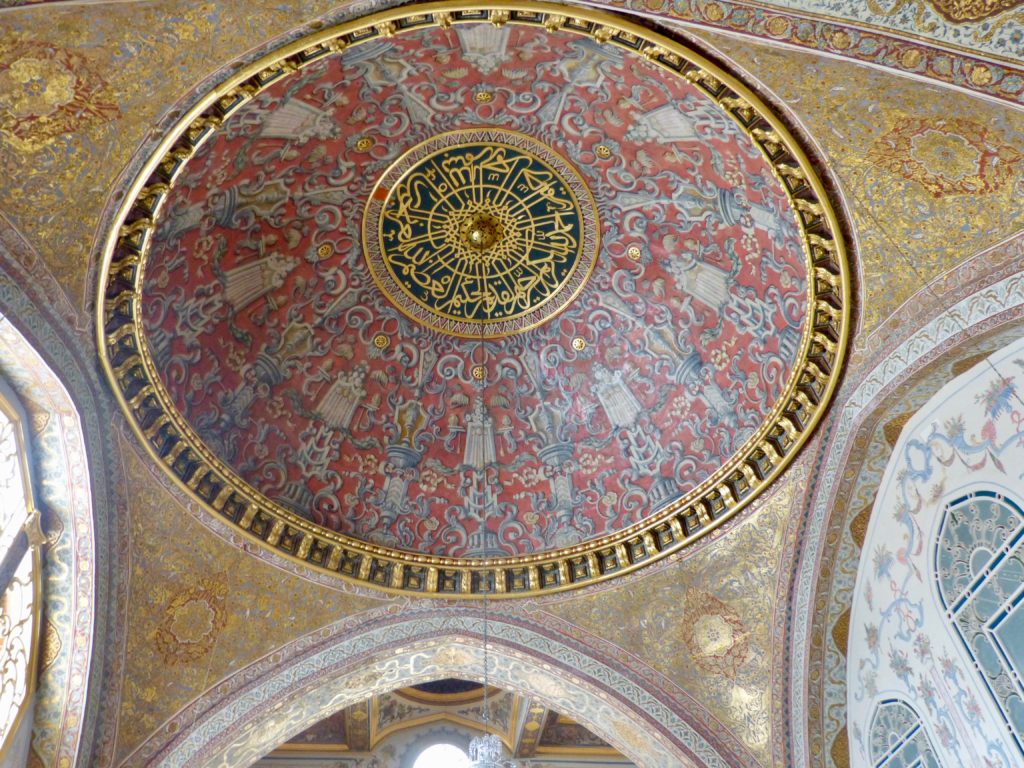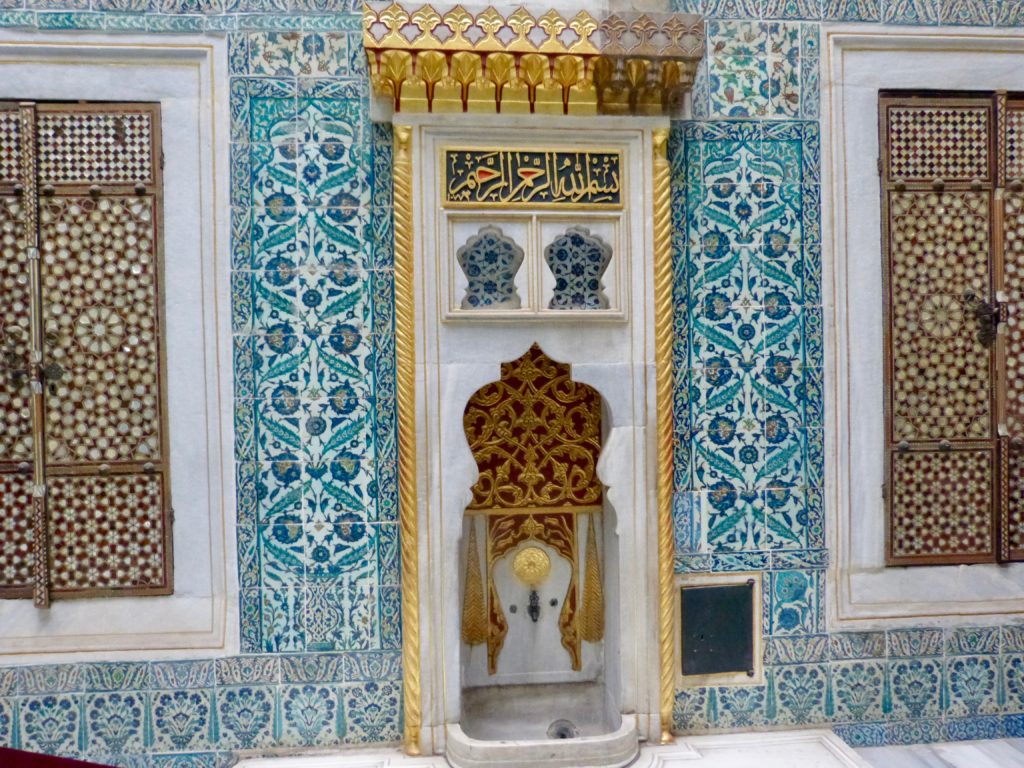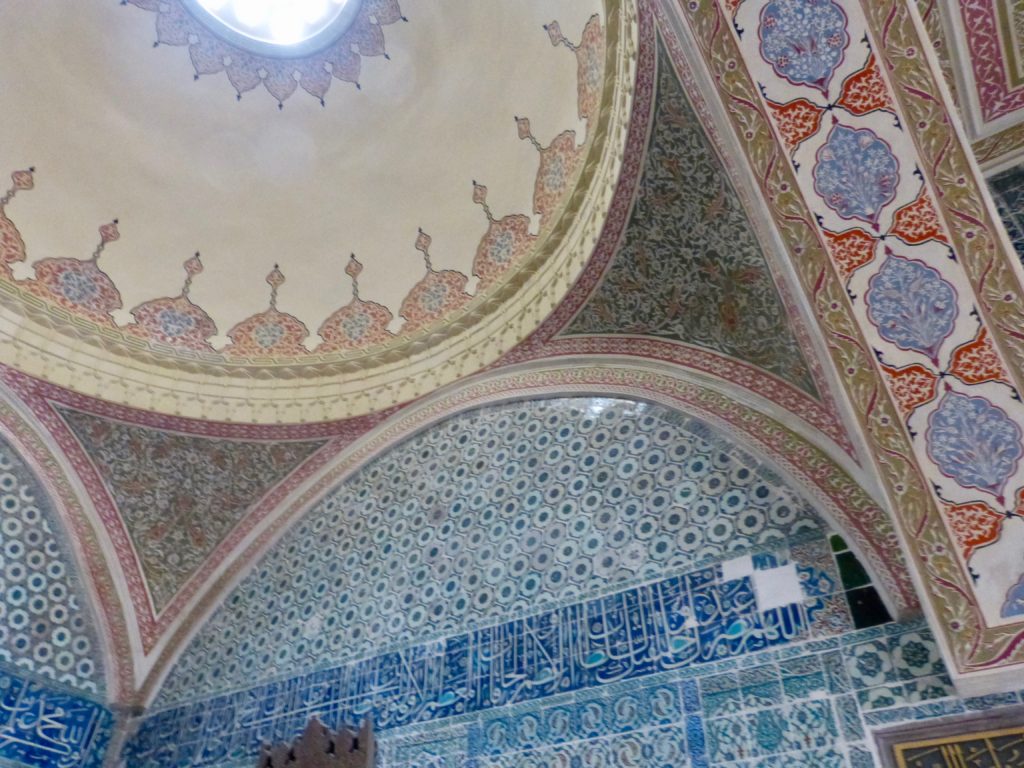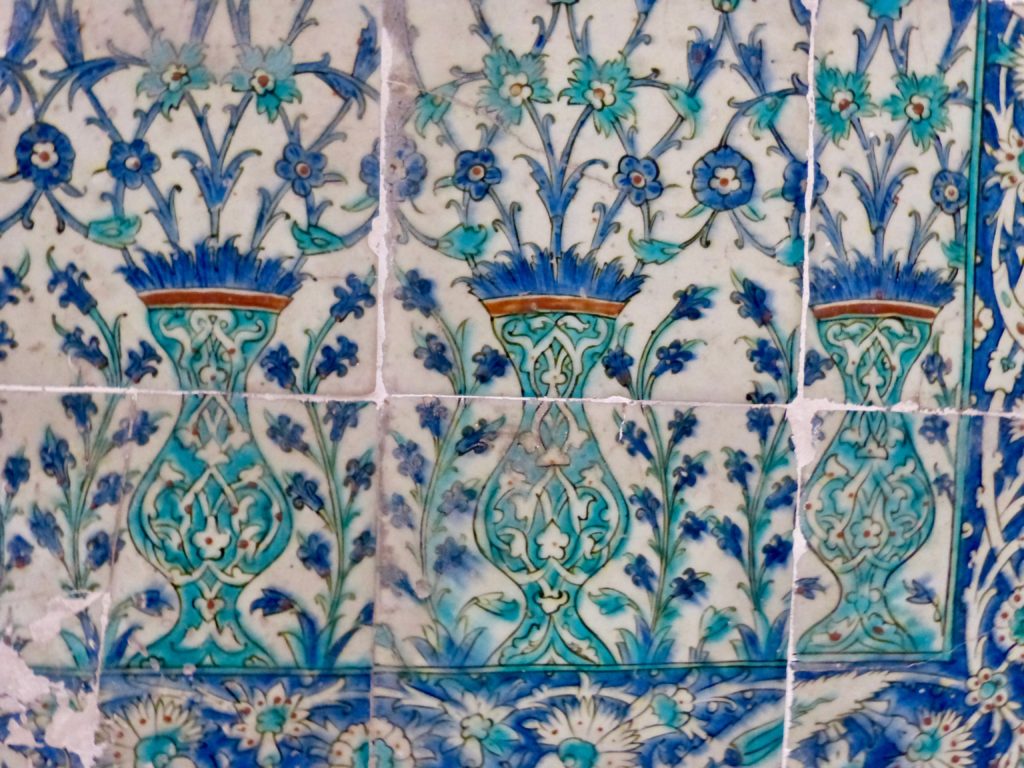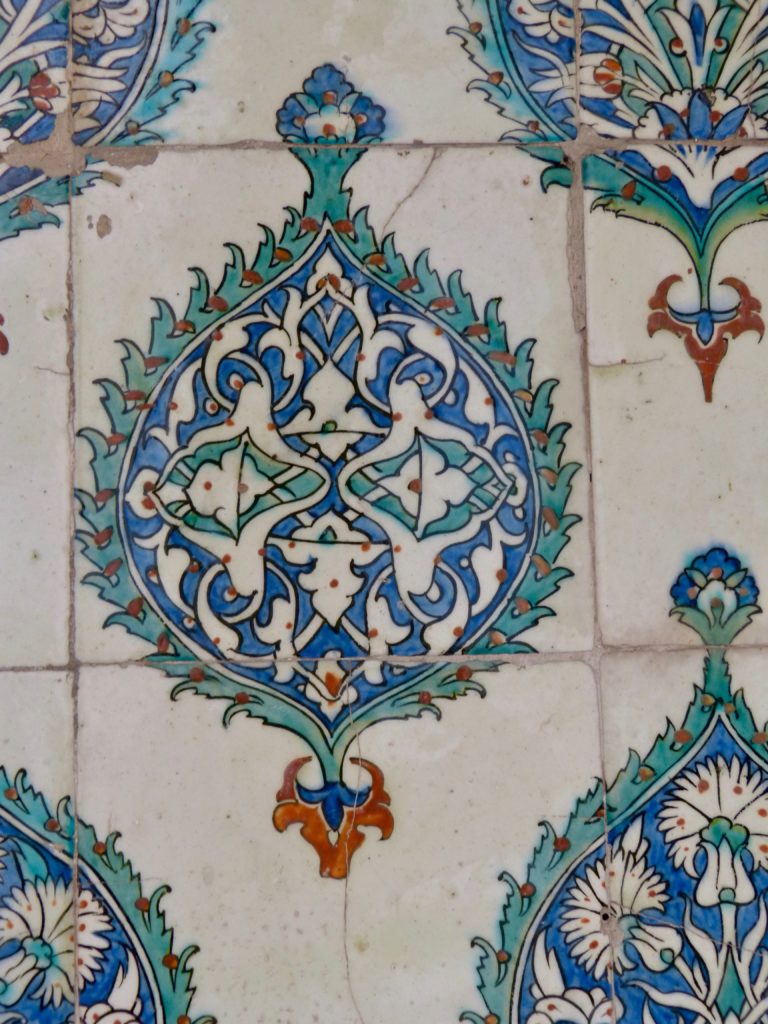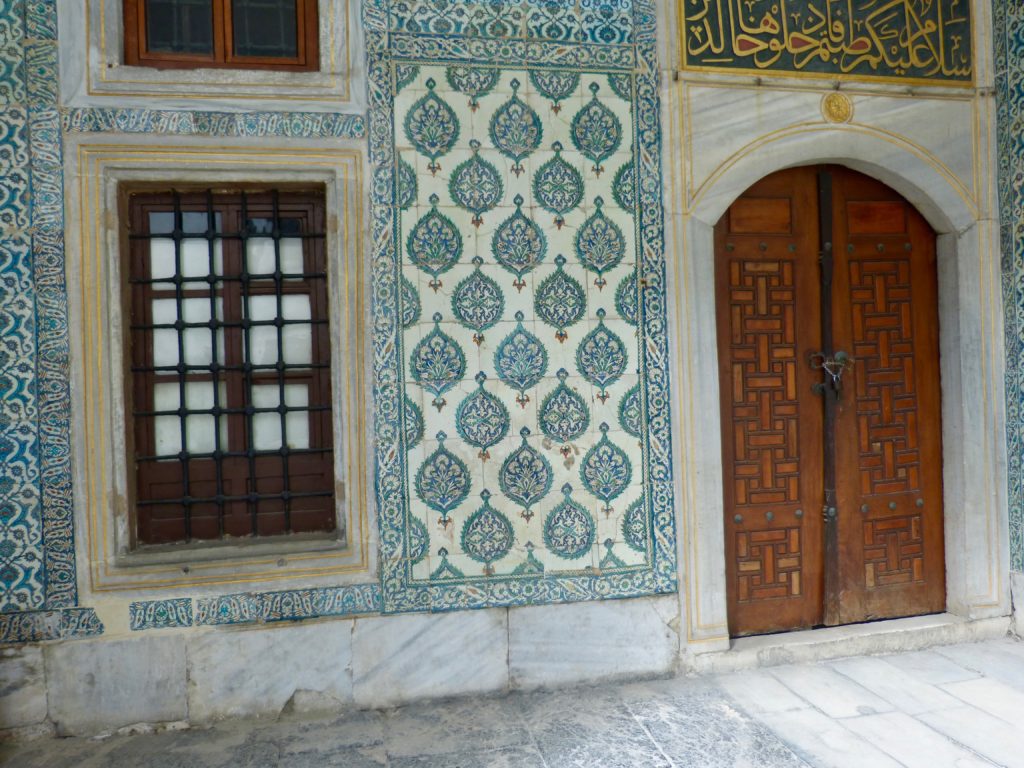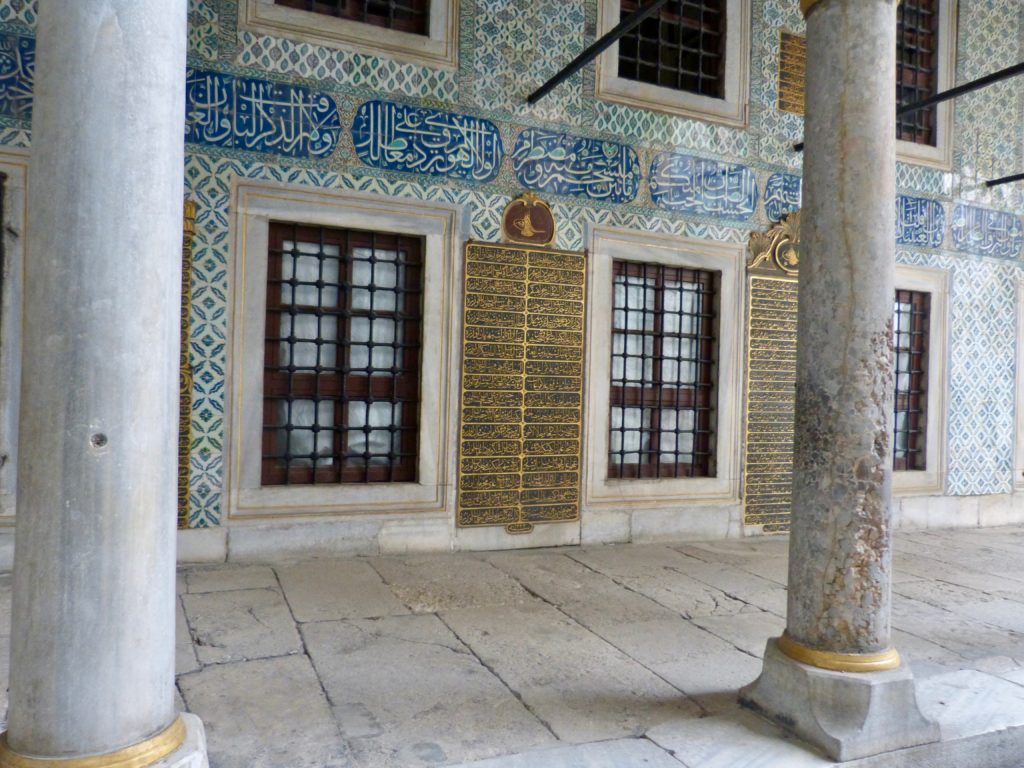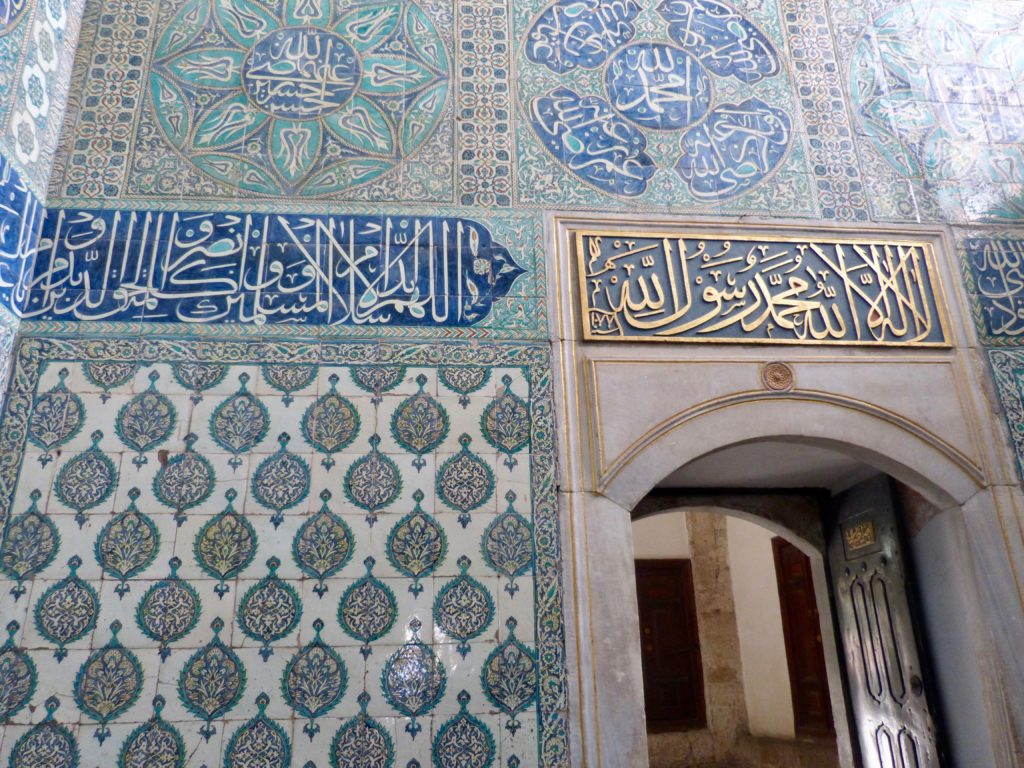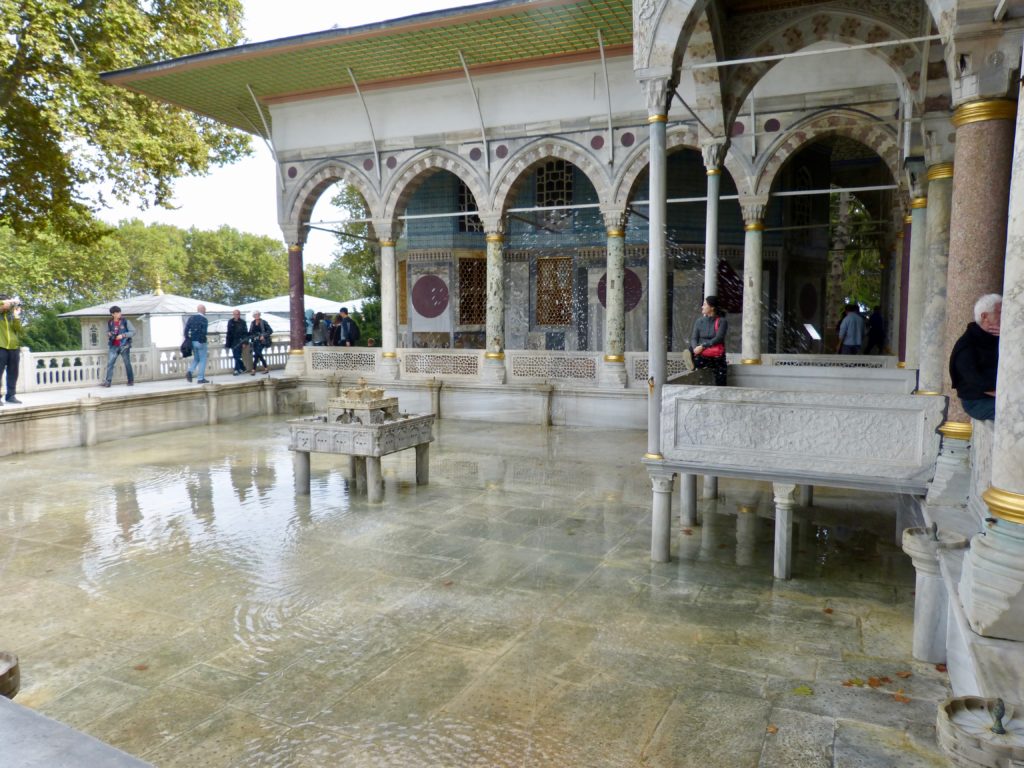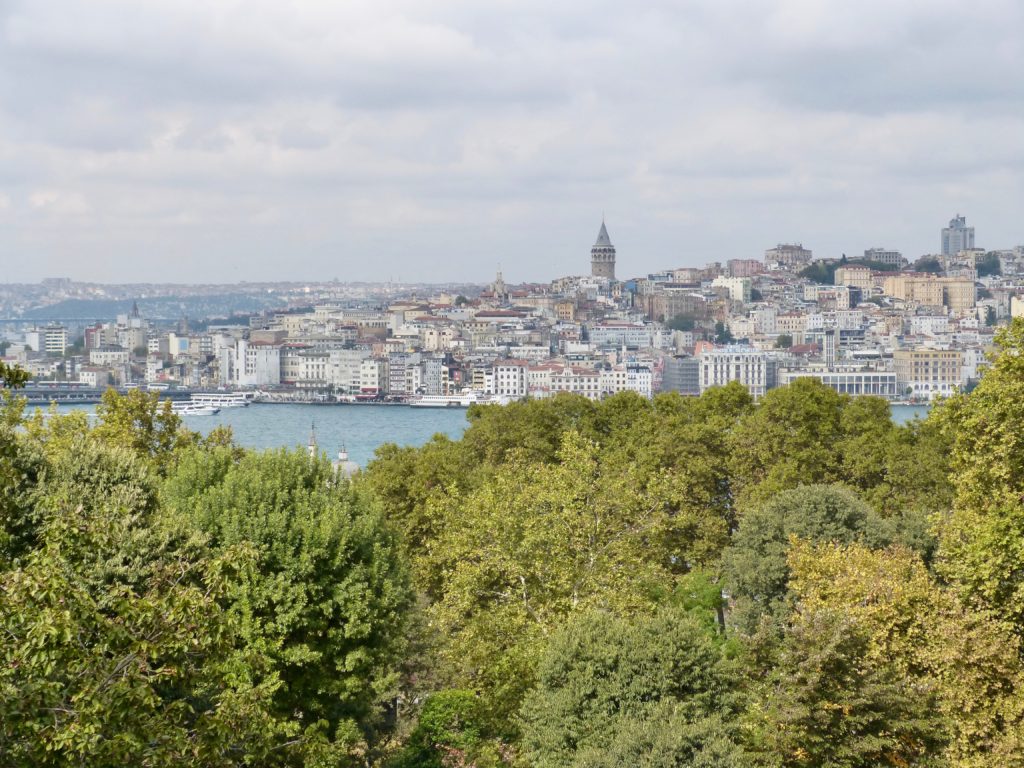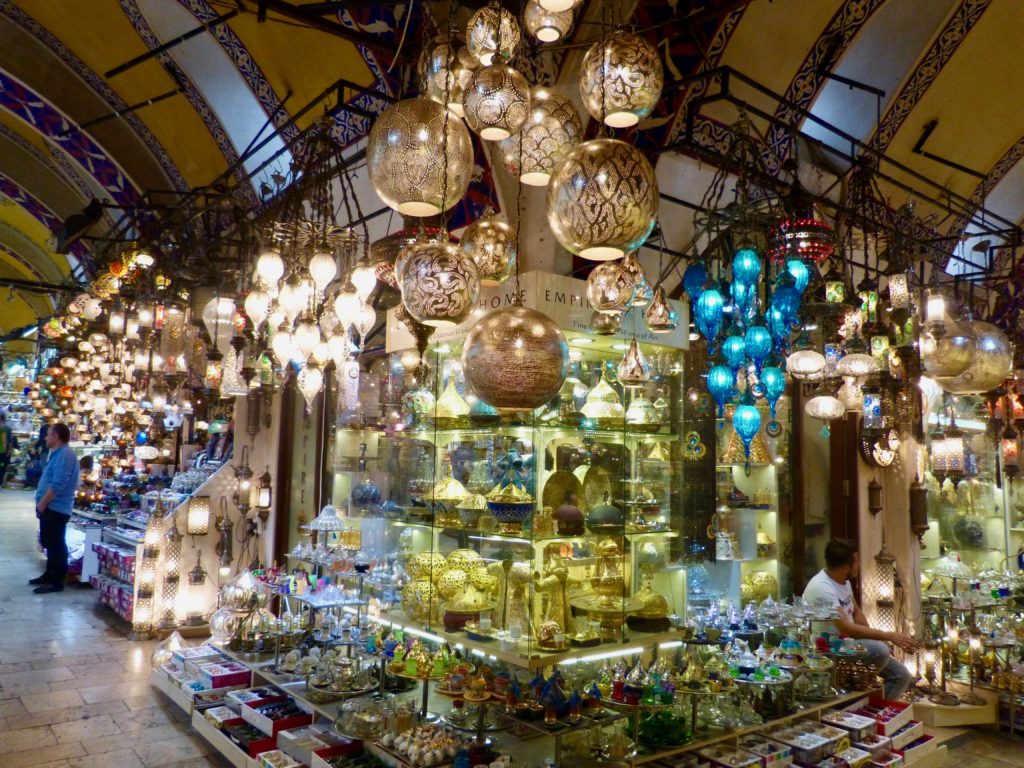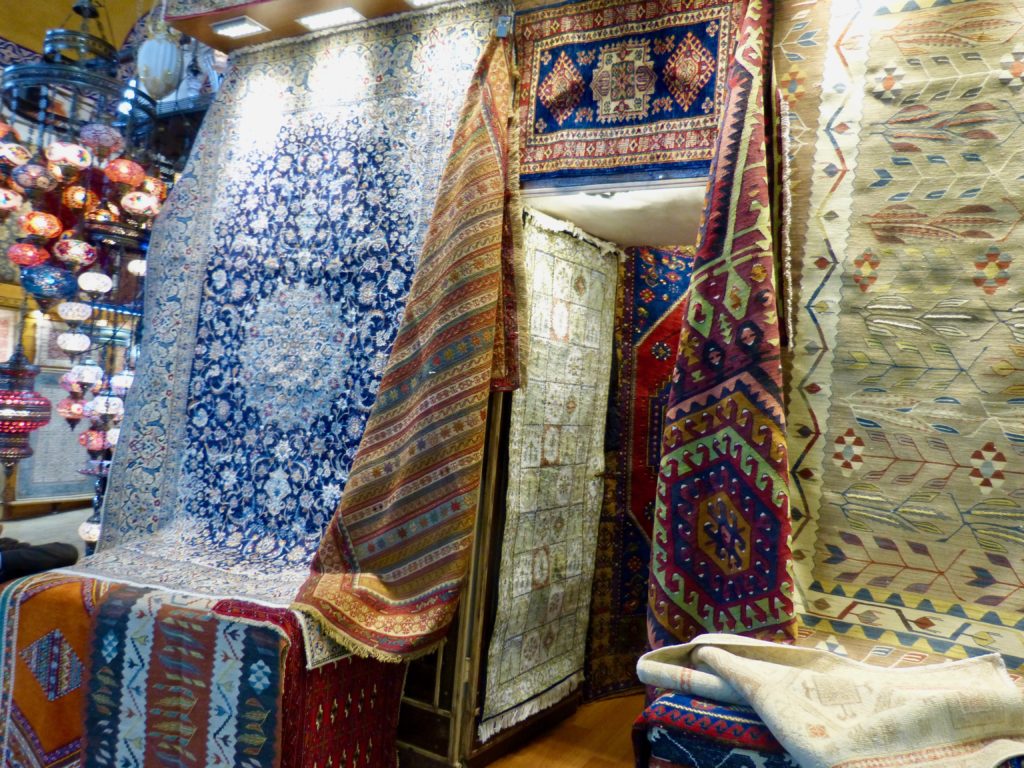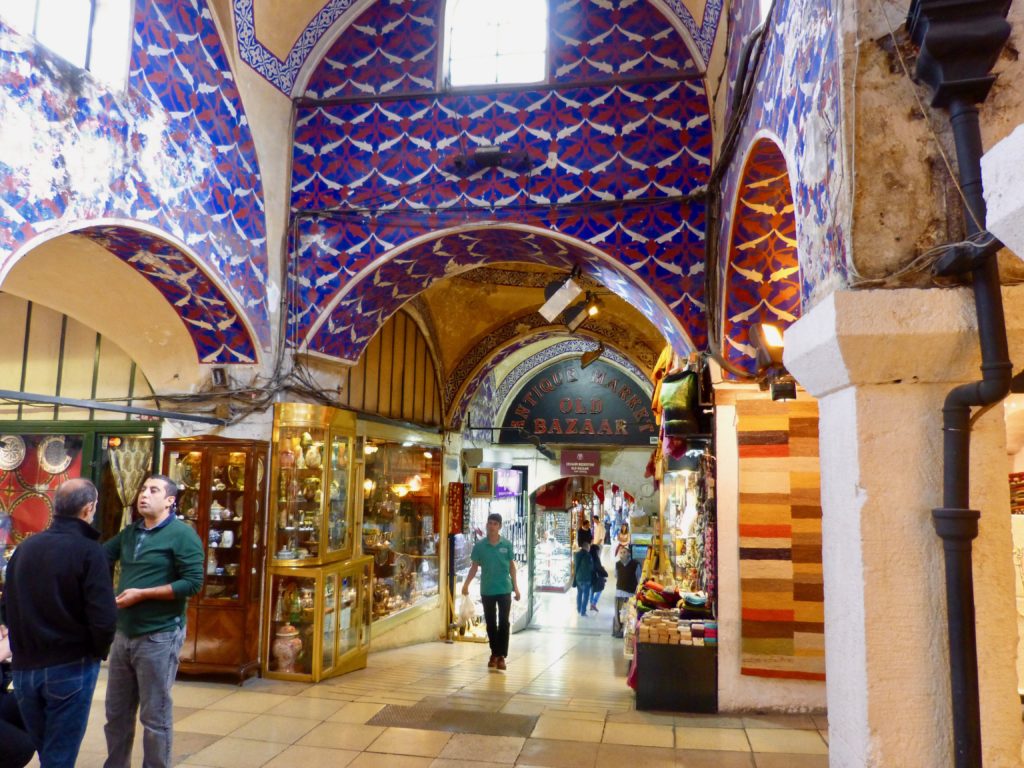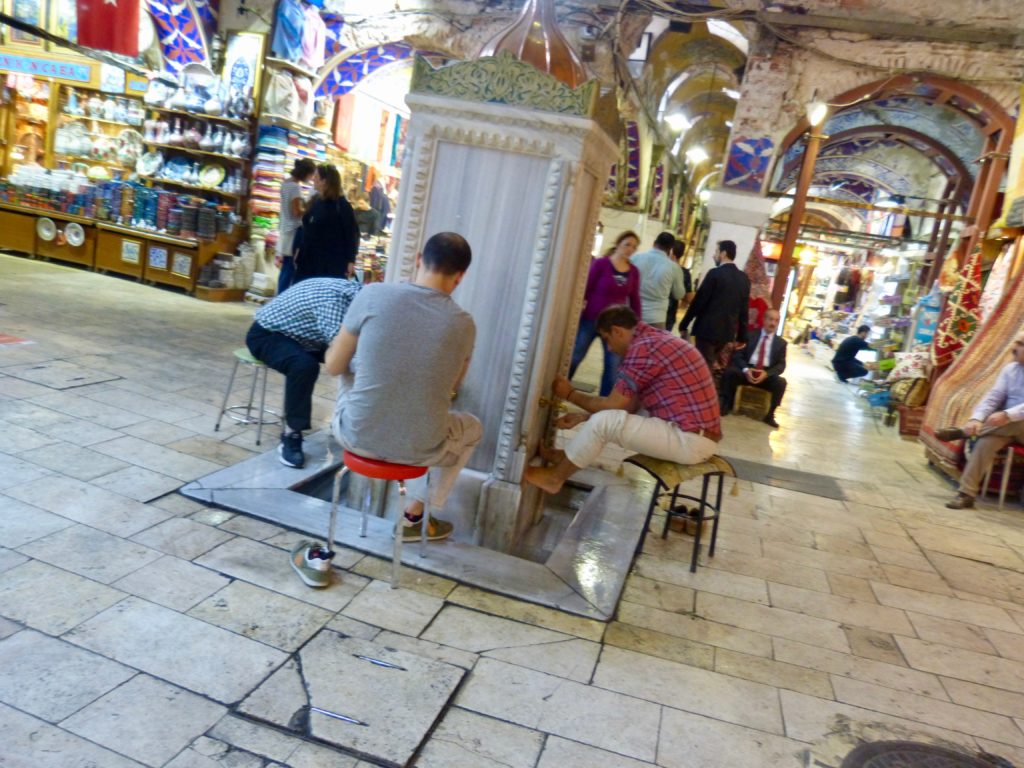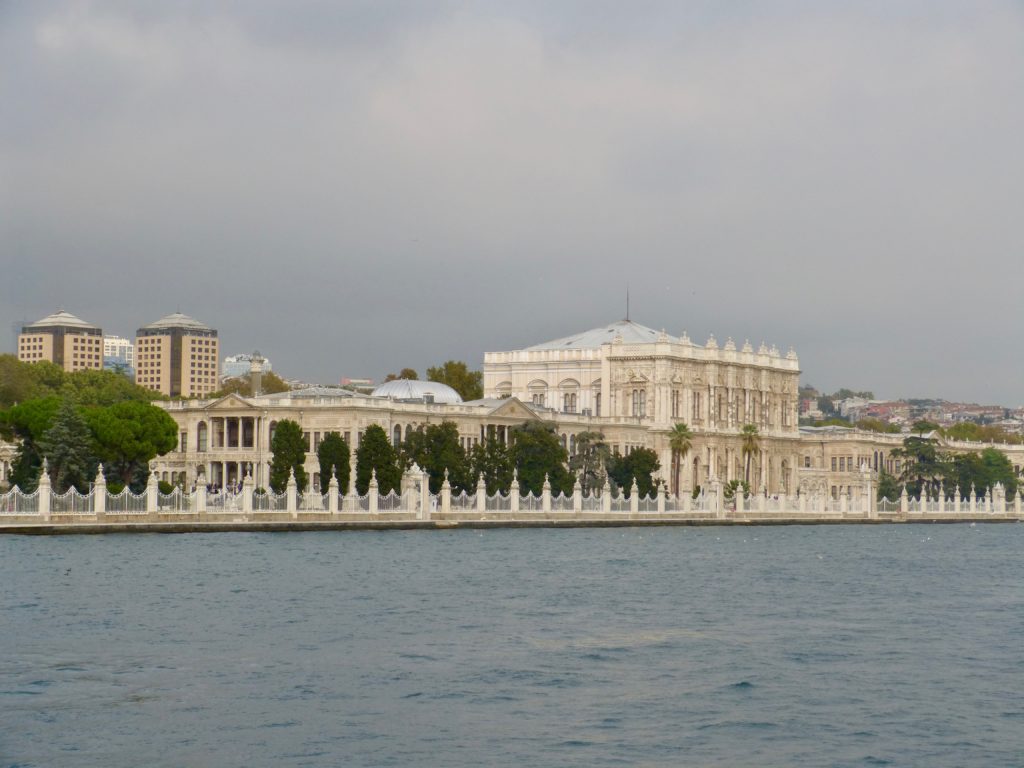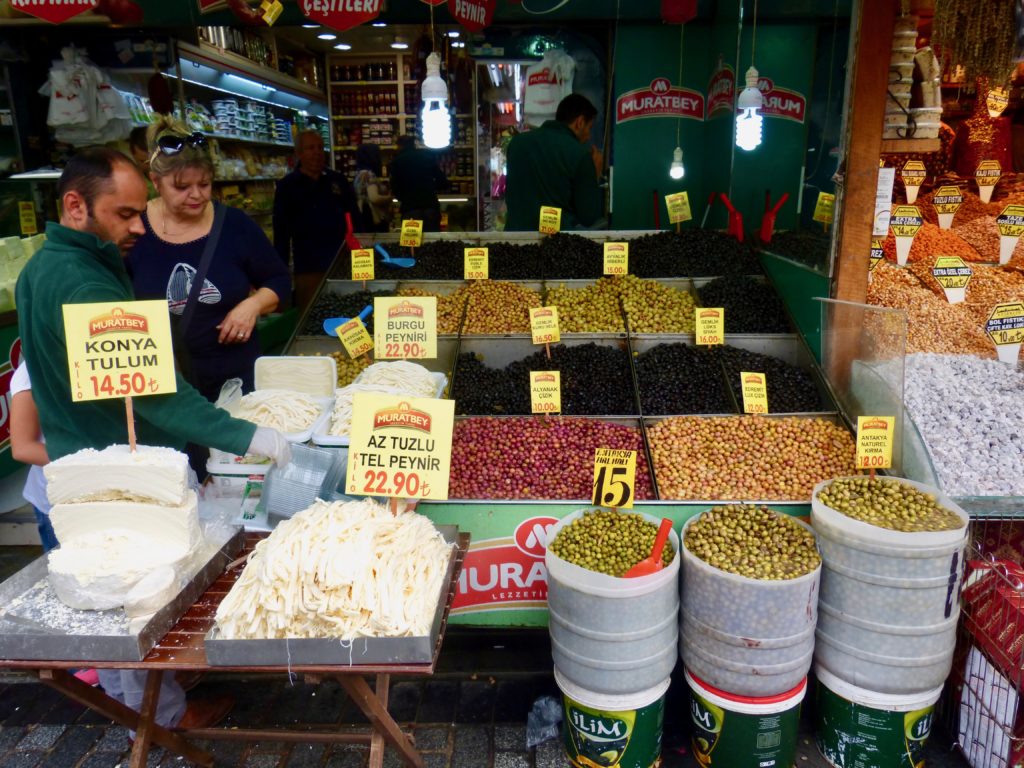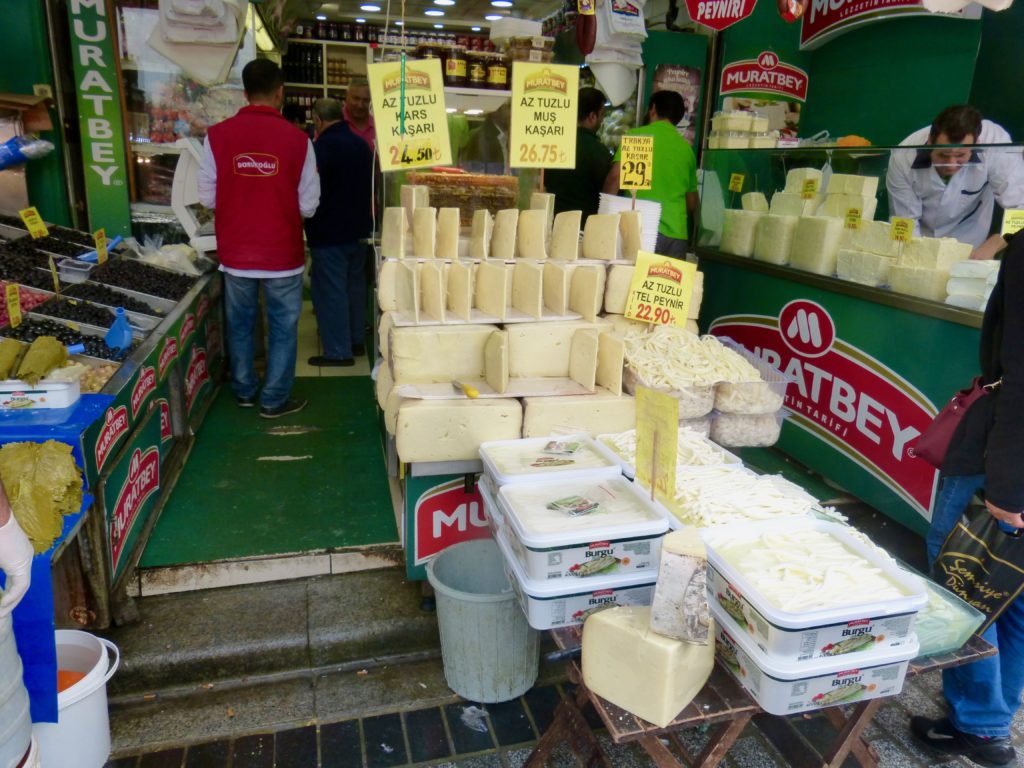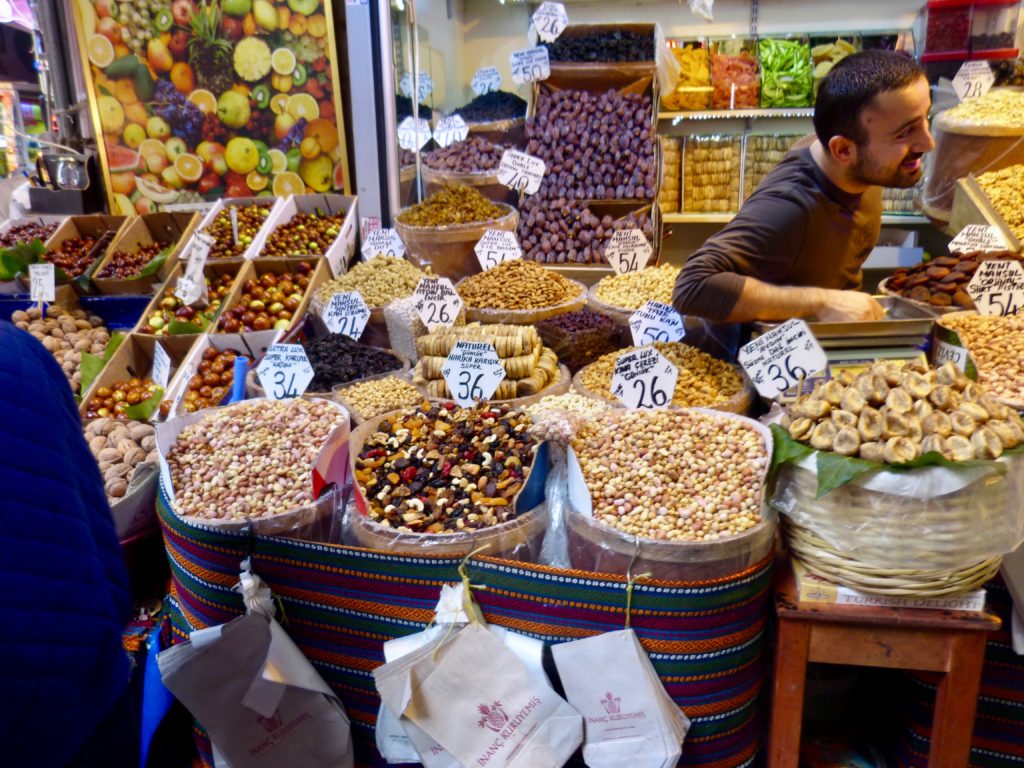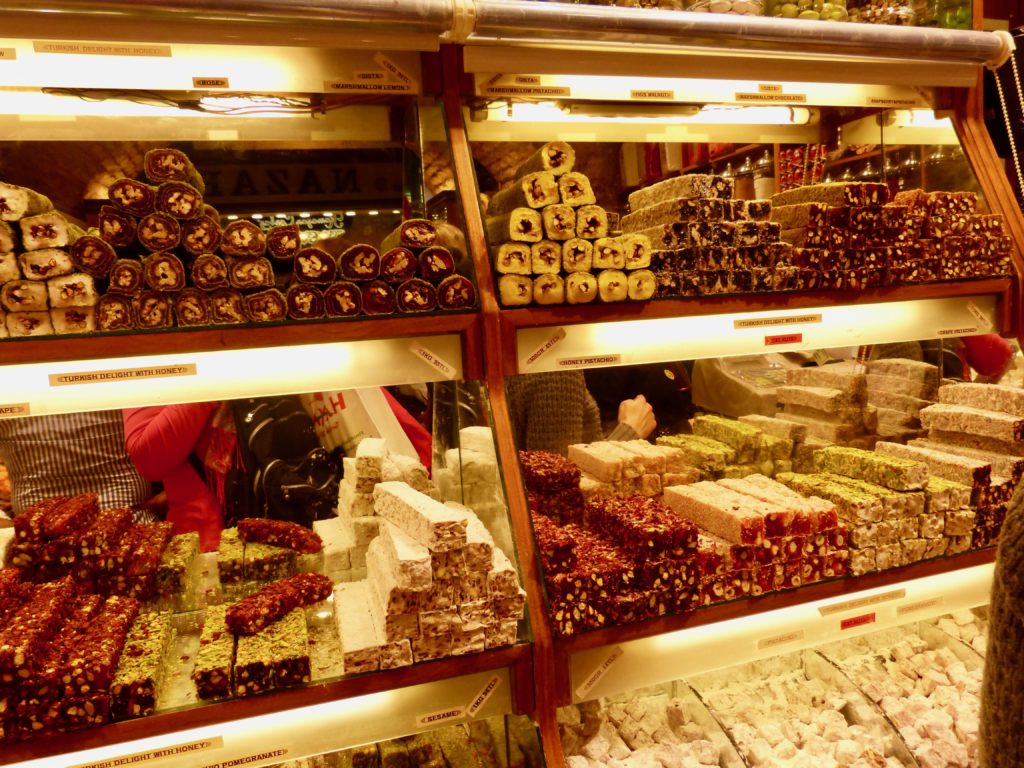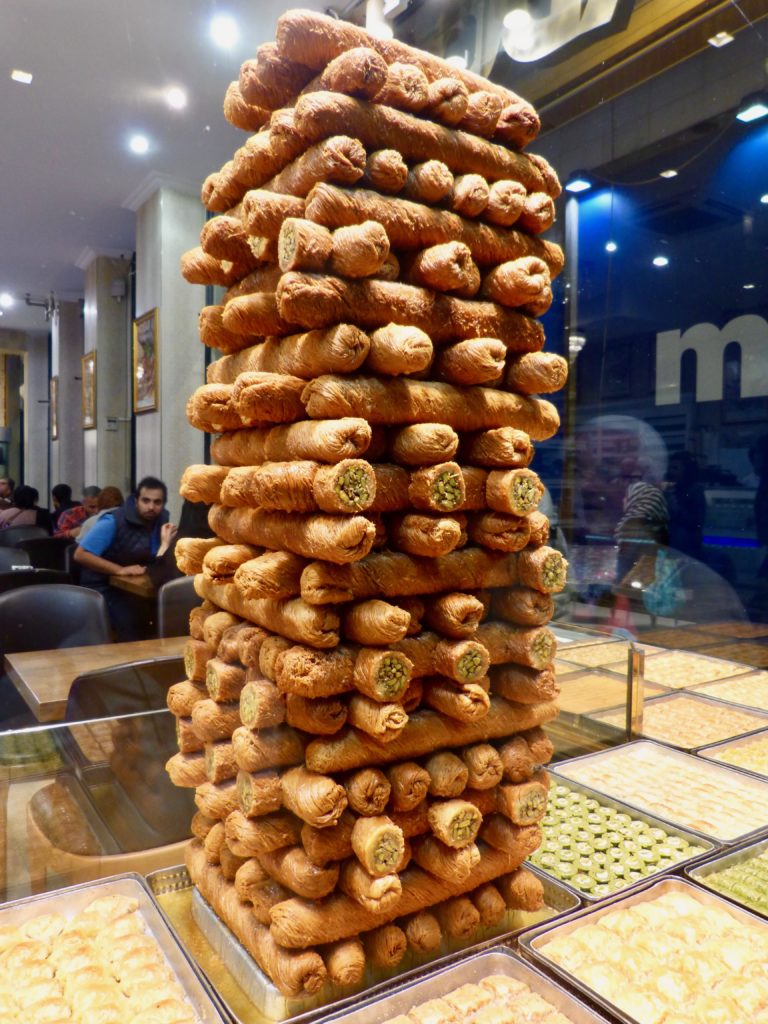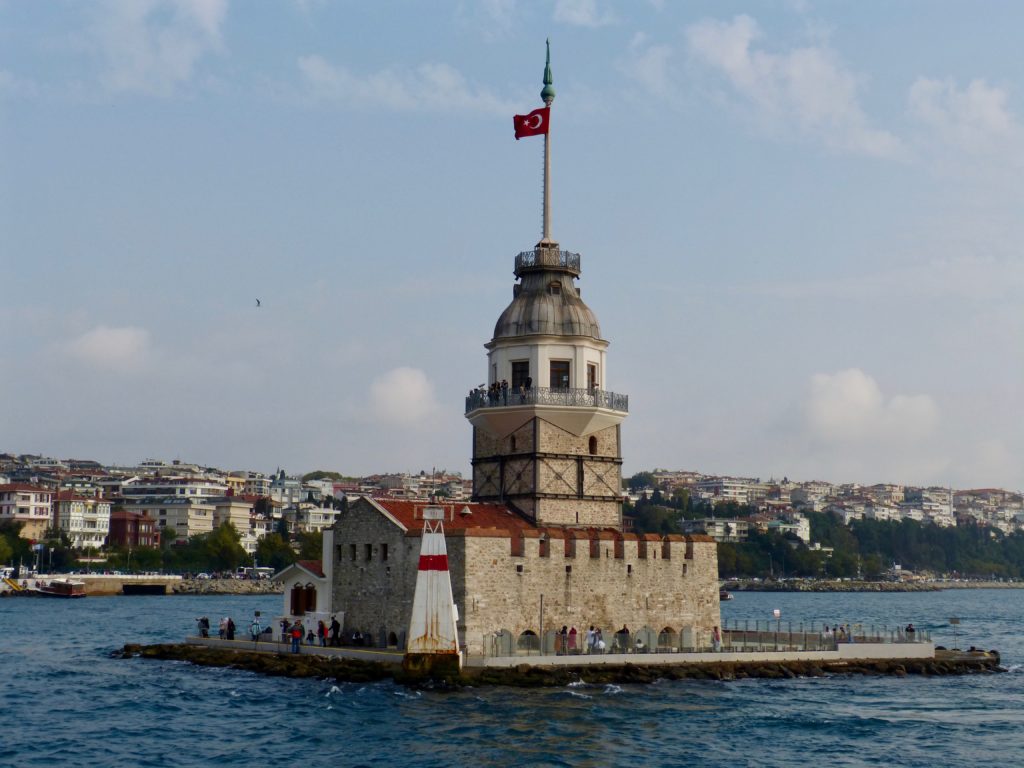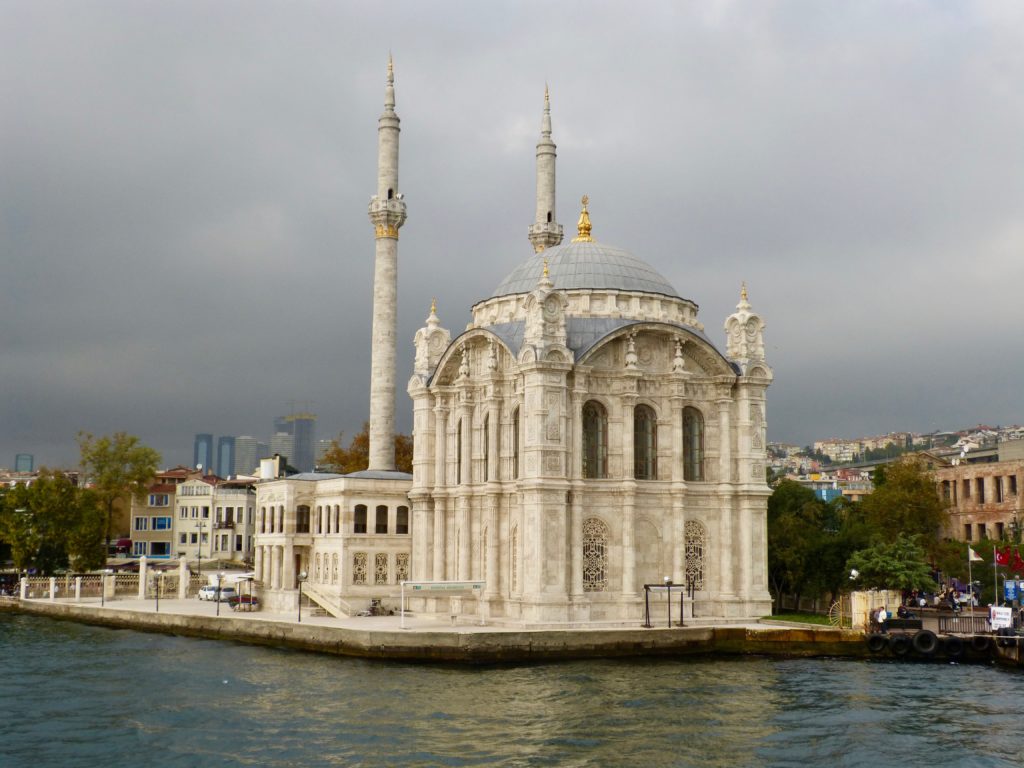I chose to go on this trip for two reasons. The itinerary first : It started in Athens, went to Israel, back to Greece and ended in Turkey. I had never been to Athens, nor in Israël so this was very enticing and I am always happy to go back to Turkey. The second reason was the ship : it was a five star line I had heard about but never tried before : Azamara! So off I went!
As I mentioned earlier, the first port was Athens, so we flew two days before to adjust to the time difference and visit this timeless city.
The flight with British Airlines was without issues, the change of planes in London went smoothly and we arrived in out hotel late enough to see the Acropolis all lit up. My only regret is that we did not attend a light and sound show. We had dinner in a lovely rooftop restaurant and tasted the best moussaka ever!
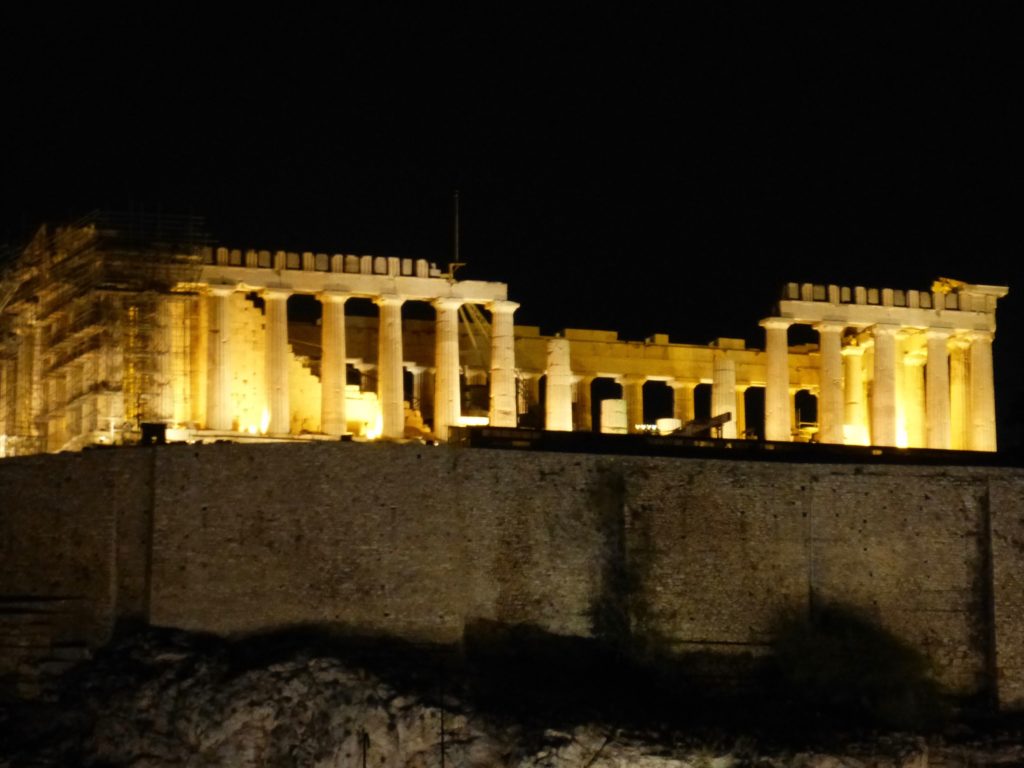
The next morning we set out on a hop on hop off bus tour. We drove by endless temples, monuments and statues. It is a beautiful city deserving a lot longer visit than our short 48 hours. I had to take a photo of the guards in their uniform and shoes with pompoms.
On our way to the Acropolis, we visited the Acropolis Museum, a beautiful bright and airy place. It is a steep walk to the Acropolis and an expensive visit but ohhh so worth it. The buildings are so beautiful and impressive and the view from up there so spectacular. You cannot help but go back in time and imagine yourself among the famous philosophers and their students.
Afterwards we walked through the Plaka, a busy area filled with restaurants, we also rode all the way to the Piraeus for fun as we knew we would be back there to board our ship. On the way back to our hotel we walked into a lovely church called Saint John Forerunner’s.
Next morning, we boarded our ship: the Azamara Journey. It is a small ship by cruise ship standards, but nicely appointed and with great service. Wine is included with meals, it is excellent and the selection varies, so for wine lovers this is an interesting perk. My only disappointment was with the bathrooms in our staterooms. They are minuscule, the kind where the shower curtain sticks to your behind…

We lifted anchor and were headed for Israel. After one day at sea and a short delay to drop off a sick passenger we reached Ashdod. This is the port to access Jerusalem.
But first we visited Jaffa/TelAviv. They are both beautiful seaside towns. We lingered in the old city of Jaffa, with its narrow streets and steeps stairs. It offers a nice view of tel-Aviv.
The next day we visited Jerusalem. This was to be one of the highlights of the trip for me. We had chosen the leisurely tour which is a decision I later regretted because we did not see as much as I would have liked. Yet the people who did take the more comprehensive tour said they had heard gunshots and were ushered away quickly…. So maybe the leisurely tour was not such a bad idea after all. In any case, here is what we did see: our first stop was the Mount of Olives which offers an excellent view of Jerusalem. Or rather its walls…The olive trees are, not surprisingly, old and gnarly… We visited what I think is the Gethsemani basilica, before heading for the Western Wall, also known as the Wailing Wall. This has been a site for Jewish prayer and pilgrimage for centuries. It is considered sacred because of its connection to the Temple Mount.
I could not help notice the segregation of men and women… I was not surprised, on the other hand, by the orthodox men in full costume as I live near an orthodox neighborhood back home.
After leaving the site we were driven to the Knesset Menorah, which is a visual “textbook” of Jewish history.
We sailed a short distance over night and arrived in Haifa early in the morning. The port is a busy industrial one, this being the third largest city in Israel, but the attractions lie inland. Our first visit was at the Stella Maris Monastery and the second, a real showstopper: the Bahai Gardens! These comprise a staircase of nineteen terraces. The golden domes Shrine of the Bab stands on the central terrace. The approach to that circular garden is a long straight path framed with cypress trees and a variety of greenery. The gardens frame panoramic views of the city.
After getting back on the bus we drove north to Acre, one of the oldest cities in the world. The name comes from the crusaders who had their headquarters there. The old fortified walled city is amazing!
Afterwards we walked through the streets, the food markets,
Then back underground through a tunnel before coming up in the port….
And back on board our ship, direction: Paphos in Cyprus! Our fist visit there was an archeological site. Most of it outdoors, save for the main attraction: the mosaics, that are protected from the elements. These mosaics adorned houses that must have belonged to wealthy citizens of Paphos or to some powerful Romans. They are amazing!!! The details…and the amount of work that went into them is beyond belief!
Next we drove over to a very picturesque church.
After which we visited another archeological site, Kato Pafos Necropolis, Tombs of the kings, the view of the ocean was unbelievable…
Our next stop came after a long drive was at the Anassa Resort, a luxurious estate with spectacular views of the sea. It is said to be the retreat of movies stars. It is easy to see why…it is secluded, gorgeous and spectacular!
Our next stop came after a long drive and it was at the Anassa Beach Resort…with once again a spectacular view of the sea. It is said to be the retreat of movies stars. It is easy to see why…it is secluded, luxurious and spectacular!
And that concluded our stay in Cyprus. We lifted anchor again, this time heading for the Turquoise coast of Turkey, near Antalya. We dropped anchor in Kas, a small fishing, diving and yachting town. I chose a boat excursion. We sailed by archeological sites, even some underwater !
This is a lovely landscape…even at night!

Rhodes, in Greece was our next port of call. It turned out to be one of the highlights of the trip for me. Rhodes has been famous since antiquity as the site of the Colossus of Rhodes, one of the seven wonders of the world. Its citadel, is one of the best preserved medieval towns in Europe, is where the Knights of St John of Jerusalem stayed between 1309 and 1522 on their way to and from the crusades to Holy Land. We started with a visit to the site of Kamiros, a Doric city during the 5th century BC.
Our next stop was the old town. We entered through the Amboise gate.
Then we explored on our own….
Back on board we set sail for Patmos in Greece. This time we did not take a tour, we just hopped in a cab and went to visit the Grotto of St John The grotto is built around a sacred cave where the disciple is said to have composed the book of Revelation. The view is spectacular.
Afterwards we climbed up to the St John’s monastery and that was even more spectacular!
This concluded the greek portion of out trip. We were now headed for Turkey. Our first stop was Kusadasi. Although a pleasant port city, the main attraction is Ephesus, an impressive archeological site. The city is believed to date back before the 10th century BC. The ruins we can see today are of the city established by Lyssimachos, one of the generals of Alexander the Great. This was to be my third visit to Ephesus, so I added a visit to the Terrace Houses which I had never seen before. But first we visited the main attractions, one of which, of course being the Celsus library.
On the way back we managed to avoid the House of the Virgin Mary but not the carpet factory!
After a pseudo historical evening show we set sail again, this time for Dikili, Turkey, and here we went to visit first the Acropolis and then the Asklepion of Pergamum.
Asclepeions, named after Asclepius, a very skilled doctor, were healing temples in Ancient Greece. They included carefully controlled spaces conducive to healing, such as a sleep temples, baths and gymnasiums. Rumour has it that the road leading to it was excessively long so that people who were too sick would not make it, thus safeguarding the center’s reputation.
We lifted anchor one last time, in direction of our last port of call: Istanbul, unaware that the most upsetting event of the trip was about to happen. We crossed paths with a boat full of refugees/migrants/ asylum seekers, I am not sure what their status was, but they were obviously fleeing in a small overcrowded raft in the middle of the Mediterranean. The captain informed us that we had to stay close to them until the coast guard could arrive and take charge of them. (Cruiseships are equipped to take them on board if need be). It broke my heart to think we were in a luxurious ship while they were paddling to save their lives.

The coast guard did appear, and we continued our route to Istanbul. Istanbul, formerly known as Byzantium and Constantinople, is the largest Turkish city straddling Europe and Asia, separated by the Bosphorus Strait. Its old town reflects the cultural influences of the many empires that ruled Istanbul. In the Sultanahmet district, the open-air racetrack dating from Roman times has hosted chariot races for several centuries, and Egyptian obelisks are still standing. The iconic Byzantine Hagia Sophia Museum includes an imposing 6th century dome and rare Christian mosaics.
As a side note I have to mention that I was quite sick by then so I was not able to enjoy Istanbul as much as I had hoped. But here is what I DID manage to visit, mostly after a couple of days in bed.
We were greeted by the splendor of Hagia Sophia as we sailed in.

Once docked, and off on our tour, we first stopped at the Hippodrome of Constantinople to admire the Obelisk of Theodosius. This is the ancient Egyptian obelisk of Pharaoh Thutmose III re-erected in the Hippodrome of Constantinople by the Roman emperor Theodosius I in the 4th century AD
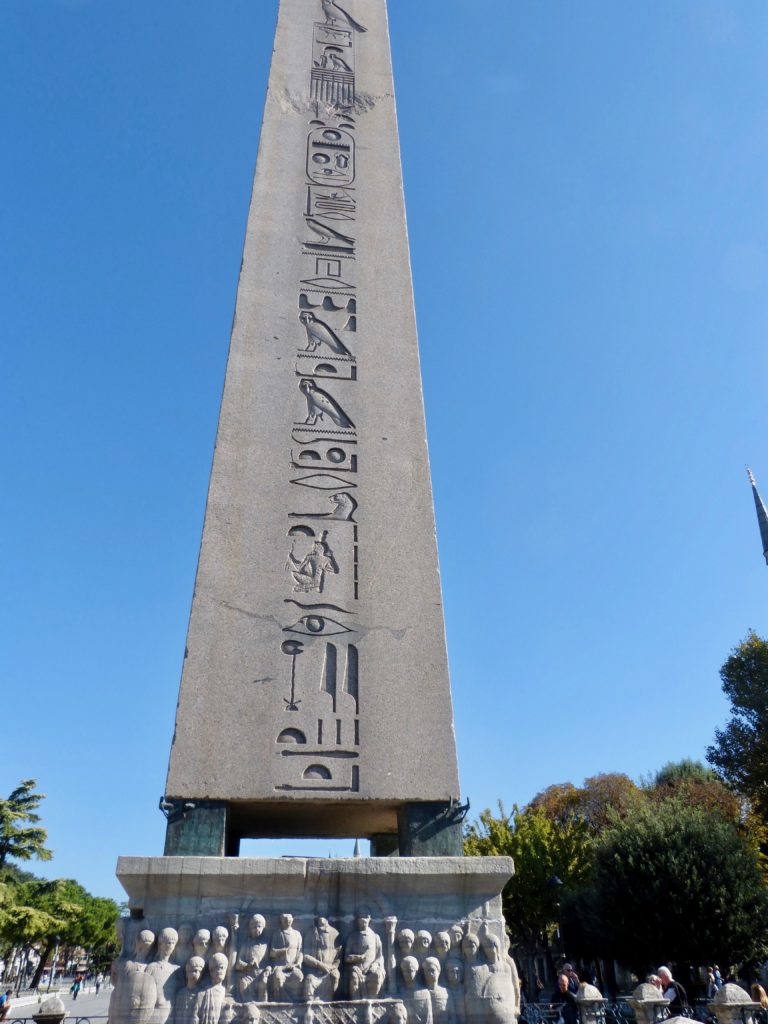
And our first visit was the Sultan Ahmed Mosque also known as the Blue Mosque. It was constructed between 1609 and 1616 during the rule of Ahmed 1. Hand-painted blue tiles adorn the mosque’s interior walls, and at night the mosque is bathed in blue as lights frame the mosque’s five main domes, six minarets and eight secondary domes.
It sits not very far from Hagia Sophia, another popular tourist site: This former Greek Orthodox Christian patriarchal cathedral, later an Ottoman imperial mosque is now a museum. It is famous for its large dome. Built in AD 537, during the reign of Justinian, it was the world’s largest building and an engineering marvel of its time. It is considered the epitome of Byzantine architecture and is said to have “changed the history of architecture”.
The following visit was a first for me: the Basilica Cistern, a large underground cistern built by Byzantine Emperor Justinian 1 (527-565) also known as Yerabatan Palace due to the marble columns raising from the water. It is spectacular!!
Later in the week, I paid a visit to Topkapi Palace, which was started in 1460 at the request of Fatih Sultan Mehmet, and was completed in 1478. It was the administrative, educational and artistic center of the empire for about four hundred years; it was also the home of the sultans. The dynasty moved to Dolmabahçe Palace in the mid-19th century. Nowadays it is a museum. It is huge, with courtyards after courtyards, and numerous buildings. It is impossible to see everything in one visit but as I had visited before but had never been in the Harem, this is where I spent my time.
The harem, occupied one of the sections of the private apartments of the sultan and was home to the sultan’s mother; the concubines and wives of the sultan and the rest of his family, including children and their servants, as well as the euneuchs guarding the harem; It contained more than 400 rooms. What impressed me the most was the tile work!
No trip to Istanbul is complete without a visit to the Grand Bazaar, one of the largest and oldest covered markets in the world, with 61 covered streets and over 4,000 shops.
I was still a bit wobbly when I got there and was a bit confused by all the shops that were closing up. I did not notice right away the call to prayer and the numerous men washing their hands and face and hurrying about. I just followed the flow, not wanting to get locked up alone for the night, and having no idea where the exits were. Finally I exited to the outside, still following the heard, I was offered a prayer mat… and only then did I realize that all these men were headed for prayer and about to enter the mosque!! Needless to say I did a quick about face and galloped in another direction.
The next day we visited another important building I had never visited before: Dolmabahçe Palace. It was ordered by the Empire’s 31st Sultan, Abdülmecid 1 and built between the years 1843 and 1856. Previously, the Sultan and his family had lived at the Topkapi Palace, but it was lacking in contemporary style, luxury, and comfort, as compared to the palaces of the European monarchs, Abdülmecid decided to build a new modern palace. It was home to six Sultans from 1856, when it was first inhabited, up until the abolition of the Caliphate in 1924. Mustafa Kemal Atatatürk, the founder and first President of the Republic of Turkey, used the palace as a presidential residence during the summers and enacted some of his most important works here, he died there on November 10, 1938.
It is a very luxurious palace, but I think we were not allowed to take photos inside (as I have none to show).
The last visit on my to do list was the Spice Bazaar. So many colours and smells! It was a great experience!
Speaking of food that evening we went to eat in a lovely and very animated area called Istiklal avenue, with more tempting dessert displays.
On our last day we took a cruise on the Bosporus, also known as the Strait of Istanbul, it forms part of the continental boundary between Europe and Asia, and divides Turkey by separating Anatolia and Thrace. The Bosporus connects the Black Sea with the Sea of Marmara and, by extension via the Dardanelles, the Aegean and Mediterranean seas. It is straddled by the city of Istanbul’s metropolitan population of 17 million inhabitants extending inland from both coasts.
Speaking of the Bosporous, I also got to cross over it on a bridge thus landing in ASIA! I had never crossed from one continent to the other by land before!
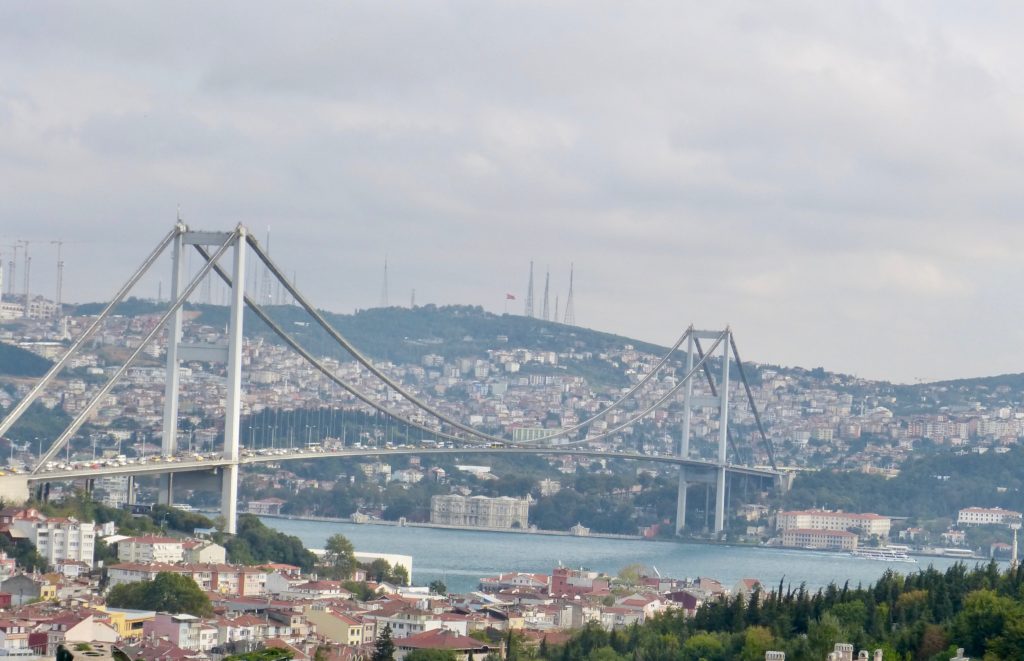
And this was the end of a very exciting trip, on a wonderful ship with an amazing itinerary! We did get a little more excitement than expected when we first had a medical emergency on board, which forced us to double back to port, then met with the refugee boat and had to wait for the coast guard, and finally when we reached Istanbul and it was in the middle of riots and unrest so we were on high alert whenever we went onshore. But that did not deter me: Istanbul is still one of my favourite cities and I should add that Topkapi is my favourite palace!

